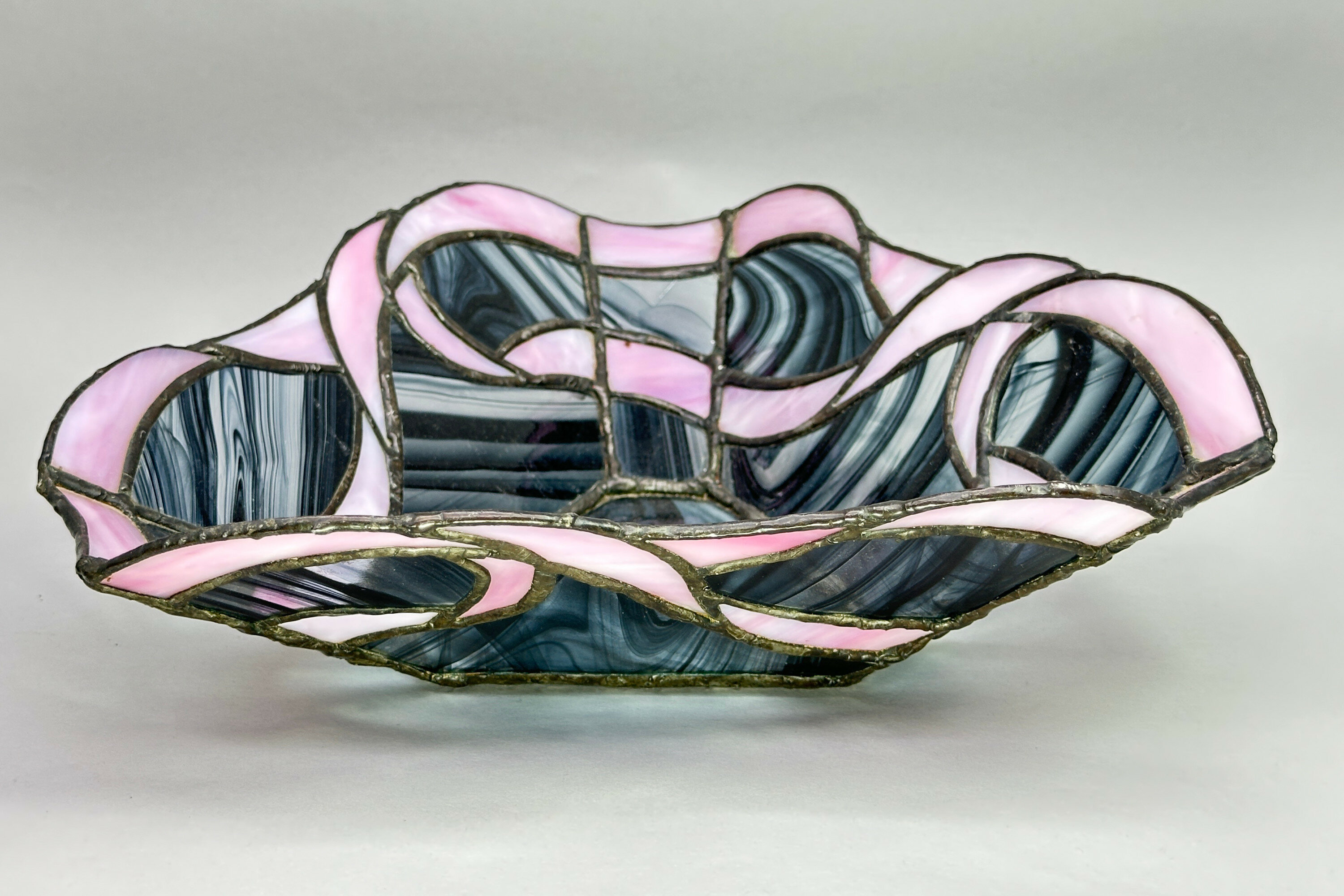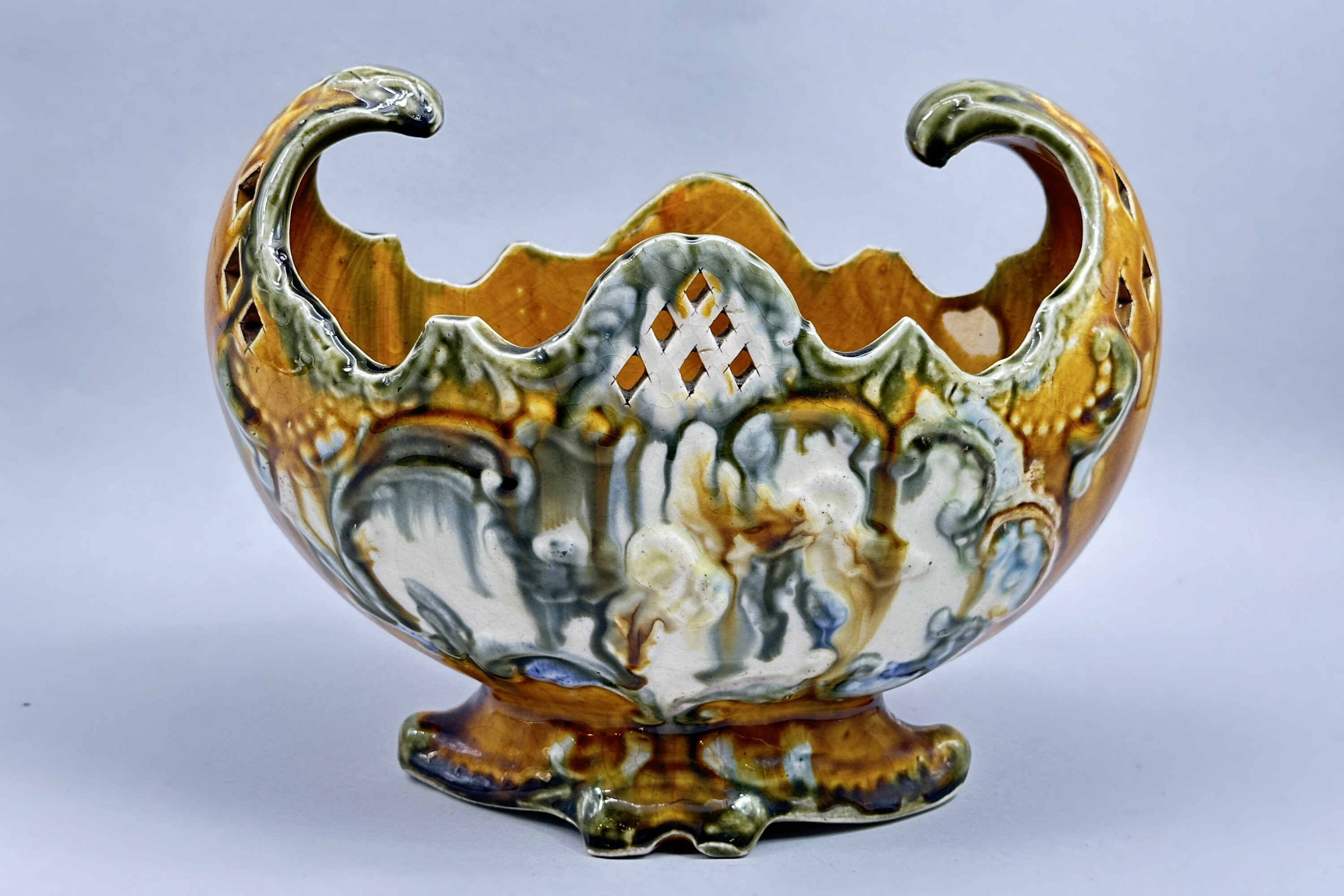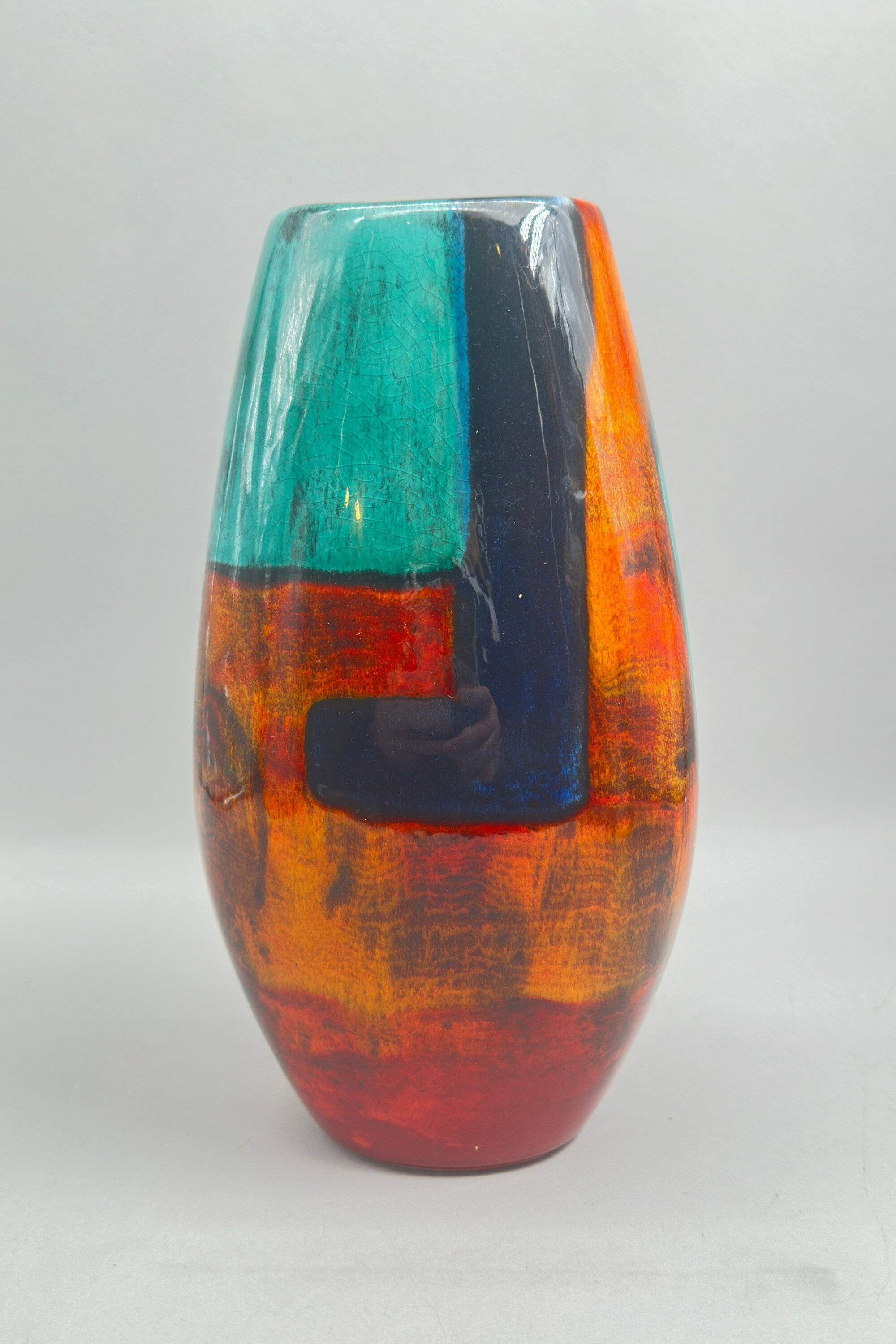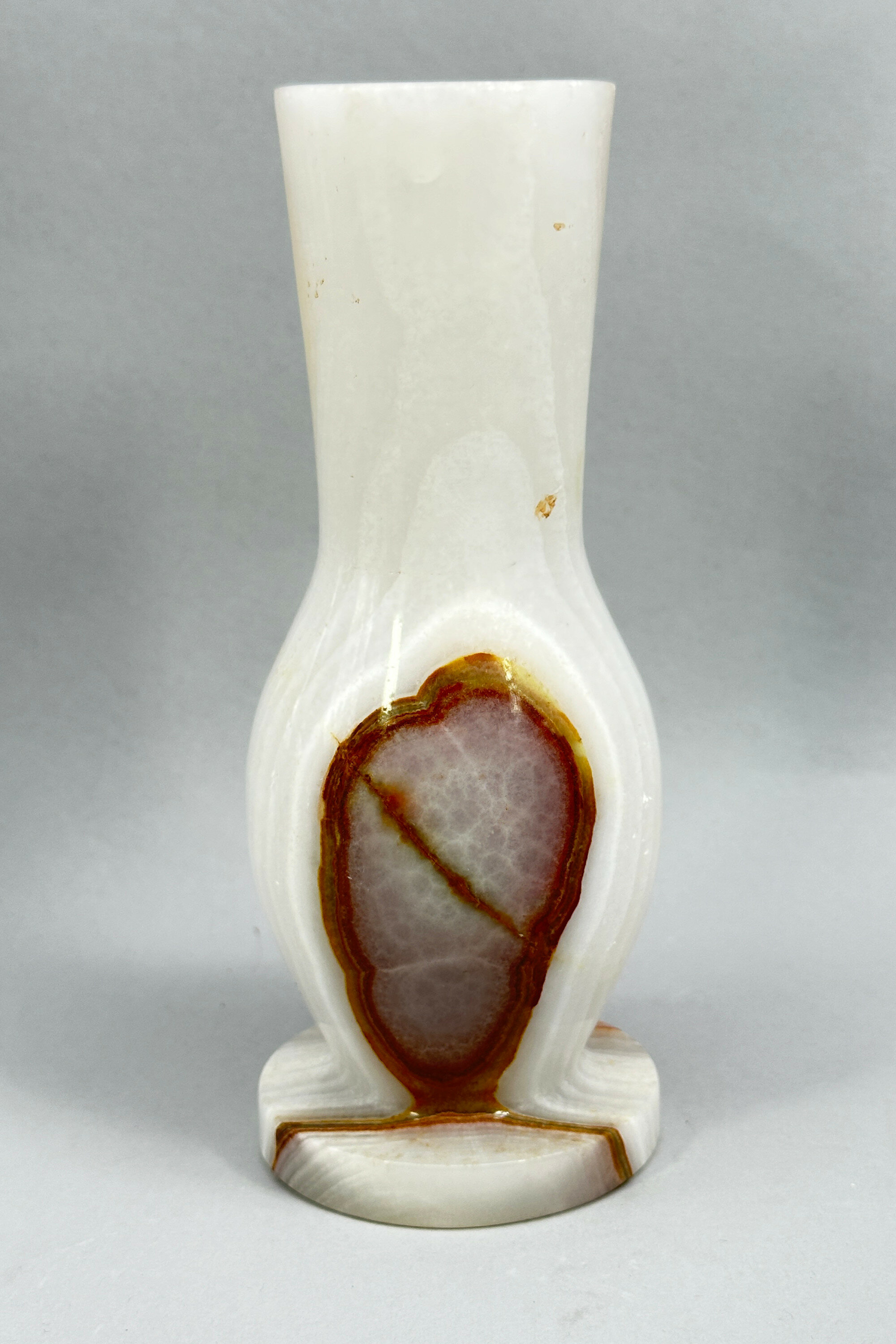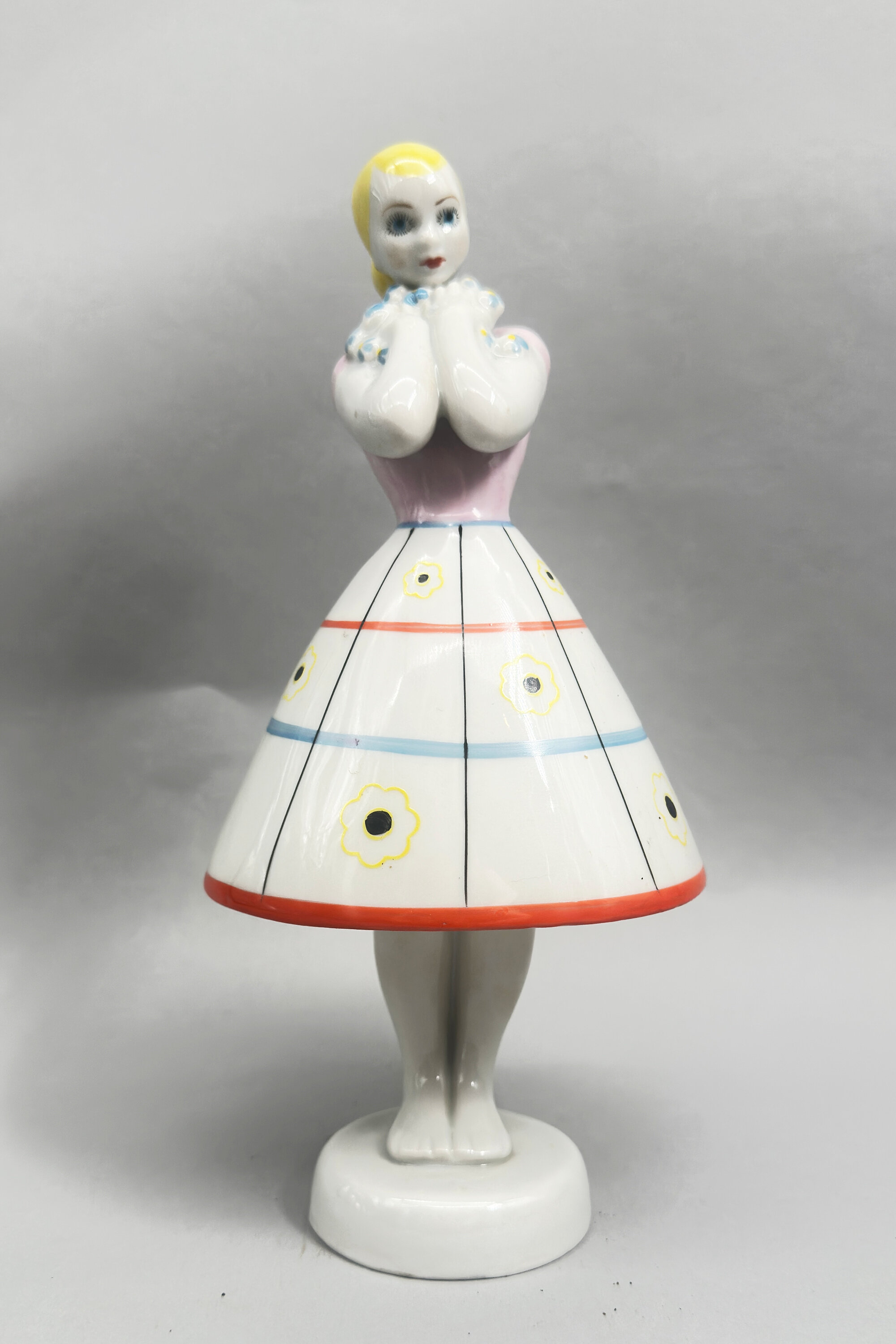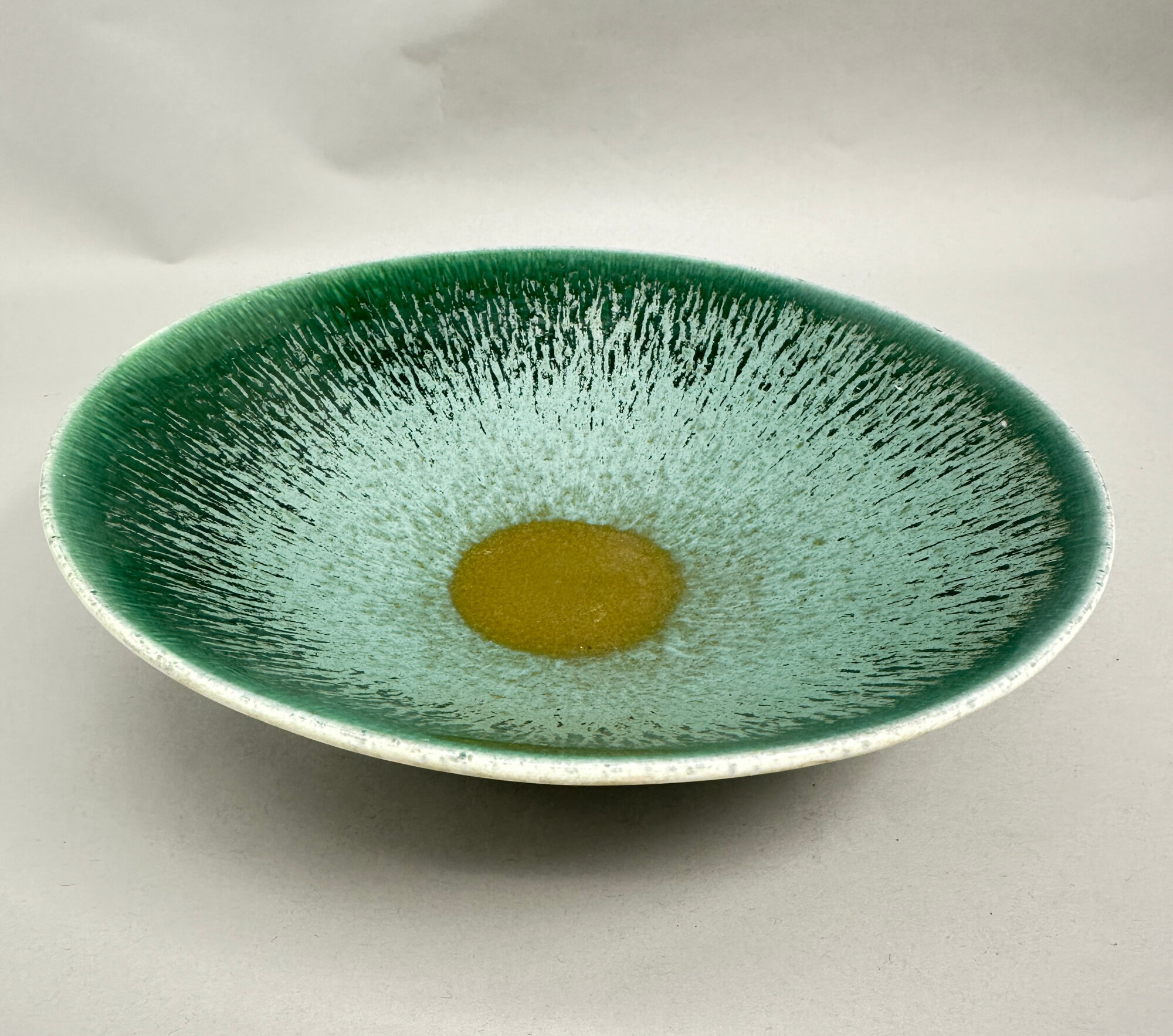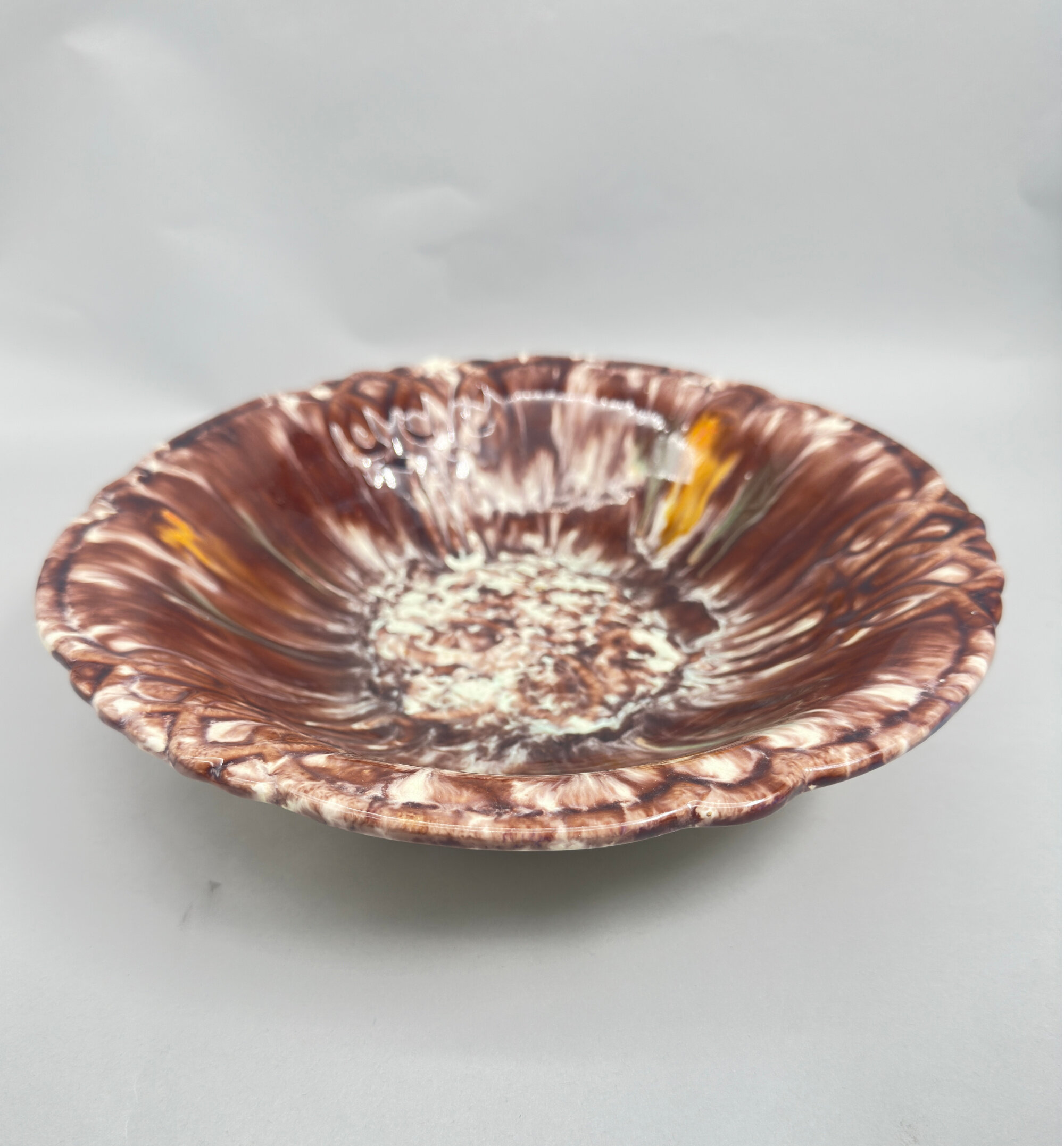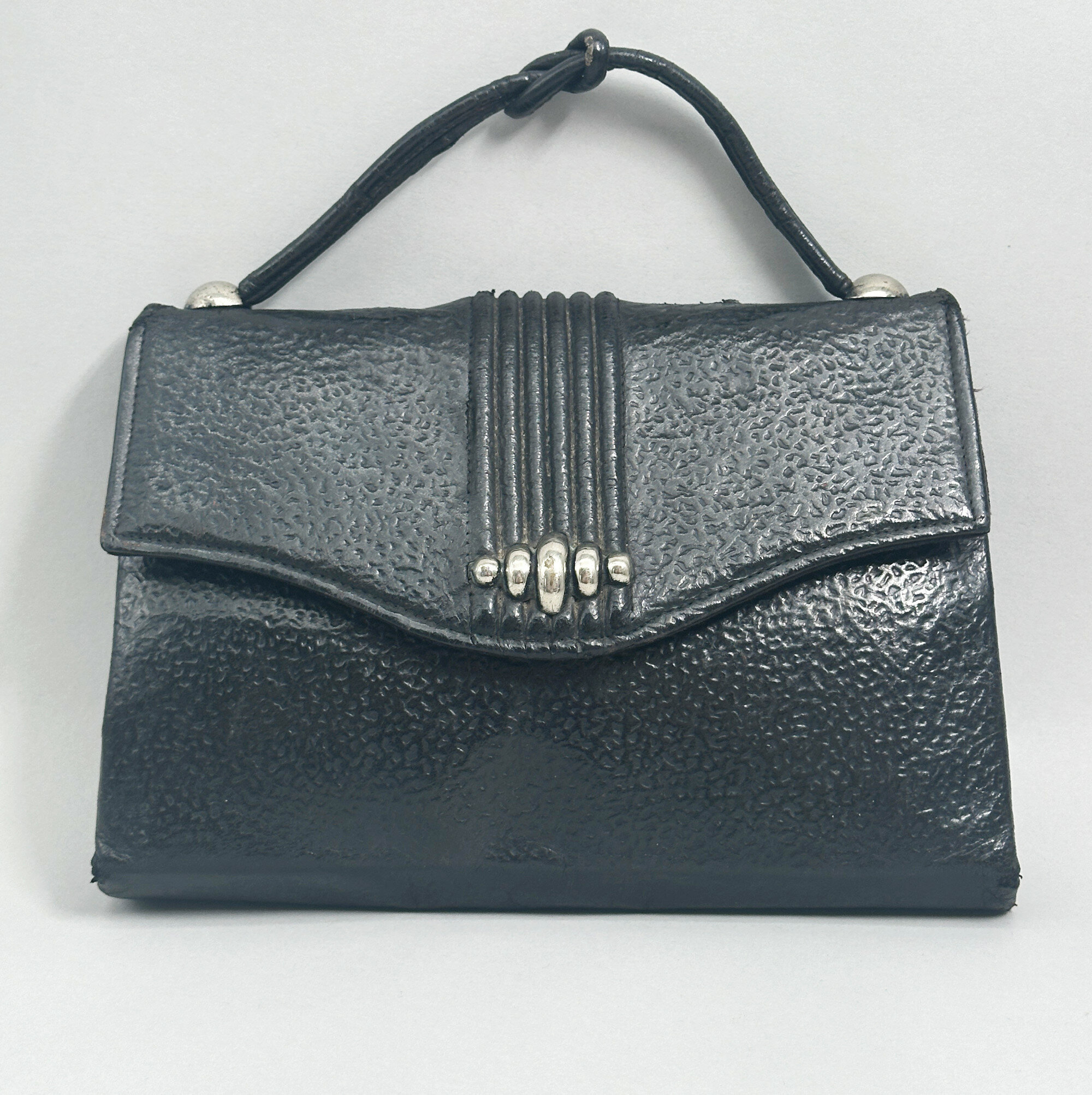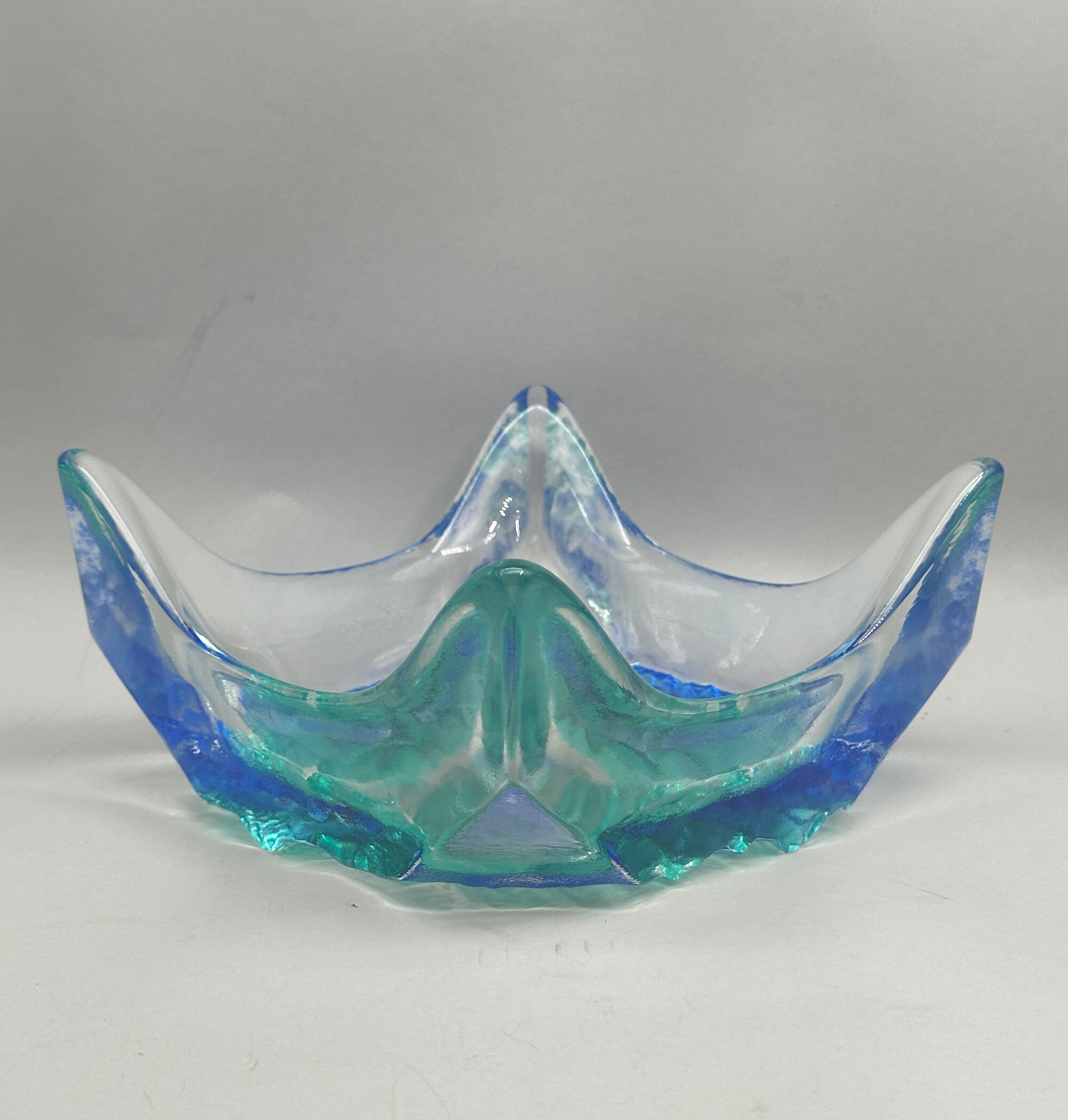
Blue and Green Ice Glass Square Bowl, possibly Pukeberg, late C20th
Price: £45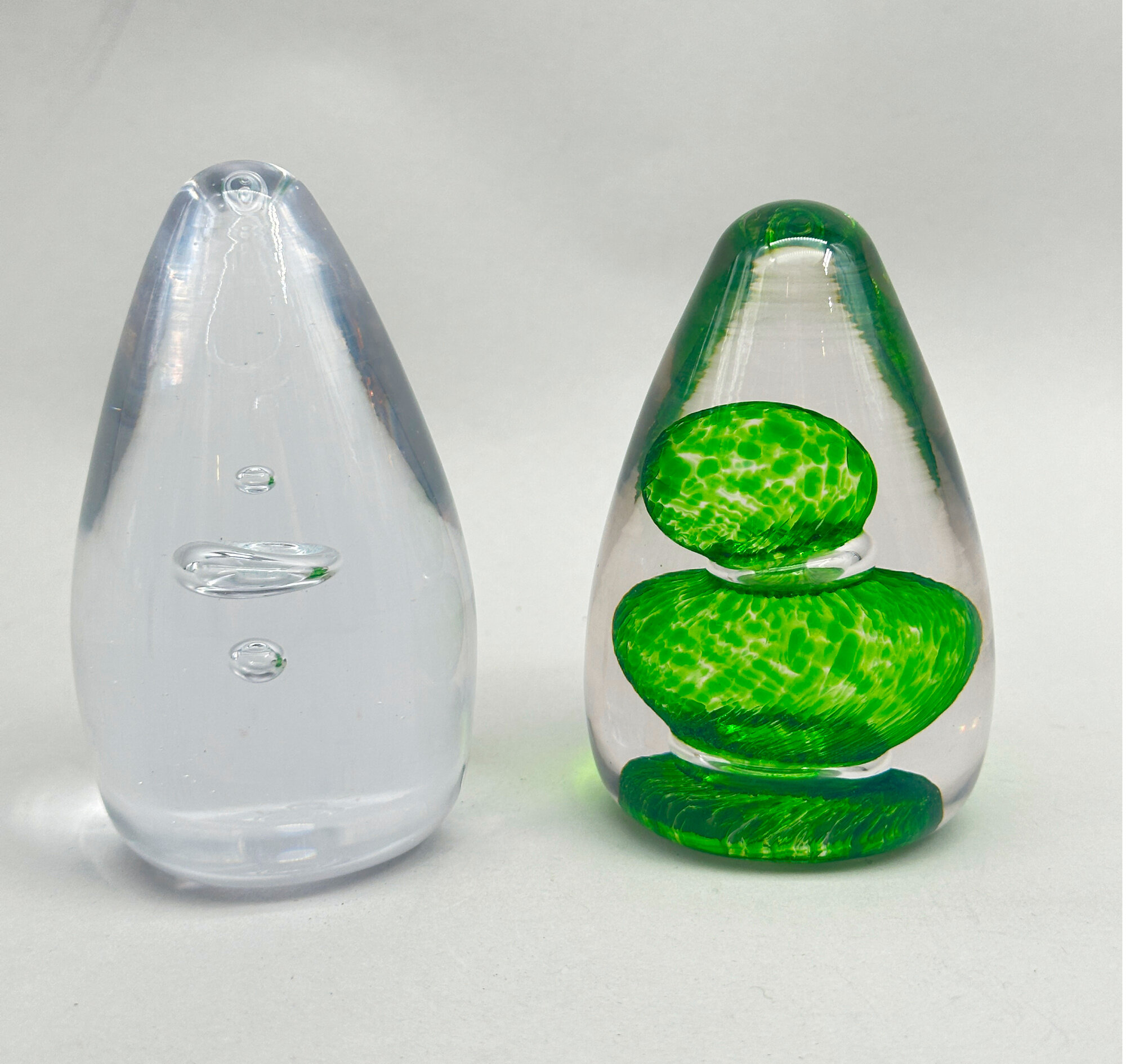
Two Wedgwood Glass paperweights designed by Ronald Stennett-Wilson, late C20th
Price: £40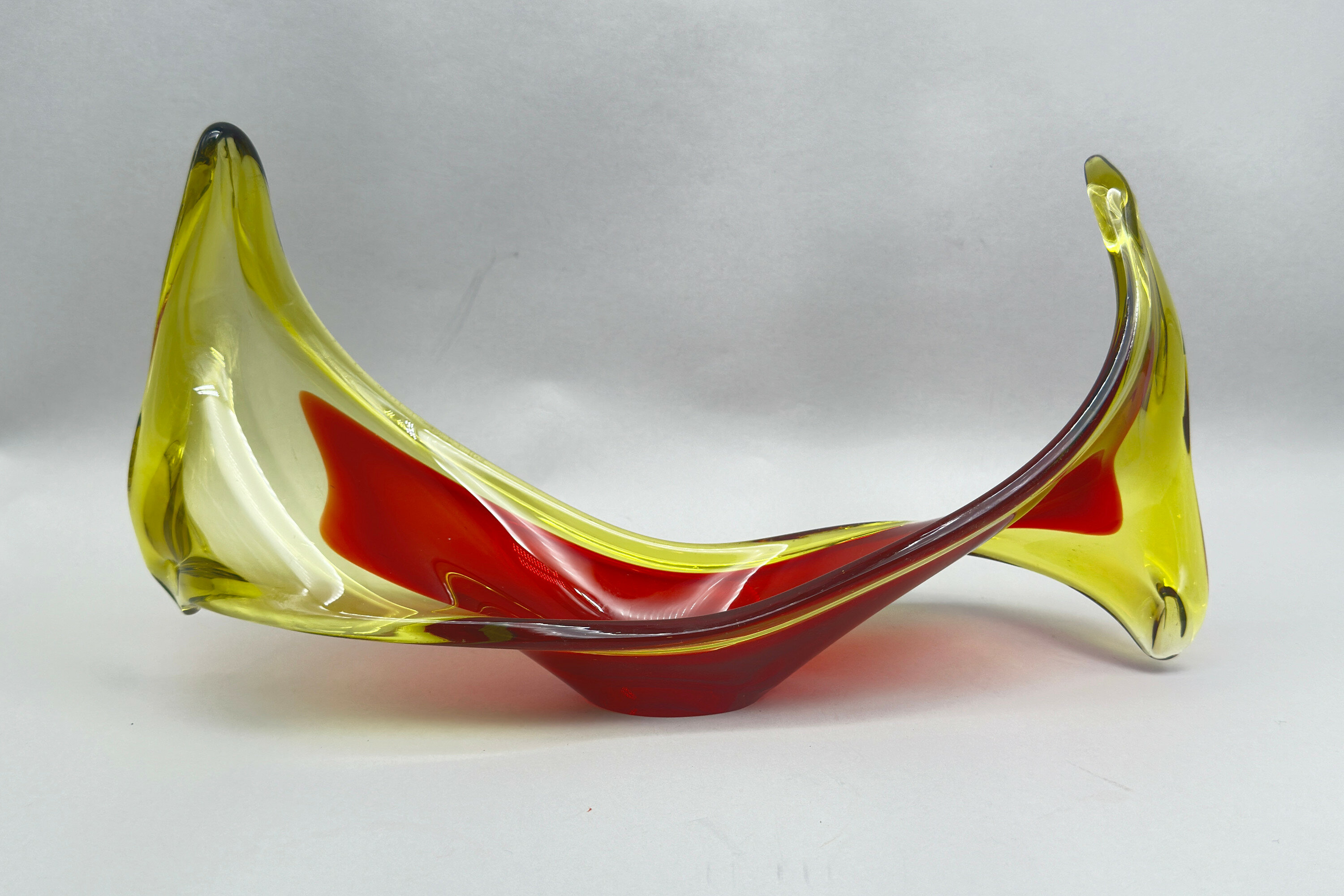
Viartec Murano Style Selenium Red & Orange Glass Sculptural Dish, Spanish 1950s/1960s
Price: £45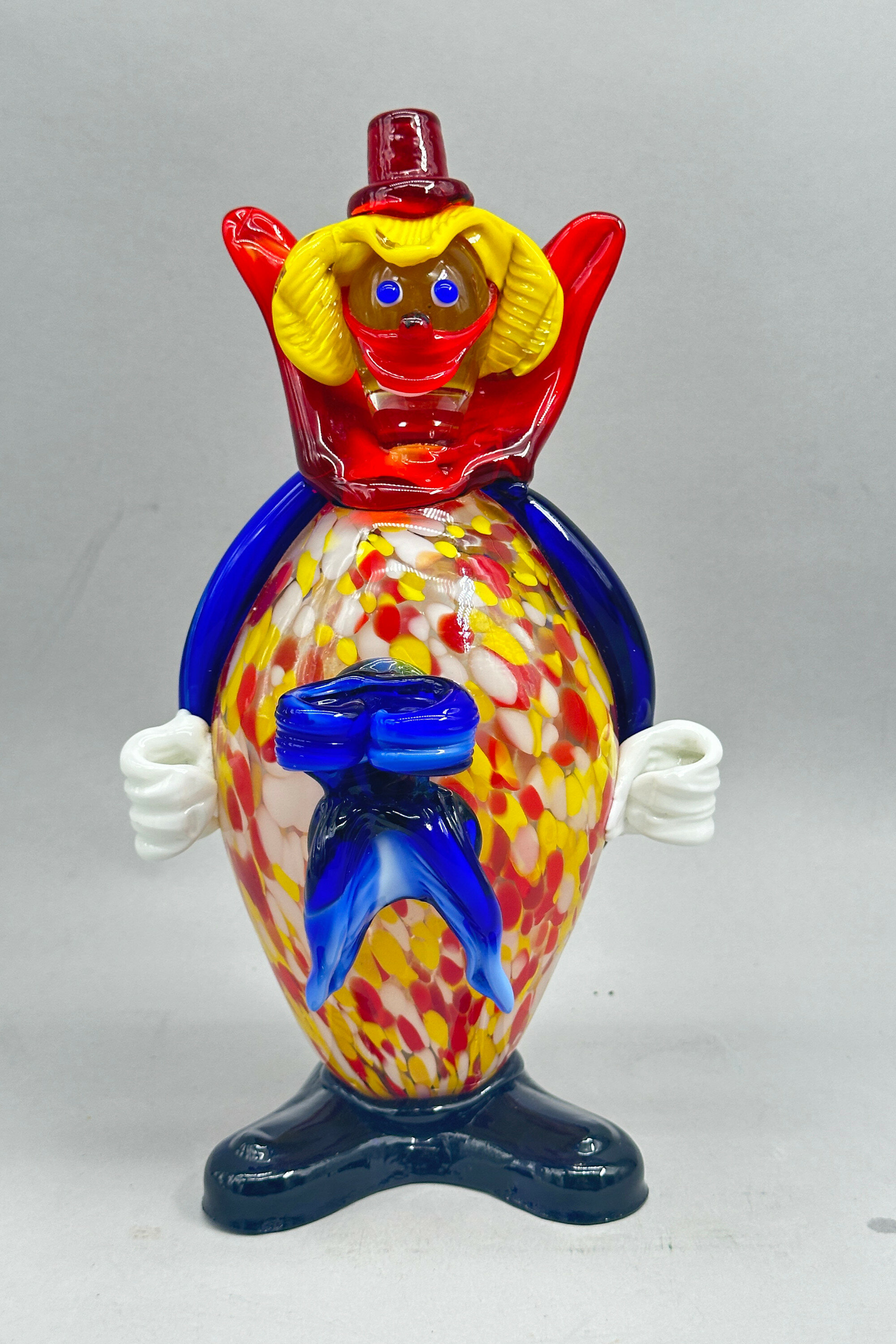
Murano Glass figure of a Clown, mid C20th
Price: £125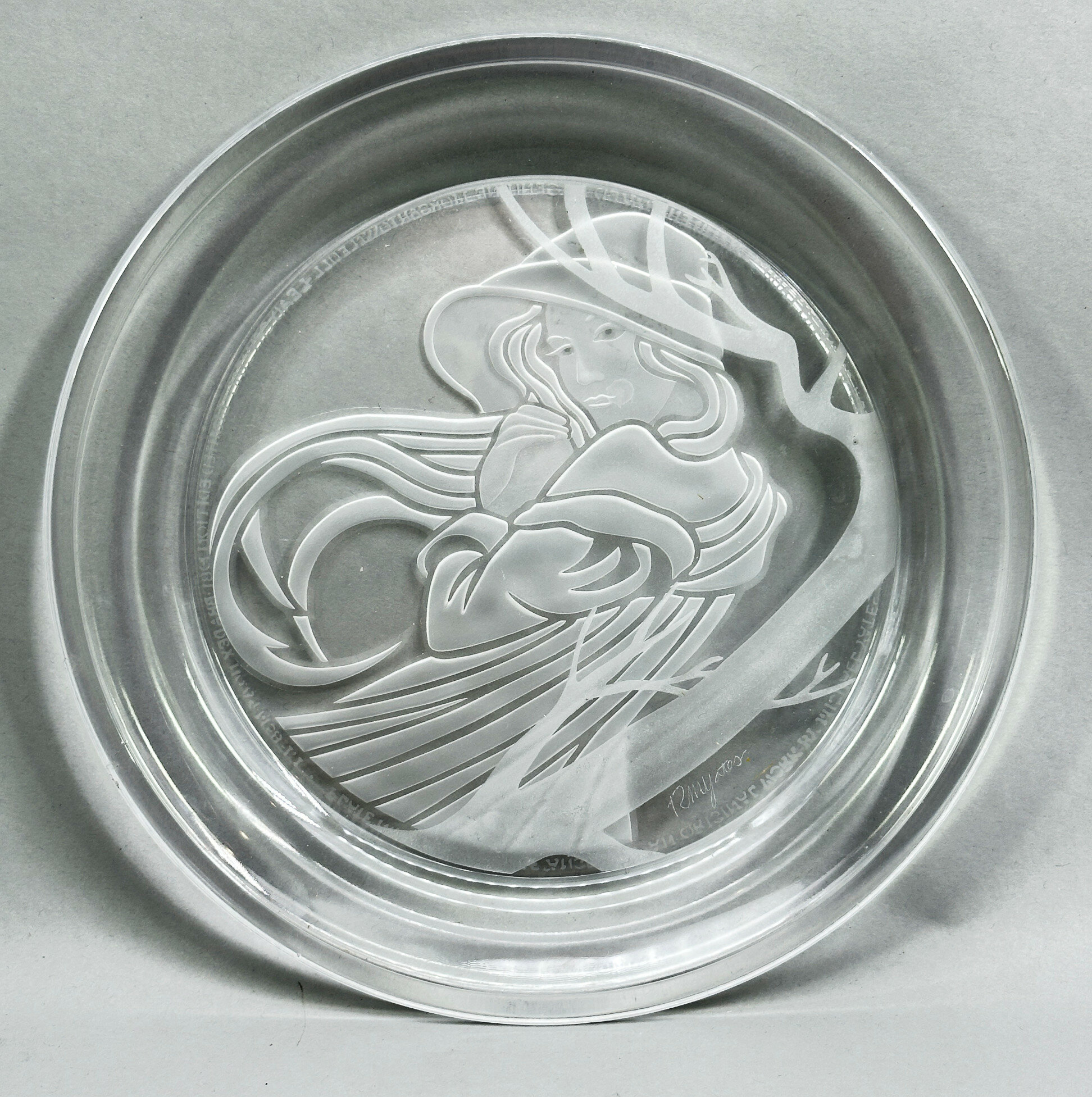
Engraved Glass Dish, Angelica, by Michael Yates, Country Ladies Series, 1981
Price: £20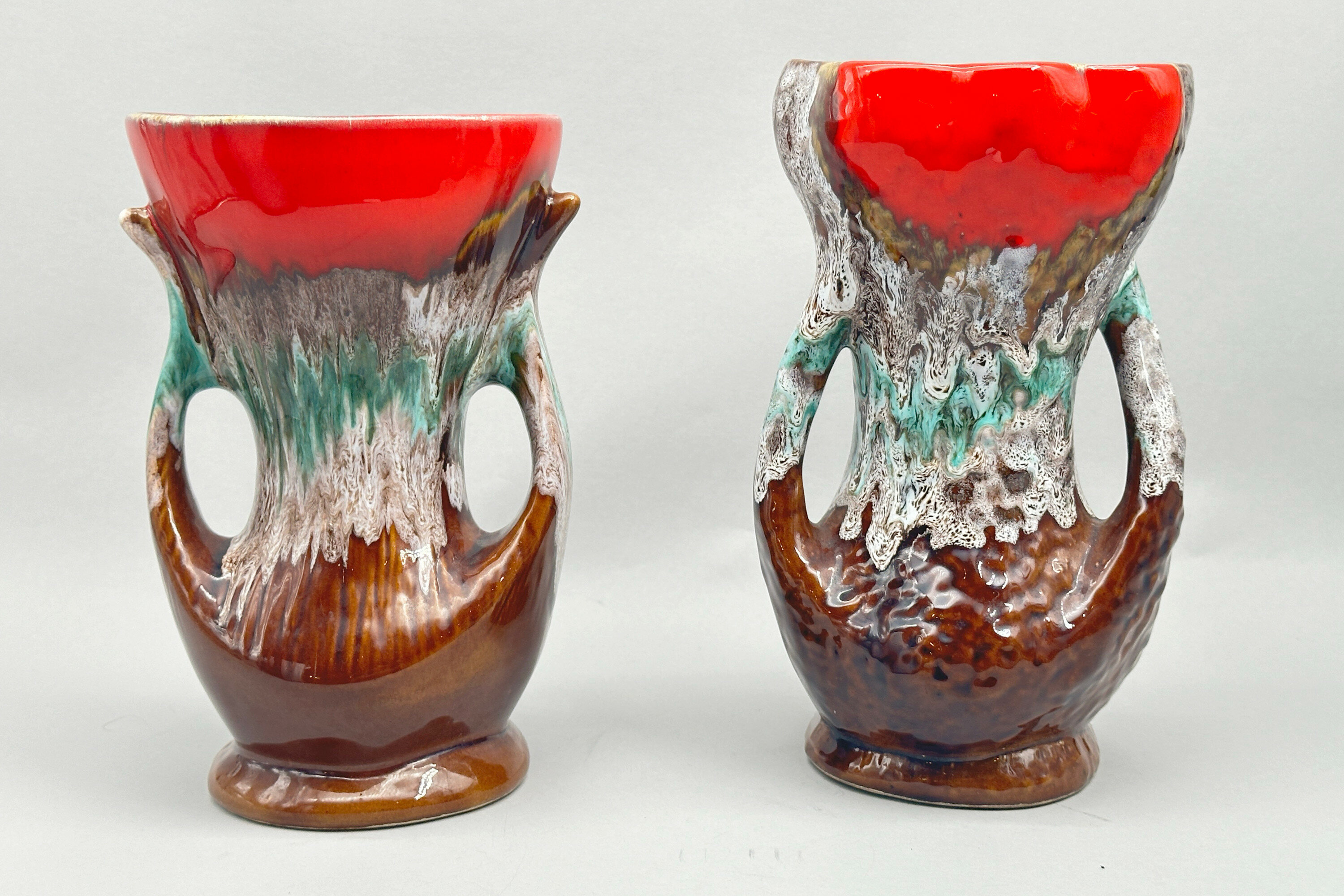
Two Vallauris Lava Vases, French 1950s/1960s
Price: £150………………………………………………………………………………………………….....................................................................
Vallauris is a tourist town of the French Riviera near Antibes taking its name form the Provencal ‘Valauria’ meaning ‘the golden valley’. It is divided into two parts: the upper town which is the old centre and the seaside district which runs from the port along the coast, towards Antibes. Deposits of clay were found there in Roman times giving the impetus for the creation of potteries which tended to concentrate on domestic wares. Production was then continuous with an infux of craftsmen from Genoa, Italy, in the sixteenth century and the development of artistic activity in the seventeenth. The advent of the railways in the late nineteenth century led to an even further expansion of production and companies were established there which achieved widespread fame and recognition notably those of Massier and Foucard-Jourdan.
After the war, Picasso, along with a group of fellow artists, settled in Vallauris and it proved to be a congenial stimulus. He began to experiment with producing ceramics in 1947 and was to continue working extensively in this field until his death in 1973 (see image 12). There were collaborations, one with the ceramicist Robert Picault and another with Suzanne and Georges Ramié, the owners of the Madoura workshop, where Picasso worked on his productions. Indeed it was at the Madoura workshop that Picasso met Jacqueline Roque, a saleswoman working there and 44 years his junior. They married in 1961 and remained together until his death in 1973, Jacqueline being the inspiration for many of the designs which Picasso created.
It would be fanciful, though, to see the influence of the famous artist on these vases although they were very much created in the tradition of Vallauris pottery with which he was so in sympathy. The town seems to have become particularly fashionable in the 1950s and 1960s and it was around that time that these vases were made. Many pieces were created in lead glazed earthenware, the overall decoration resembling the ‘lava’ glazes used in West German pottery of the same period. These two vases are similar and complementary. The bodies are concave with a short foot and a widely flaring mouth; there are loop handles at each side. The brown glaze at the base is succeeded by a blend of mottled greens and greys and topped with a vibrant red at the mouth. The interiors are glazed brown as is the base with the unglazed foot rim showing the fairly coarse clay used. Some but not all Vallauris pieces are marked and there are many unmarked examples as here. Considerable skill must have been required to produce the variety of glaze effects and the results are striking. As two matching items, these vases have considerable decorative appeal and are worthy examples of a long established tradition of ceramic production.
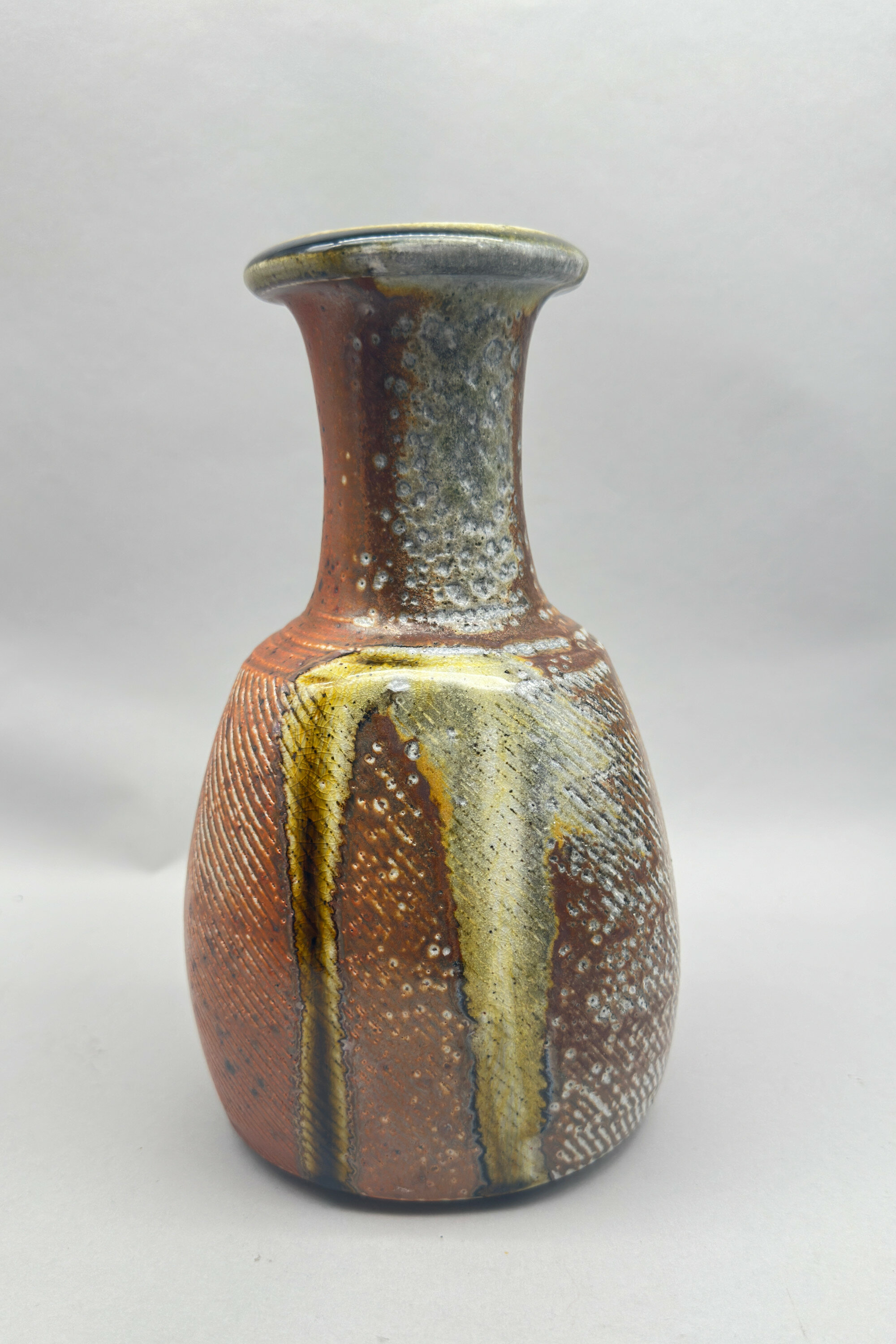
Studio Pottery Vase by John Jelfs, signed, late C20th
Price: £220……………………………………………………………………………………………..................................................................................................................….
John Jelfs was born in Exeter, Devon in 1946 and studied ceramics at the Cheltenham College of Art. In 1973, alongside his wife Jude, also a skilled potter in her own right, he set up his own studio, The Cotswold Pottery Company, in the Cotswolds at Bourton on the Water, from where he has been producing ceramics in a wide variety of forms for over fifty years and still continues to work today. Every piece of his pottery is unique, being made entirely by hand and with the decoration kept to a minimum. Wherever possible locally sourced ingredients of clays, limestone and woodash are used for his glazes of celadon, ochre and shino (a white colour glaze developed in Japan sometimes with red,orange or black spotting).
Jelfs writes himself “From my first exposure to studio pottery I was immediately excited by the work of the late Bernard Leach and his lifelong friend the Japanese potter Shoji Hamada. It was the strength and quietness of their pots which most excited me about their work. For the past few years, I have been concentrating on a range of forms, to which I have applied olive/celadon, ochre and shino glazes made up from wood ash and clay, ingredients both local to my studio. The pots are all hand-thrown from a blend of West-country clays, and are often altered while still soft on the wheel. They are fired twice, the first to biscuit (1000 degrees centigrade) and the second firing to stoneware (1300 degrees Centigrade) in a gas kiln. I use a long firing cycle as this brings out the subtlety and depth in my glazes.”
In more recent years, the construction of a new kiln allowed Jelfs to develop the use of ‘soda glazes’, a complex firing process in which a vapour glaze made of sodium oxide (soda) glazes the clay body of the pottery during the firing process. Sodium materials are introduced into the kiln, usually with a nozzle, at a high temperature of over approximately 1280°C (2350°F). The soda then evaporates and the flame carries the vapour within the kiln, landing on the hot pottery pieces where it fuses with the materials in the clay and any slip decoration applied to it. The soda vapours are colourless and it is the reaction on contact that produces a wide range of colours and textures.
“Since the soda fuses to the surfaces of the work in this way, it blurs the line between pot and glaze/surface; they become one.” — Harrison Levenstein
This elegantly potted vase is a prime example of the technique and the wide variety of glaze effects and textures can be seen and admired. As often, the base is unglazed and in this case marked with the artist's stamp ‘JJ’. The earliest pieces were given an impressed ‘swan’ mark soon to be followed with the wording ‘Bourton on the Water’ in addition. The simple mark of the artist’s initials seems to be later which fits with the use of the ‘soda glaze’ technique developed some years after the pottery studio was set up. Jelfs' work has been widely exhibited in leading galleries including Galerie Besson and the Victoria & Albert Museum in London, Alpha House in Sherborne, Beaux Arts, Bath, and the Rufford Ceramics Centre in Nottingham. It is also included in many collections around the world and our vase would make a fine addition to any of them.

Pair of Royal Doulton Vases decorated Cherries, early C20th
Estimate: £60 – 80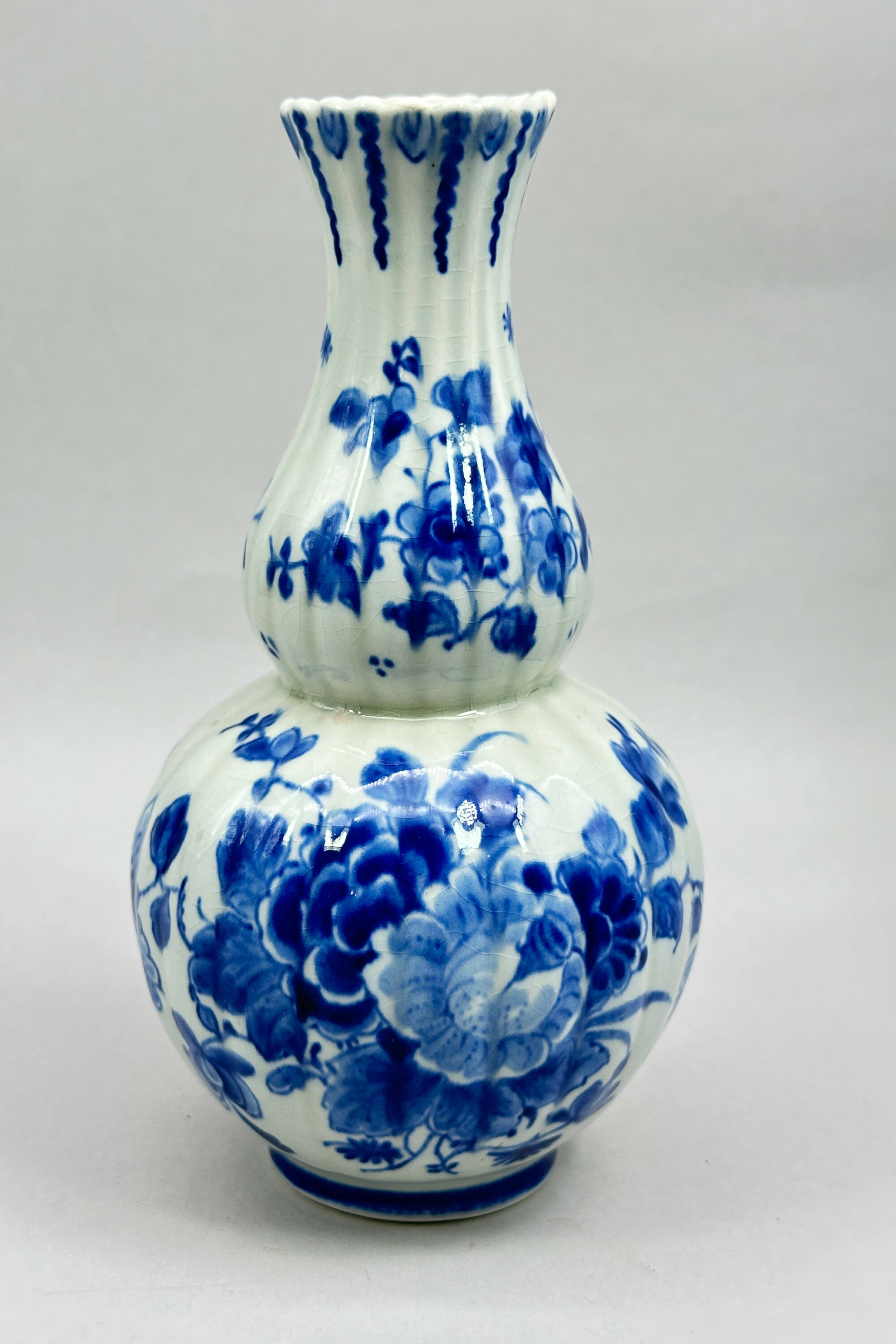
Dutch Delft Blue and White Gourd Vase in C18th Style, late C20th
Estimate: £20 – 30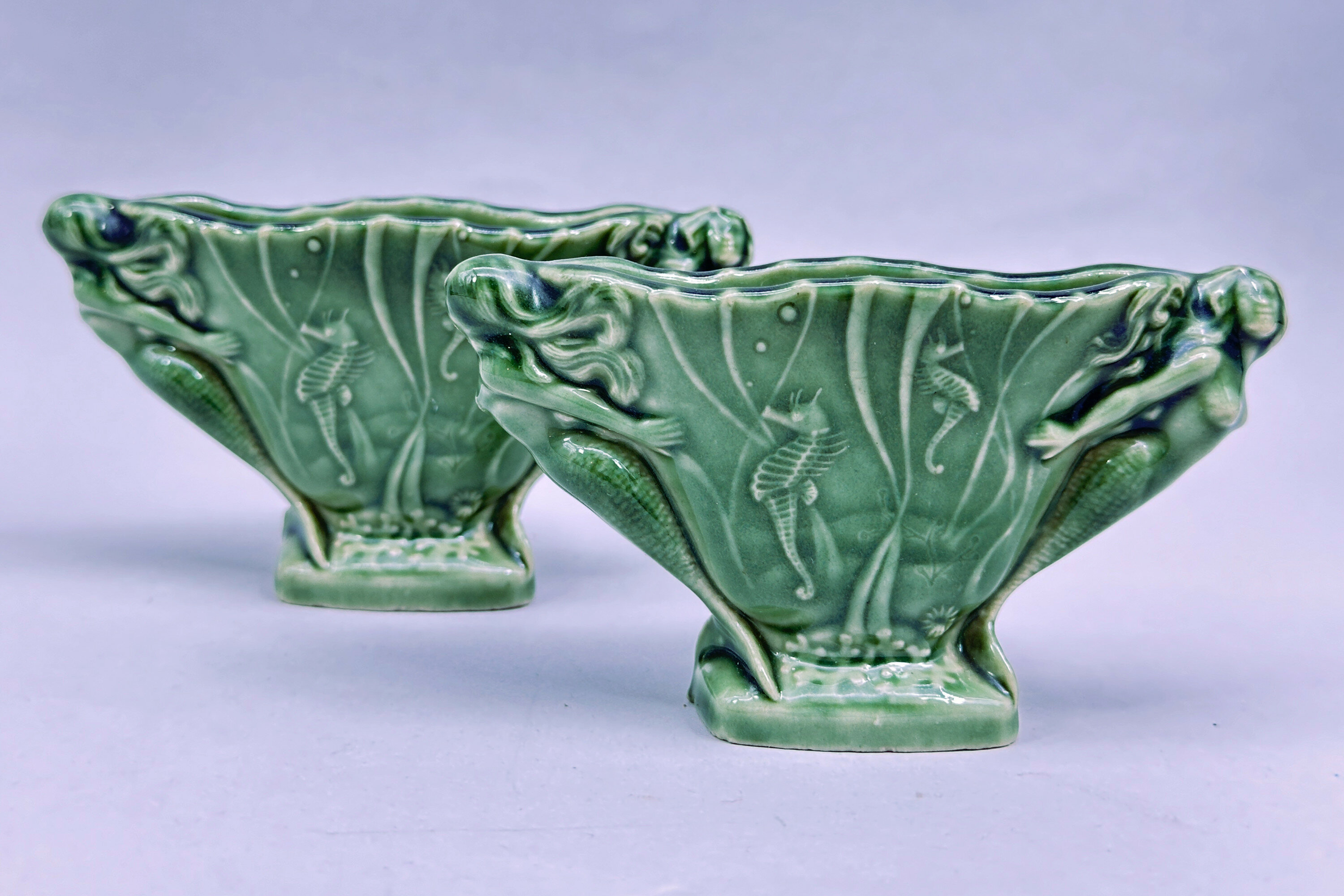
Pair of Wade green glazed Mermaid salts, 1950s
Price: £55Wade Ceramics Ltd was a manufacturer of porcelain and earthenware, headquartered in Stoke-on-Trent, England. Founded in 1867, it was run by various members of the Wade family until the death of George Anthony Wade in 1987 after which there was a succession of management buyouts. Despite substantial investment in 2009, the firm eventually went into administration in 2022. Wade produced a wide variety of ceramics, including the well known Wade Whimsies animal figurines.
This pair of salts is rather different to many of their productions and have a distinctly ‘Art Nouveau’ feel but, in fact, date to the 1950s when this particular format of the factory mark was used. It seems to be one of the rarer forms and pairs are even rarer still, so definitely one for Wade collectors!
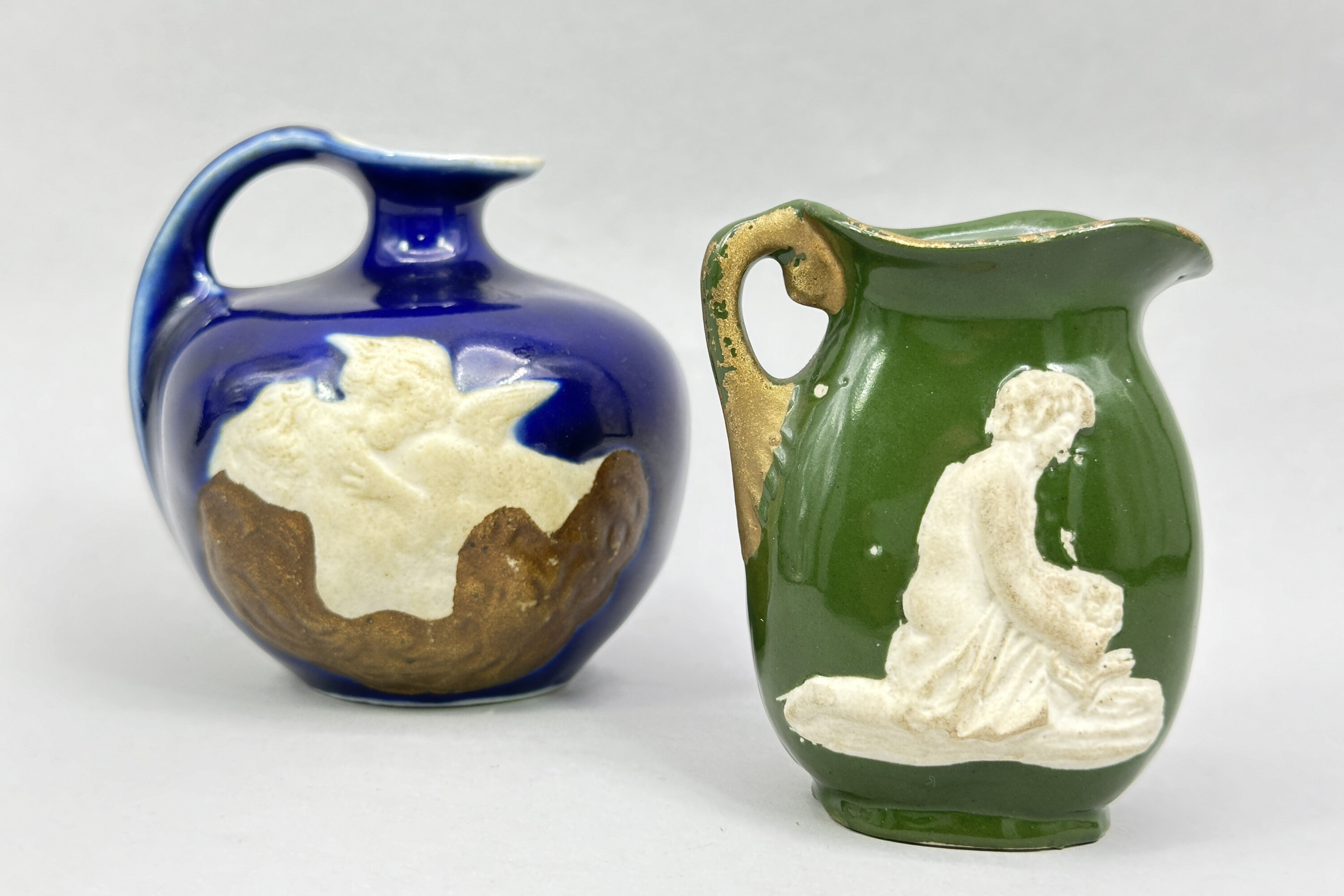
Two Ceramic Jugs with Erotic Decoration, continental perhaps German, circa 1900
Price: £25These pieces represent something of a puzzle. Seen the right way round (with the handle on the right) they are plain and the decoration only reveals itself on the reverse. This suggests a playful intent to conceal which, when combined with the subject matter, suggests something a bit ‘naughty’ which could confirm the second interpretation of what the seated man is holding! The paste, and general style of the pieces, looks continental and a German origin might be a good guess, but no more than that. The blue glazed jug has an impressed mark to the base ‘186 [plus an unidentifiable number]’ which might be the date but is more likely the pattern number; a dating of around 1900 for both seems reasonable - certainly there is an ‘old’ look to the pieces. There are one or two similar examples but little in the way of firm information. One for a collector to puzzle out!
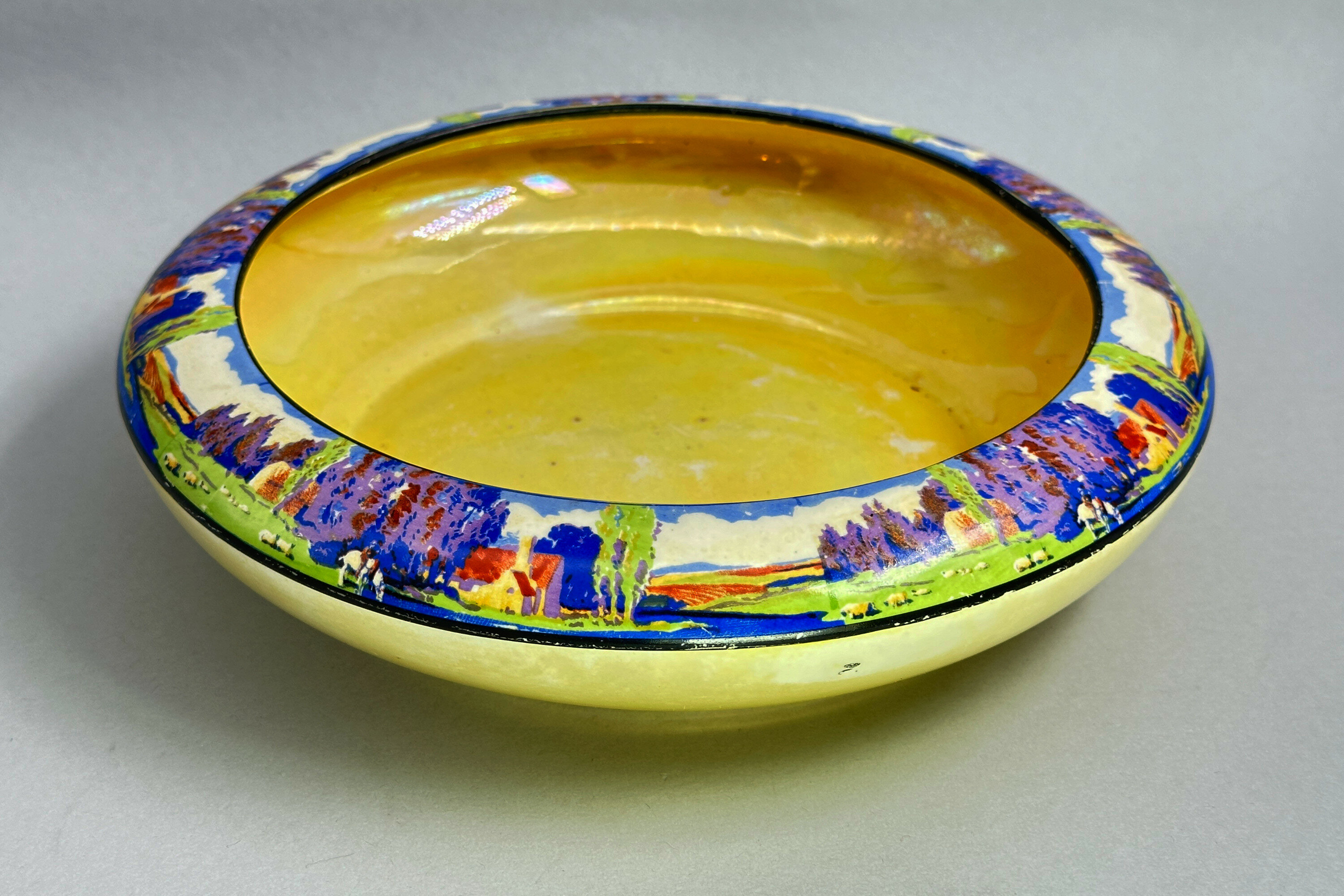
Hanley Ware circular bowl, Lancaster and Sons, 1920s
Price: £25Lancaster & Sons Ltd were manufacturers of earthenware at the Dresden works, Tinkersclough, in the Shelton area of Hanley, Stoke-on-Trent, England. The firm was founded in 1899 under the name ‘Lancaster and Barker’ was renamed ‘Lancaster & Sons Ltd’ in the early 1900s and continued production until 1944. In the 1920s they produced various pieces with rural landscape scenes of which this is an example. Some see reminiscences of the ‘Arts and Crafts’ movement here but the mark found on the bottom clearly dates the piece to the 1920s. The yellow lustre glaze is interesting and free from the crazing sometimes found.
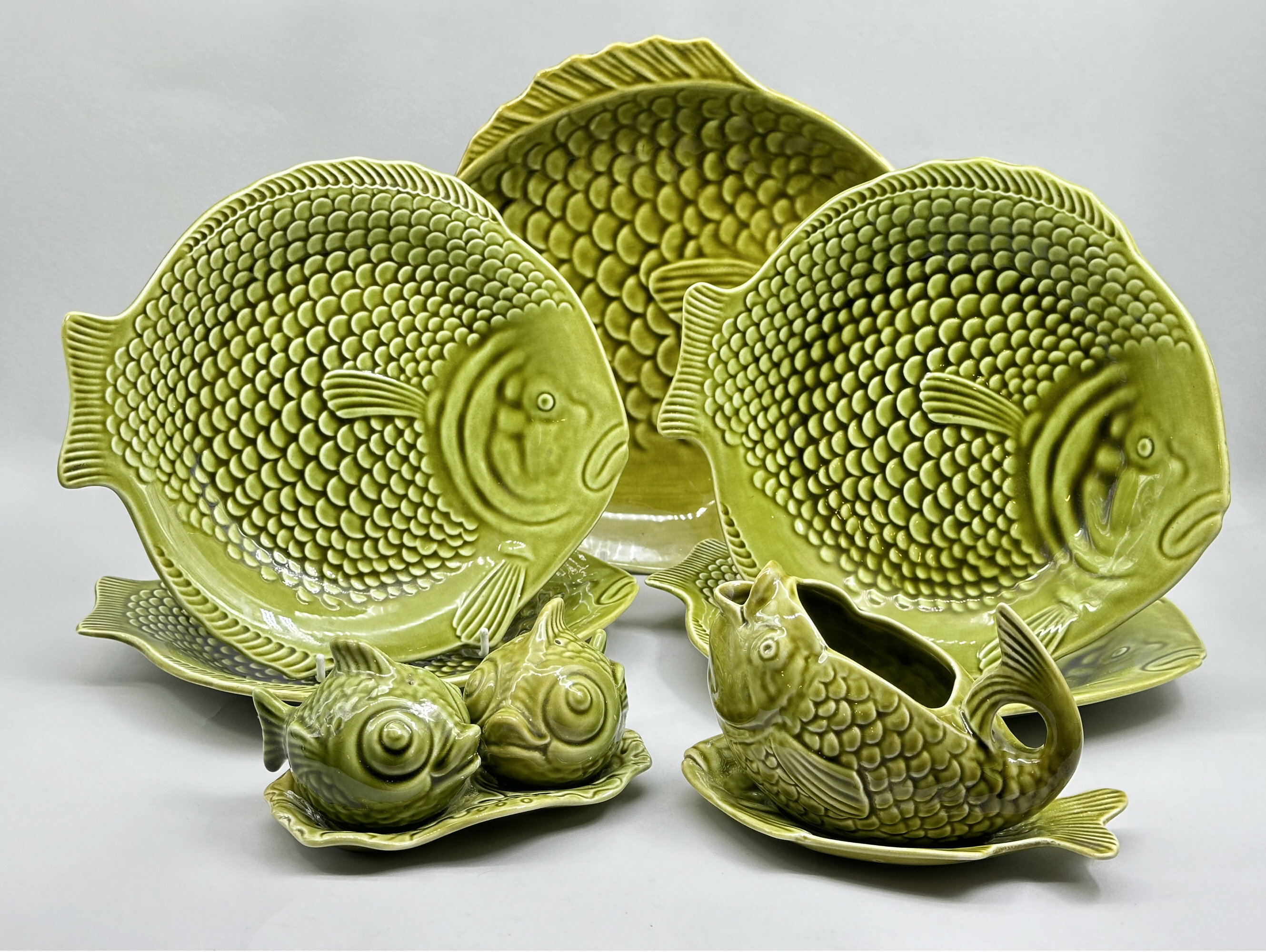
Shorter and Sons Green glazed Fish Service, 1950s/1960s
Price: £75The firm which later became Shorter and Son was first set up by Arthur Shorter in 1878 with a partner James Boulton in Stoke on Trent. Their products were solidly in the main-stream of Victorian taste - majolica wares of all types predominated. Time saw another generation join the firm and various amalgamations took place. One of the sons, Colley Shorter, developed a close association with Clarice Cliff whom he eventually married. Her designs, while concentrated on the wares signed with her name, also fed in to the productions of Shorter and Sons and the range of their wares expanded considerably in the 1920s and 1930s.
‘Fish Ware’, as it became known was introduced in the late 1920s and rapidly became one of their best selling lines. Initially production was confined to flat ware and in 1935 a part service was acquired by the Duchess of York, later to become Queen Elizabeth. The range expanded and the design of the gravy boat and stand, introduced in 1936 (and included in the present selection), was attributed to Cliff herself. There were further additions and the late 1950s saw the addition of salt and pepper pots on a wavy tray (also included in the present selection). This service, then, probably dates to around 1960 a little before the firm was effectively taken over by Crown Devon in 1964 and the eventual loss of the identity of its wares. The popularity of the line is easily understood and our present selection is an excellent memento of the design.
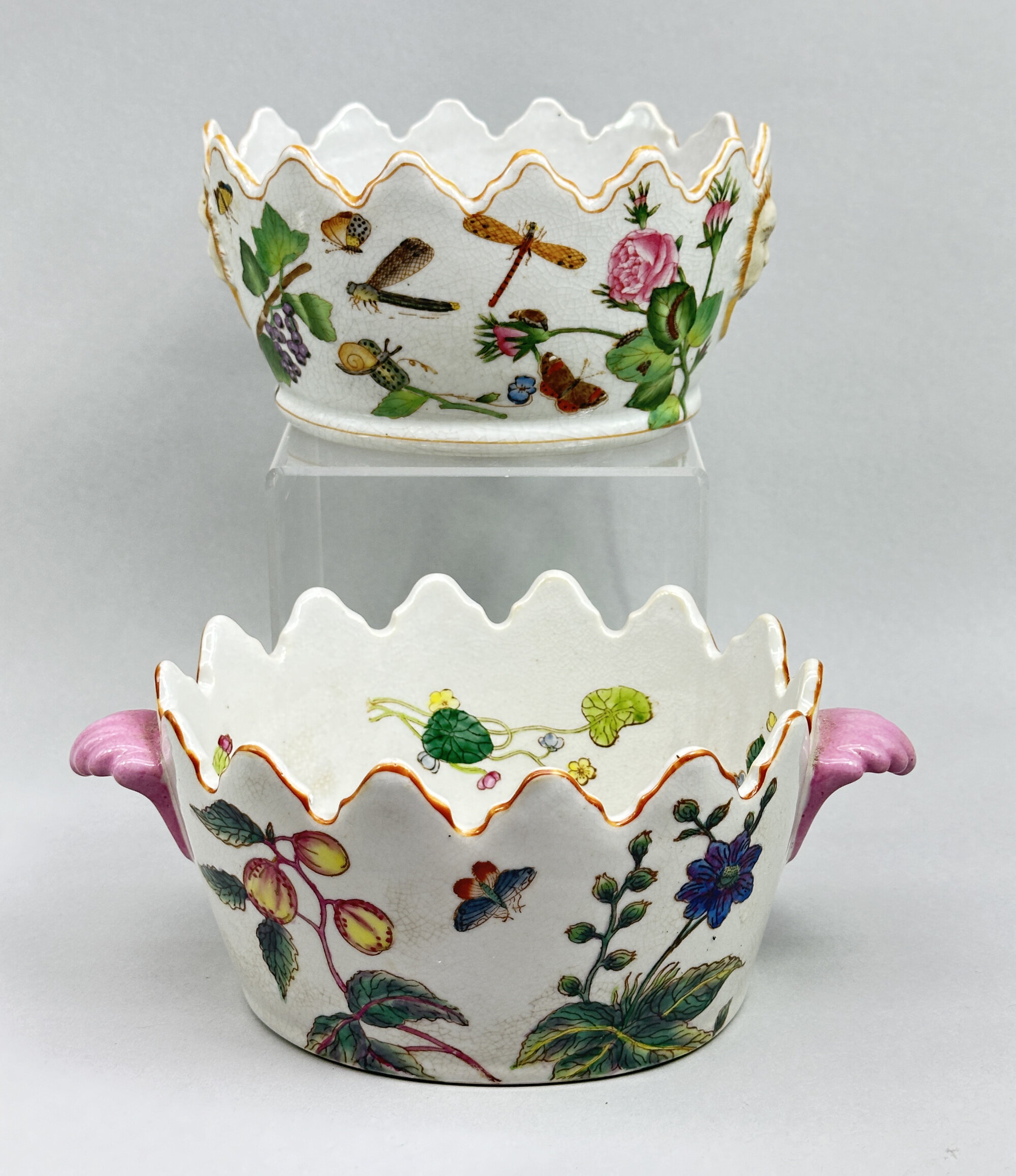
Two similar Chinese Export Style Monteith Form Jardinieres, C20th
Price: £75The form here is a miniature version of the Chinese ‘Monteith’ first produced in the early to mid eighteenth century. The wavy rim was designed to hold the stems of glasses which were stood to cool in iced water placed in the interior. The style of the decoration is in Chinese Export taste as well, but dating here is to the C20th probably around the 1960s. Some similar examples have Chinese seal marks and one the name of a Chinese manufacturer implying that these pieces were most likely made in China but this does not assist with establishing their age. Purely decorative objects then with no intent to deceive but amusing creations in themselves and pleasing to a contemporary eye.
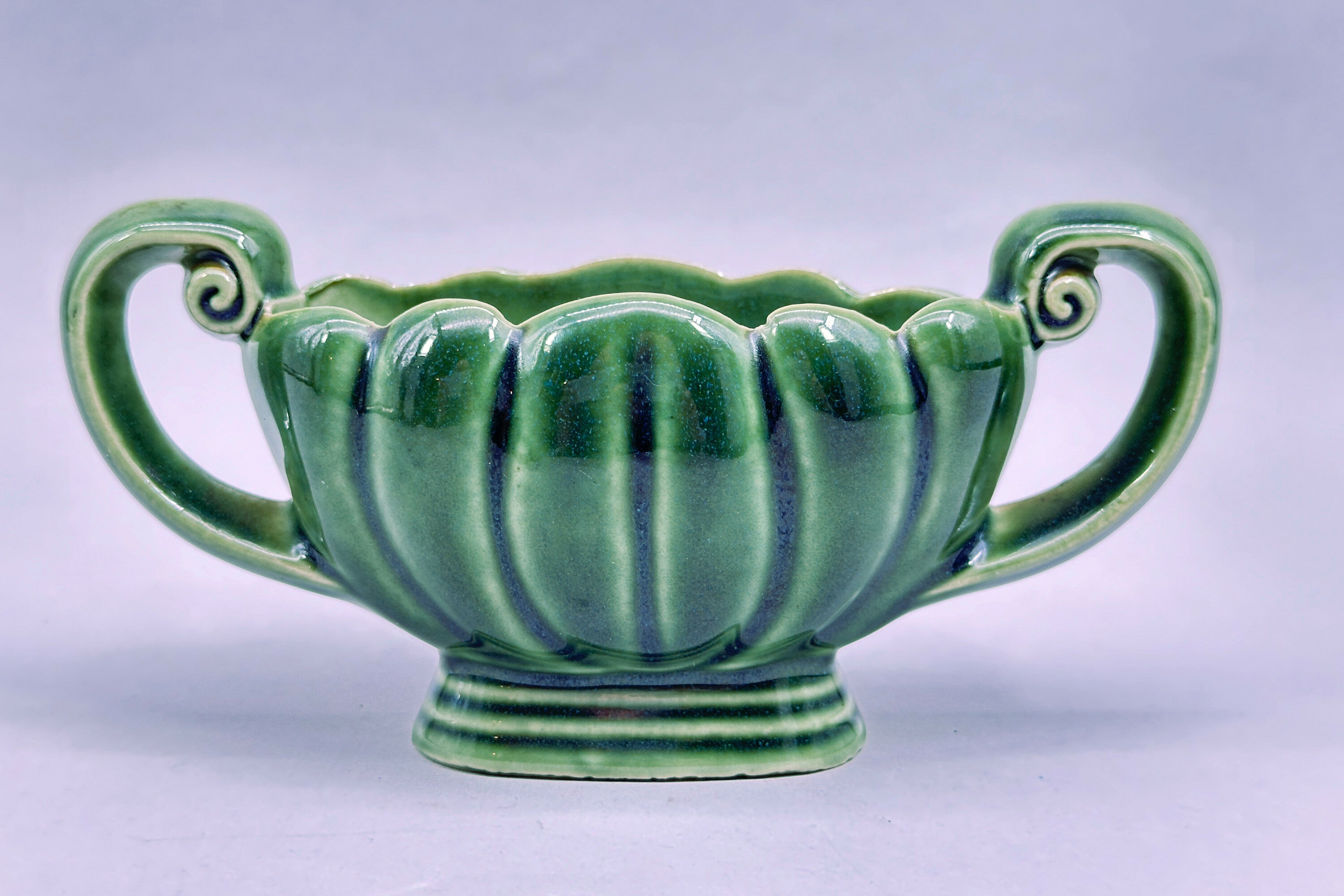
Wade green glazed Posy Vase, 1950s
Price: £20Wade Ceramics Ltd was a manufacturer of porcelain and earthenware, headquartered in Stoke-on-Trent, England. Founded in 1867, it was run by various members of the Wade family until the death of George Anthony Wade in 1987 after which there was a succession of management buyouts. Despite substantial investment in 2009, the firm eventually went into administration in 2022. Wade produced a wide variety of ceramics, including the well known Wade Whimsies animal figurines.
This vase was designed to hold a small bunch of flowers and was produced in a variety of sizes and colours, green being the most common. The form has an almost ‘neo classical’ feel but the piece dates to the 1950s when this particular format of the factory mark was used.
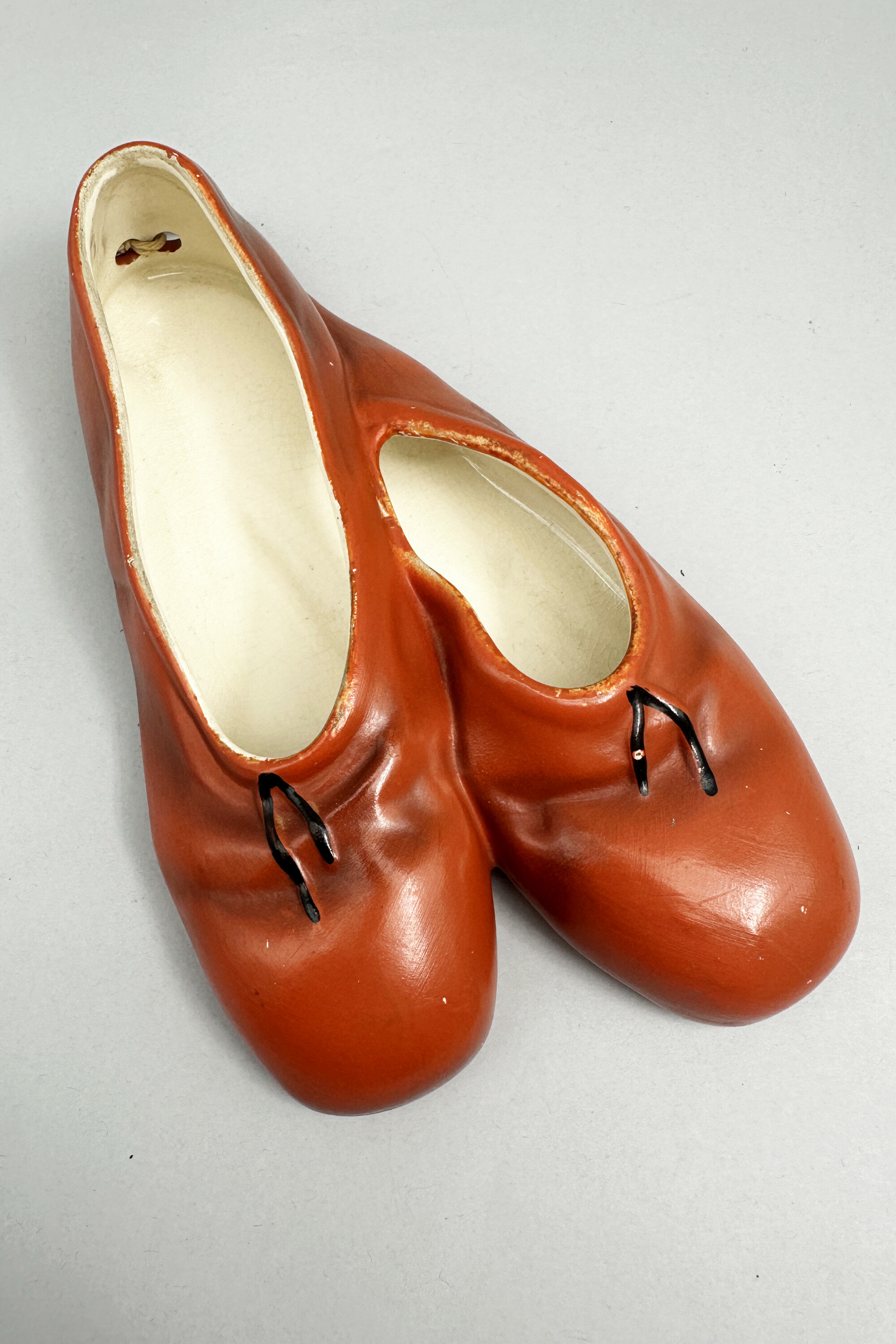
Pair of Brentleigh Ware Wall Hanging Ballet Shoes, 1930s
Price: £35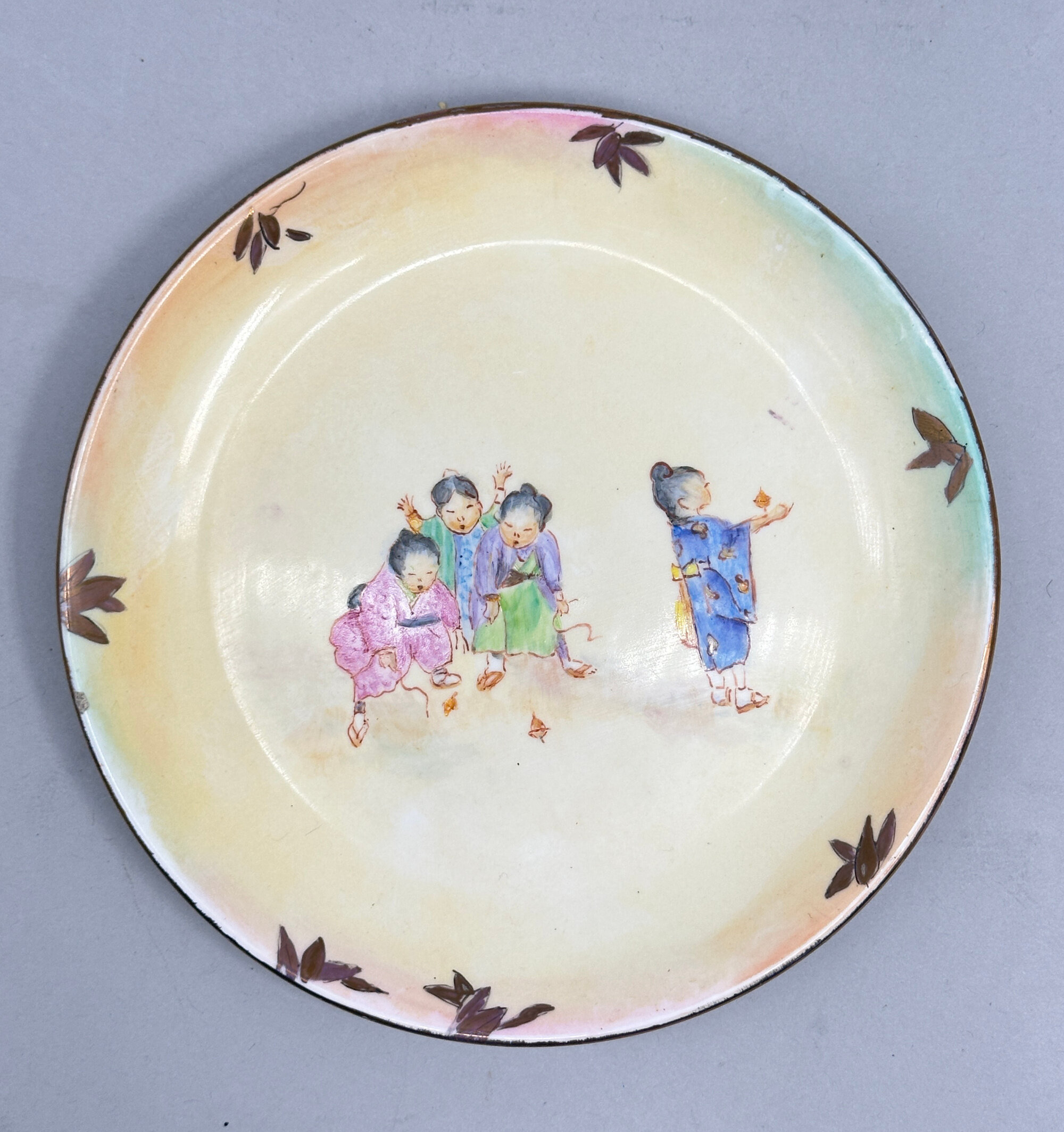
Oriental style ceramic plate, signed Alice Smith, possibly American mid C20th
Price: £10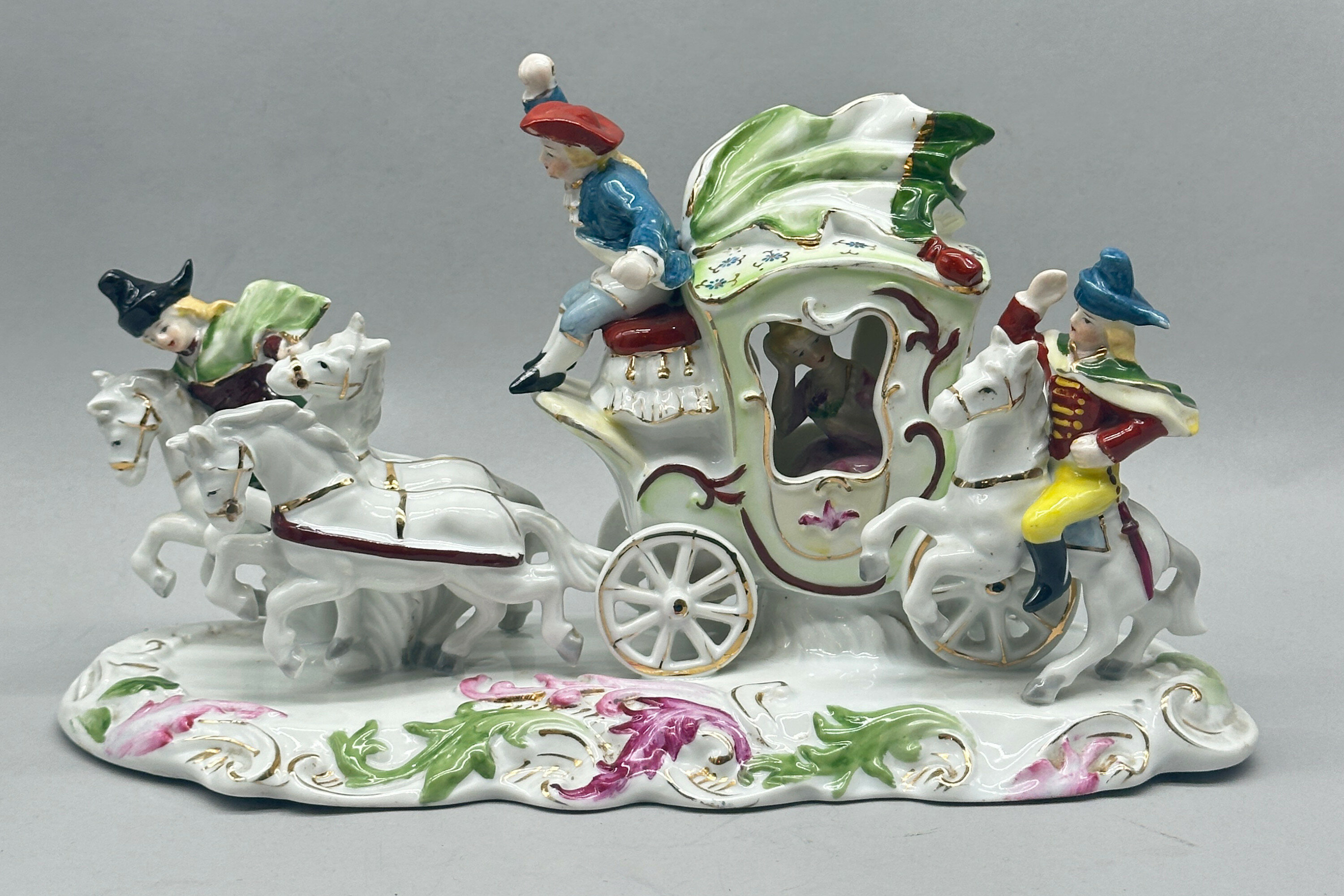
Dresden style model of a Coach and Horses, probably German early C20th
Price: £75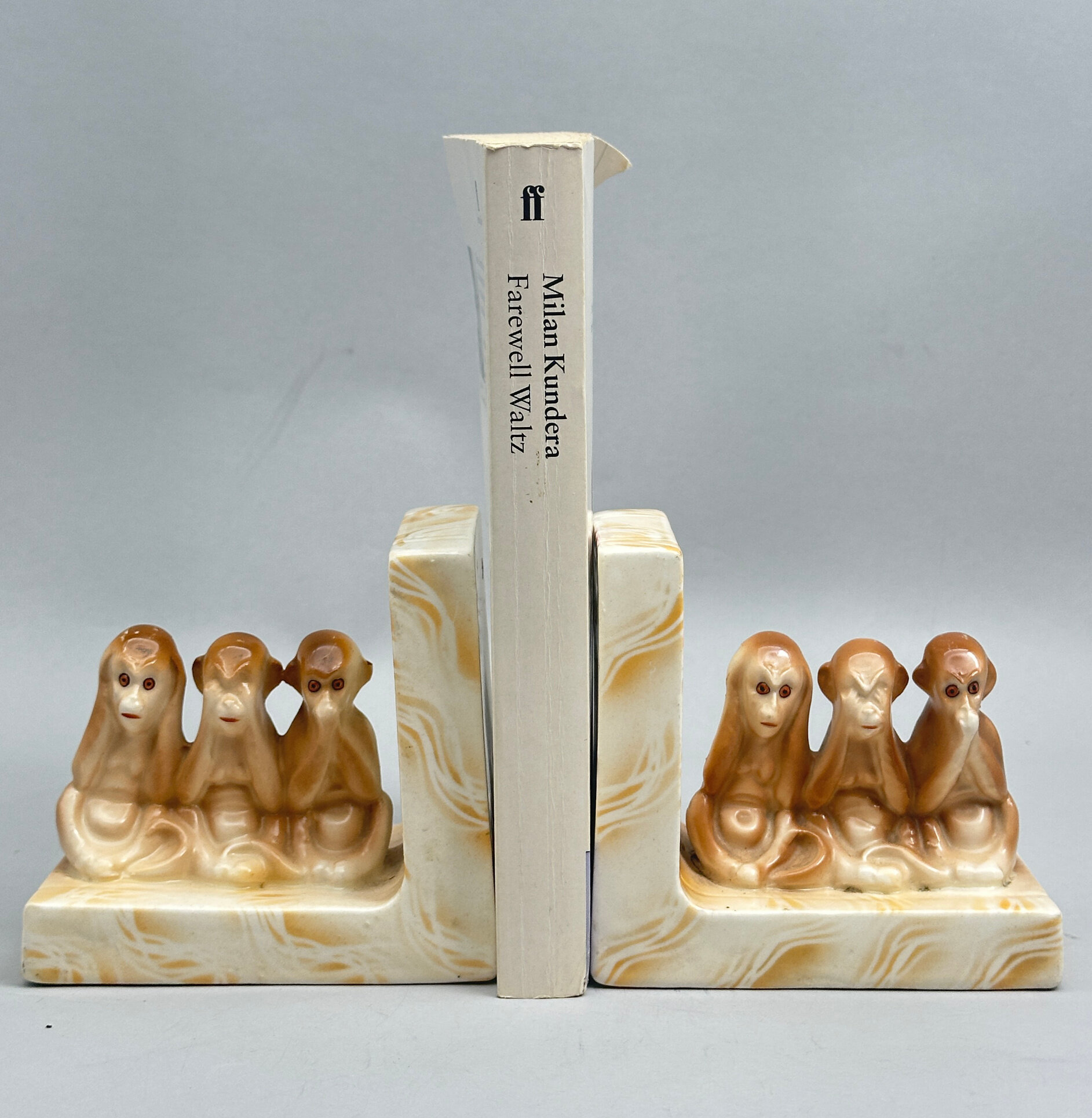
Pair of ceramic Bookends, the three wise monkeys, Czech second half C20th
Price: £30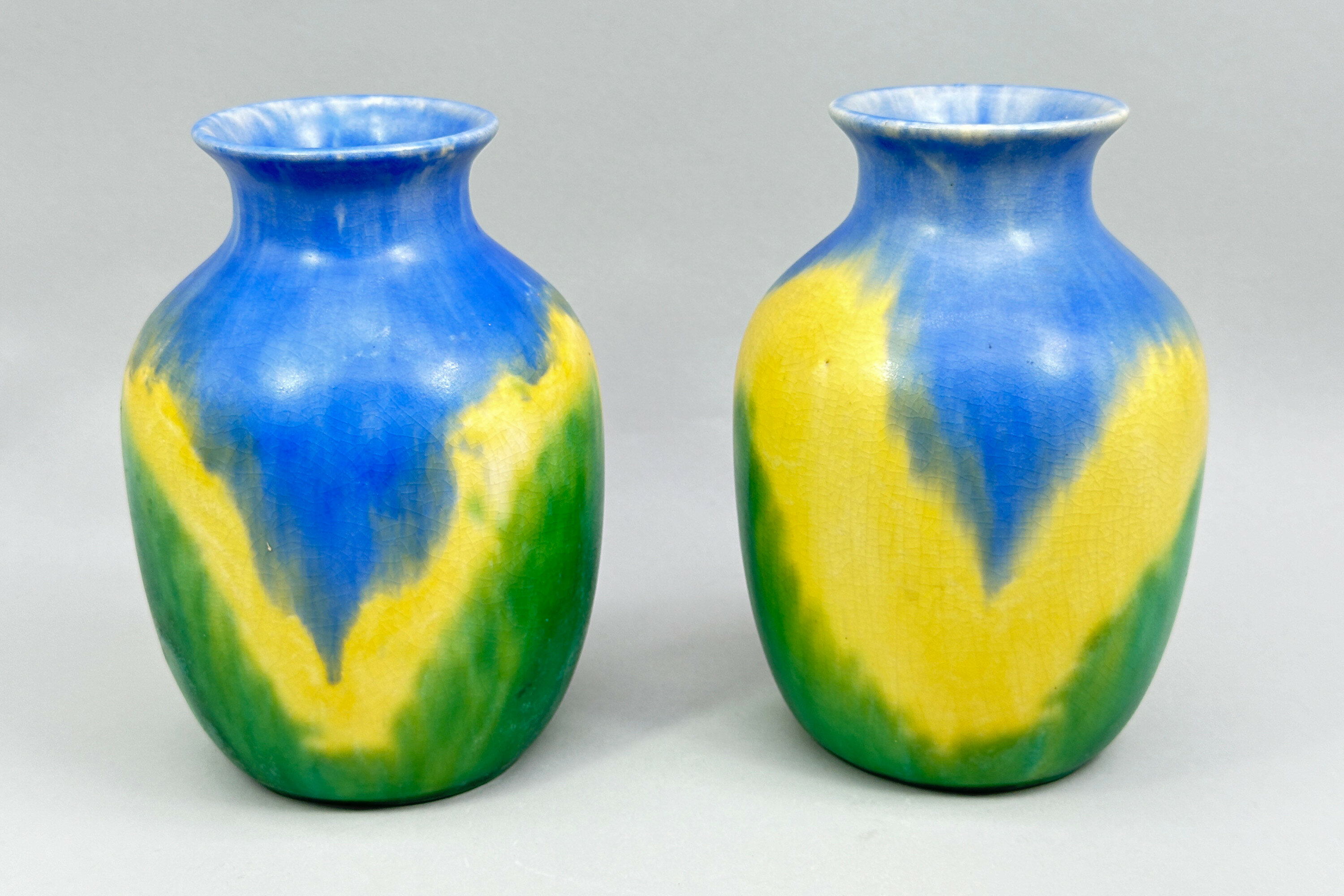
Pair of Art Deco style Avon Ware Vases, 1930s
Price: £45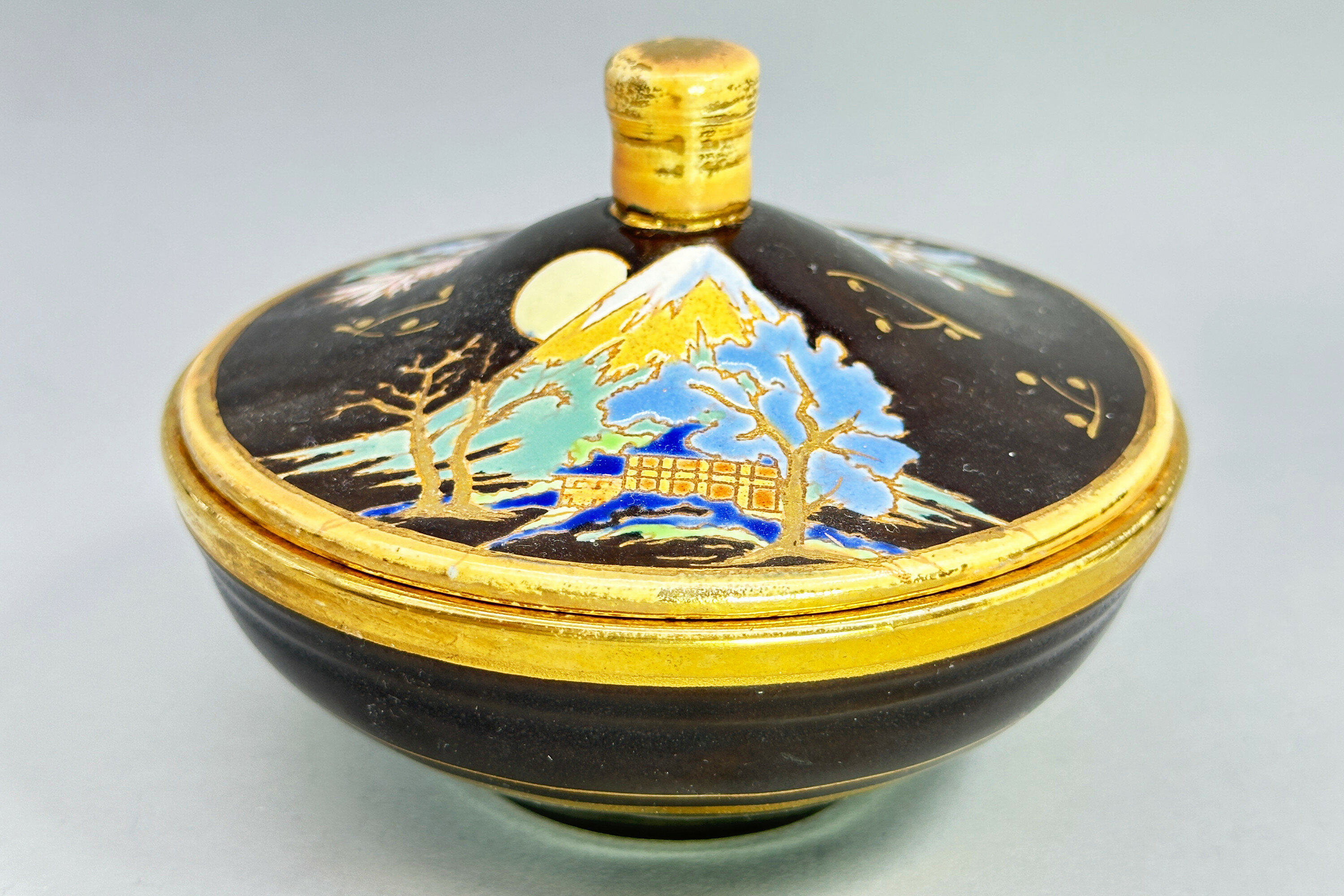
Cosmetic Box with Japonaiserie Decoration, Boch Freres, early C20th
Price: £45The firm Boch Freres Keramis was founded by Eugene and Victor Boch and their brother-in-law, Jean Baptiste Nothomb, in 1841 and was located in La Louviere in eastern Belgium. In 1906 Charles Catteau joined the company as artistic director and was responsible for a new and wide ranging series of designs, some under the influence of Japonisme, transitioning the company from producing utilitarian objects to highly decorative ceramics. His work can clearly be seen here in a piece which appears to be quite unusual. Both the form and the decoration reflect early twentieth century fashion in the clean lines and the images inspired by Japan. There is a hint of the aesthetic movement here producing an object of great attraction and interest.
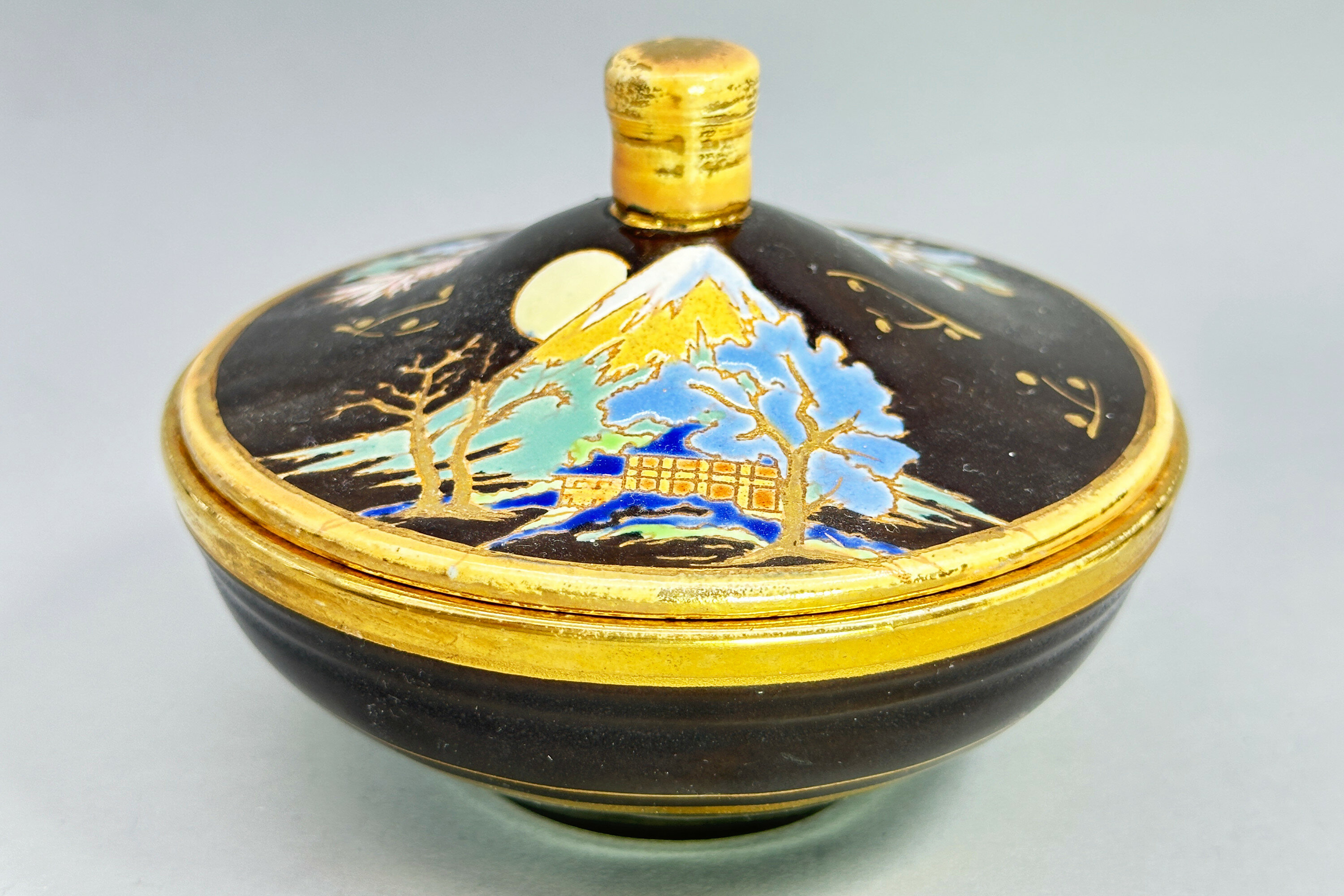
Cosmetic Box with Japonaiserie Decoration, Boch Freres, early C20th
Price: £45The firm Boch Freres Keramis was founded by Eugene and Victor Boch and their brother-in-law, Jean Baptiste Nothomb, in 1841 and was located in La Louviere in eastern Belgium. In 1906 Charles Catteau joined the company as artistic director and was responsible for a new and wide ranging series of designs, some under the influence of Japonisme, transitioning the company from producing utilitarian objects to highly decorative ceramics. His work can clearly be seen here in a piece which appears to be quite unusual. Both the form and the decoration reflect early twentieth century fashion in the clean lines and the images inspired by Japan. There is a hint of the aesthetic movement here producing an object of great attraction and interest.
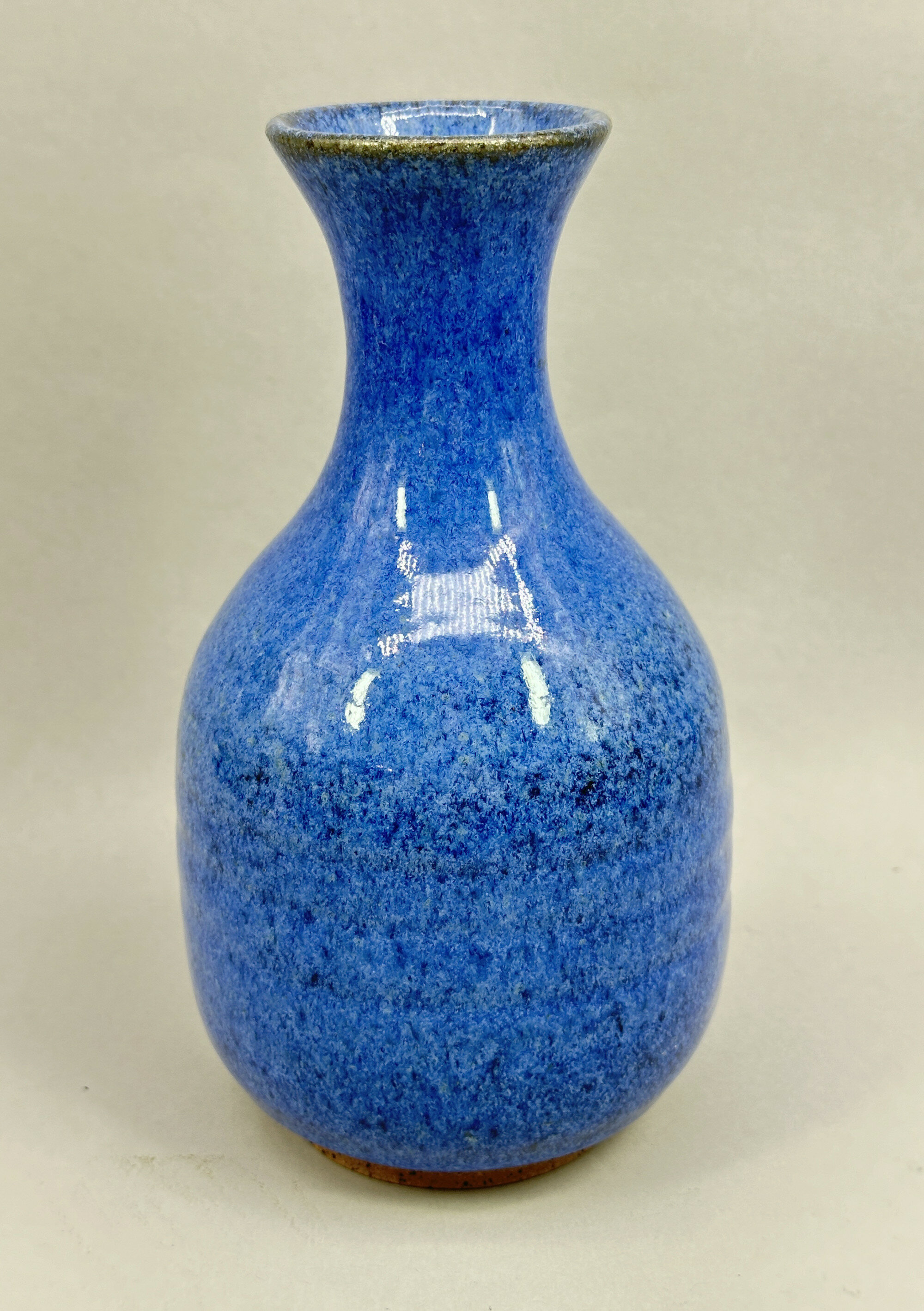
Studio Pottery Vase with Robin’s Egg Glaze marked Zambia, Modern
Price: £30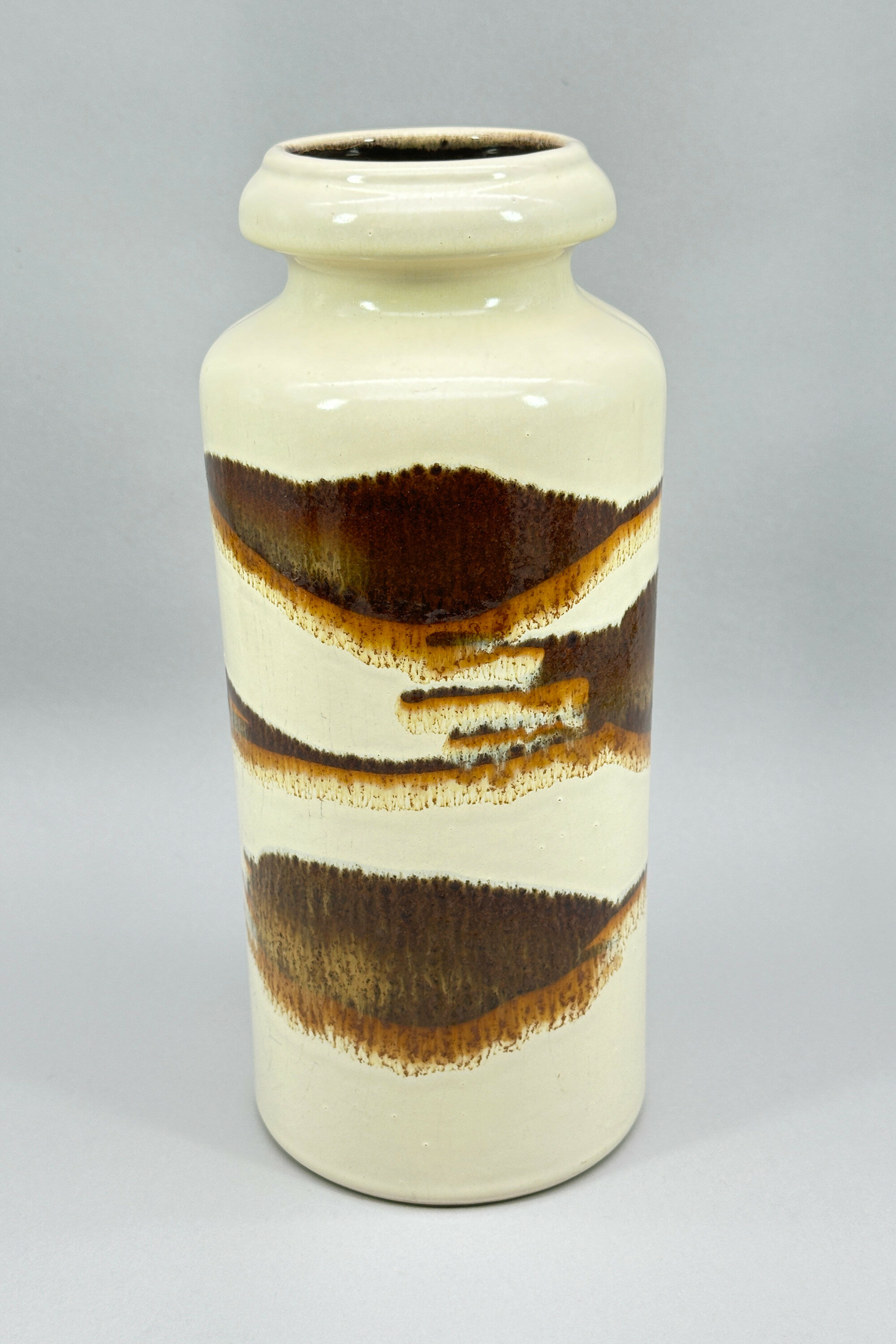
West German Vase with drip glaze decoration, Scheurich, 1960s
Price: £45Although not marked as such, this vase has all the hallmarks of the firm Scheurich Keramik which started production in 1954, rather later than most of its competitors, but soon became the largest producer of commercial art pottery in Germany. Their pieces rarely carried the factory name but usually the model number followed by the height in centimetres with ‘W-Germany’ below, as here. Model ‘517’ can be found in a variety of different glazes but the colourings here with the contrast between browns and cream are particularly successful. Dating is to the 1960s.
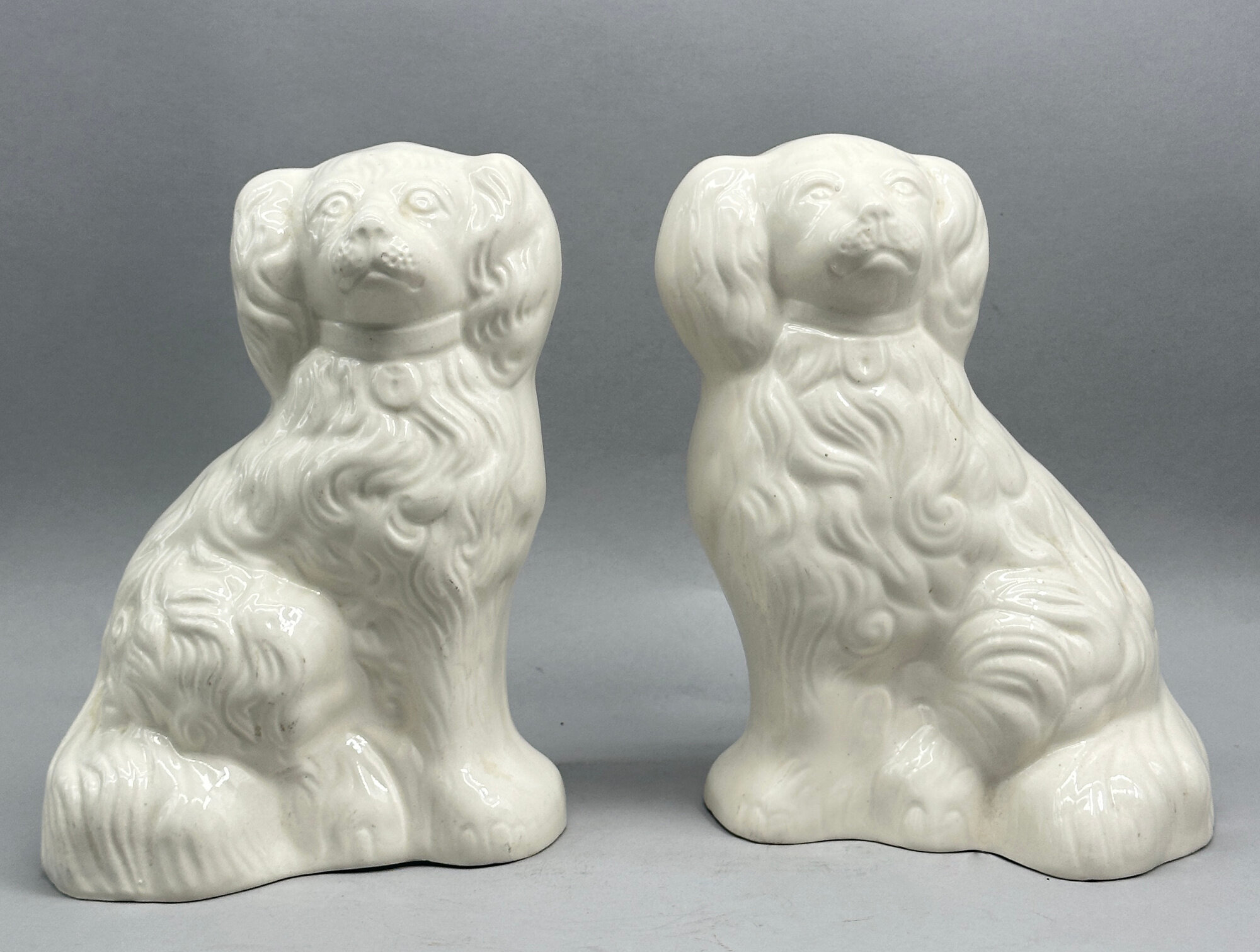
An unusual pair of white glaze models of Spaniels, Beswick, 1960s
Price: £75While a close relation to the traditional Victorian ‘Staffordshire Dog’, these figures were actually made by the English firm Beswick in the twentieth century. Founded in 1894 by James Beswick and his sons, the company became known for its output of figurines, eventually securing the rights to producing characters from the novels of Beatrix Potter and the films of Walt Disney. It was sold to Royal Doulton in 1969 who continued production until 2002, selling the pottery premises in 2003 and the rights to the name in 2004 when they were bought by Dartington Crystal who still manufacture pieces carrying the Beswick name. These spaniel figures appear to date from the 1960s and were made in at least two sizes. Most have painted decoration but the plain white finish here is really the most pleasing of all producing a pair of decorative items with timeless appeal.
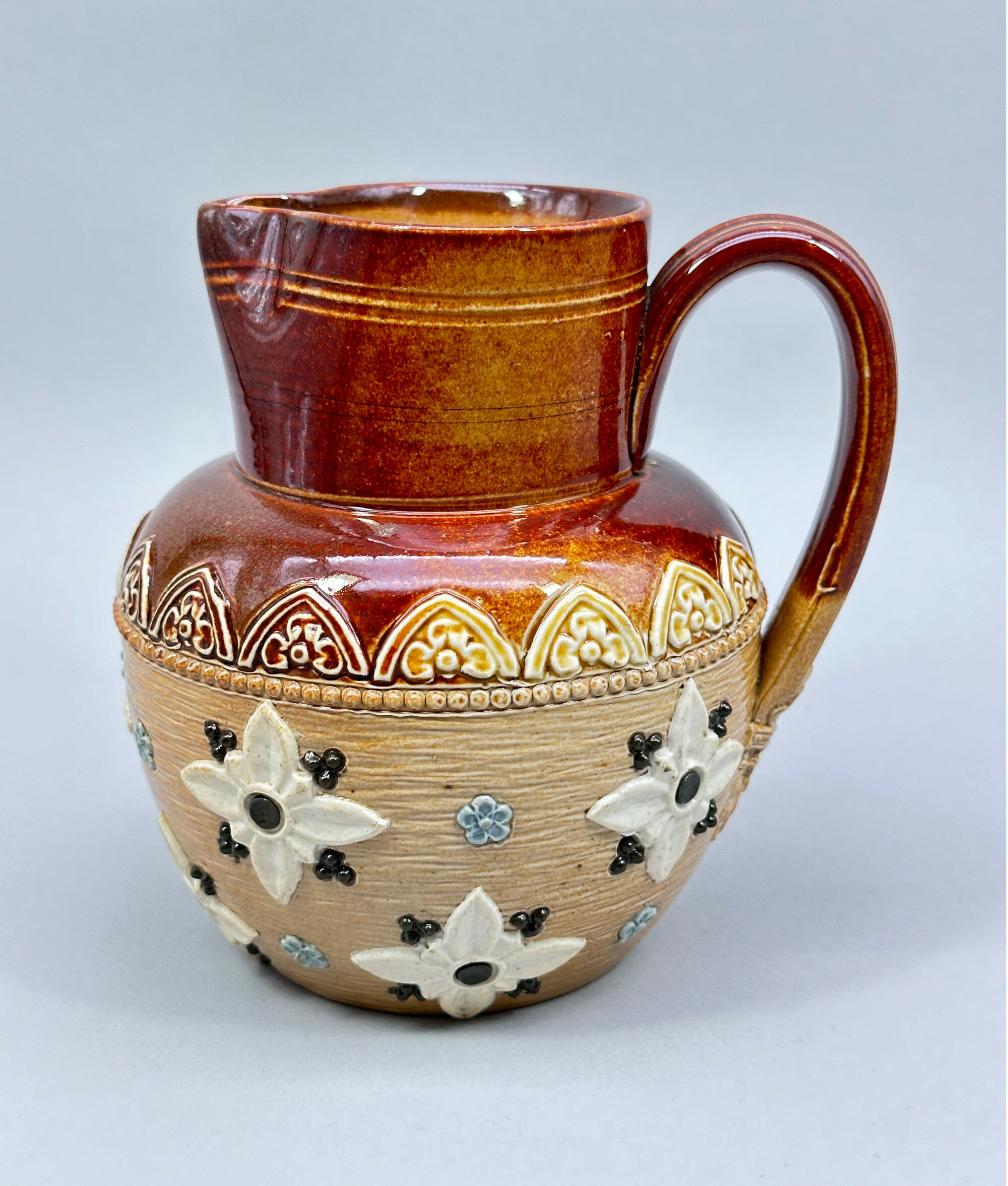
Doulton Lambeth Stoneware Jug circa 1900
Price: £45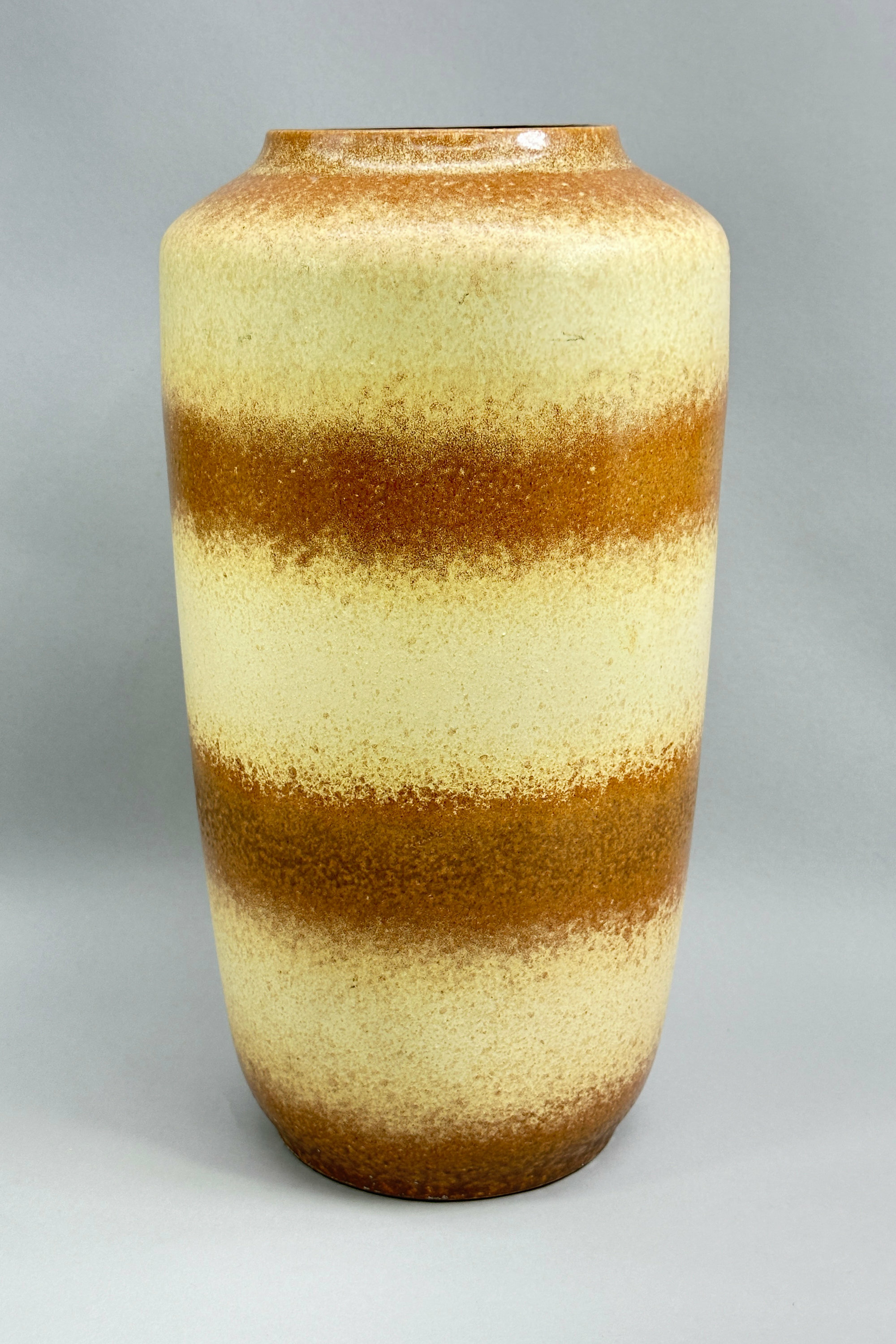
West German Vase, Model No 517-38, Scheurich, 1960s
Price: £55Although not marked as such, this vase has all the hallmarks of the firm Scheurich Keramik which started production in 1954, rather later than most of its competitors, but soon became the largest producer of commercial art pottery in Germany. Their pieces rarely carried the factory name but usually the model number followed by the height in centimetres with ‘W.Germany’ below, as here. Model ‘517’ can be found in a variety of different glazes but the pattern and colourings here, more muted than some of Sheurich’s work and with a matt finish, are particularly pleasing and complement the elegant form most successfully. Dating is to the 1960s.
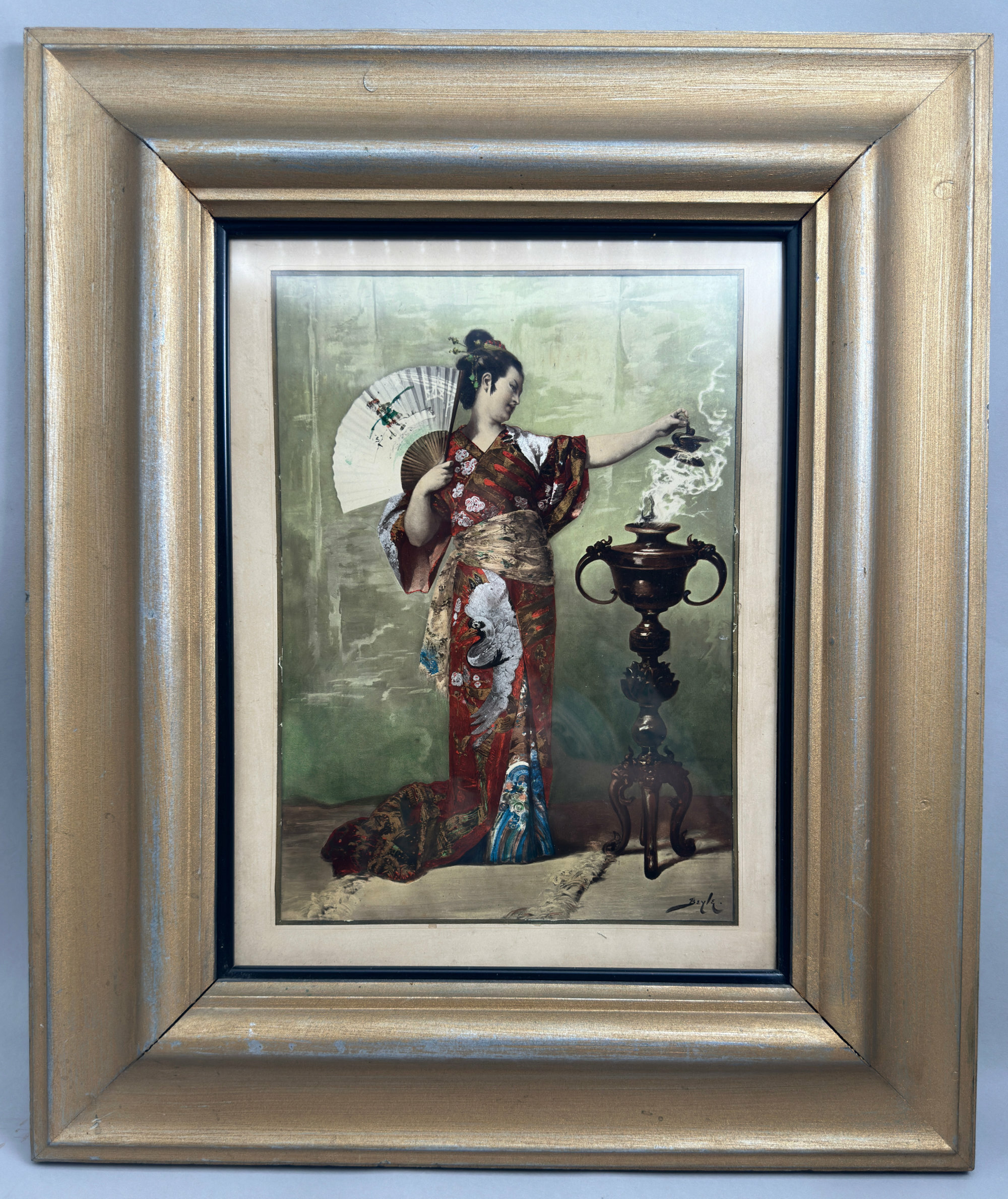
Léon Vidal Photochromie : A Japanese Woman with a Parasol, late C19th
Price: £550...............................................................................................................................................................
Art and artistry combine in this striking photographic reproduction of a painting by the French artist Pierre Marie Beyle (1838-1902) produced by the ‘Photochromie’ printing process invented and perfected by the French photographer Leon Vidal (1834-1906).
Leon Vidal (see image 11) developed the photochrome printing process in the 1870s as a method of accurately colouring photographs for quantity reproduction. From the original negative a number of copy negatives were made, on glass or thin paper. On each negative, those areas which were not to be coloured were blocked out with an opaque medium. For example, on the negative prepared for the colour blue, only those areas to be coloured blue in the final print remained uncovered. Negatives were prepared for as many colours as required, up to twelve, and then used to make lithographic tint plates which were employed to transfer colours in succession to the monochrome photograph from the original negative.
‘Photochromie’, as the photochrome printing process was called, was patented in 1872 and 1874 and refined by Vidal in the studios of the Société Anonymes des Publications Périodiques, whose director he became in 1875. This Société was founded in 1869, initially for a period of 60 years, and its first major publication, published in 1878, was a lavishly illustrated book entitled ‘Le Trésor artistique de la France’ in which the French heritage in the arts was represented by thirty nine specially selected items of particular cultural and artistic merit, each described by an expert in the field and all illustrated, a few in monochrome and the bulk, thirty in all, in colour employing the newly discovered photochromie process. The results were unfortunately uneven and the cost of the volume, three hundred francs, prohibitively high which resulted in the first volume of a proposed series being its last. Individual plates from this publication appear on the market today and are sought by collectors.
Less commonly seen are individual representations of contemporary paintings which Vidal also produced in the studios of the Société at its premises, 13 Quai Voltaire, Paris. Vidal’s printing process was not the only one available to the French public in the late nineteenth century but it was probably the most accomplished and Vidal sought to exploit this by issuing a series of reproductions suitable for interior decoration. Most popular amongst the artists whose work he chose to reproduce seems to have been Pierre Marie Beyle (1838-1902).
Beyle was born in Lyon in 1838 and studied in Paris where he later exhibited regularly at the Salon, from 1867 to 1900. Around 1870, he went to Algiers and the themes of the city are reflected in his paintings of those years (see image 12 for an example). Later he became known for landscape and genre scenes many of which depict the surroundings of Normandy where he used to spend his summers and in addition he followed the contemporary fascination with the Orient producing paintings with themes from the Far East such as we have here. Beyle also worked as a caricaturist in satirical newspapers such as the Petit Journal, the Fun Journal and Bouffon in the 1860s and 1870s. He exhibited at the Grafton Gallery in London in 1881, then went to Scotland where he exhibited at the Institute of Fine Arts in Glasgow. In 1900, he exhibited at the Universal Exhibition. After settling in Chennevieres-sur-Marne towards the end of his life he died in Paris in 1902 and was buried at Montparnasse.
The rich palette of colours employed in Beyle’s paintings were well suited to reproduction by Vidal’s newly invented printing process and he doubtless chose those works which he felt would have a particular popular appeal. The rage for ‘Japonisme’ in the second half of the nineteenth century is well documented and its influence was widely spread, perhaps most famously in David Belasco’s play ‘Madame Butterfly’ which inspired Puccini’s opera of the same name. The Geisha figure here fortunately holds a fan rather than a sword and is seen gazing at an elaborate bronze incense burner. The elaborate colours of her robe are well reproduced by the ‘Photochromie’ technique and the whole composition has a richness of presentation which doubtless reflects the original painting which appears still to be in the private domain. Beyle’s signature is accurately reproduced at the bottom right and Vidal’s invention is proudly announced on the reverse with the sun inspired emblem at the top and the wording below ‘Photochromie’ ‘Photographie en Couleurs’ ‘sans le secours du pinceau’. No hand colouring here! The modern frame acts acts as complement to the image and both combine to present a highly decorative picture of considerable cultural interest.
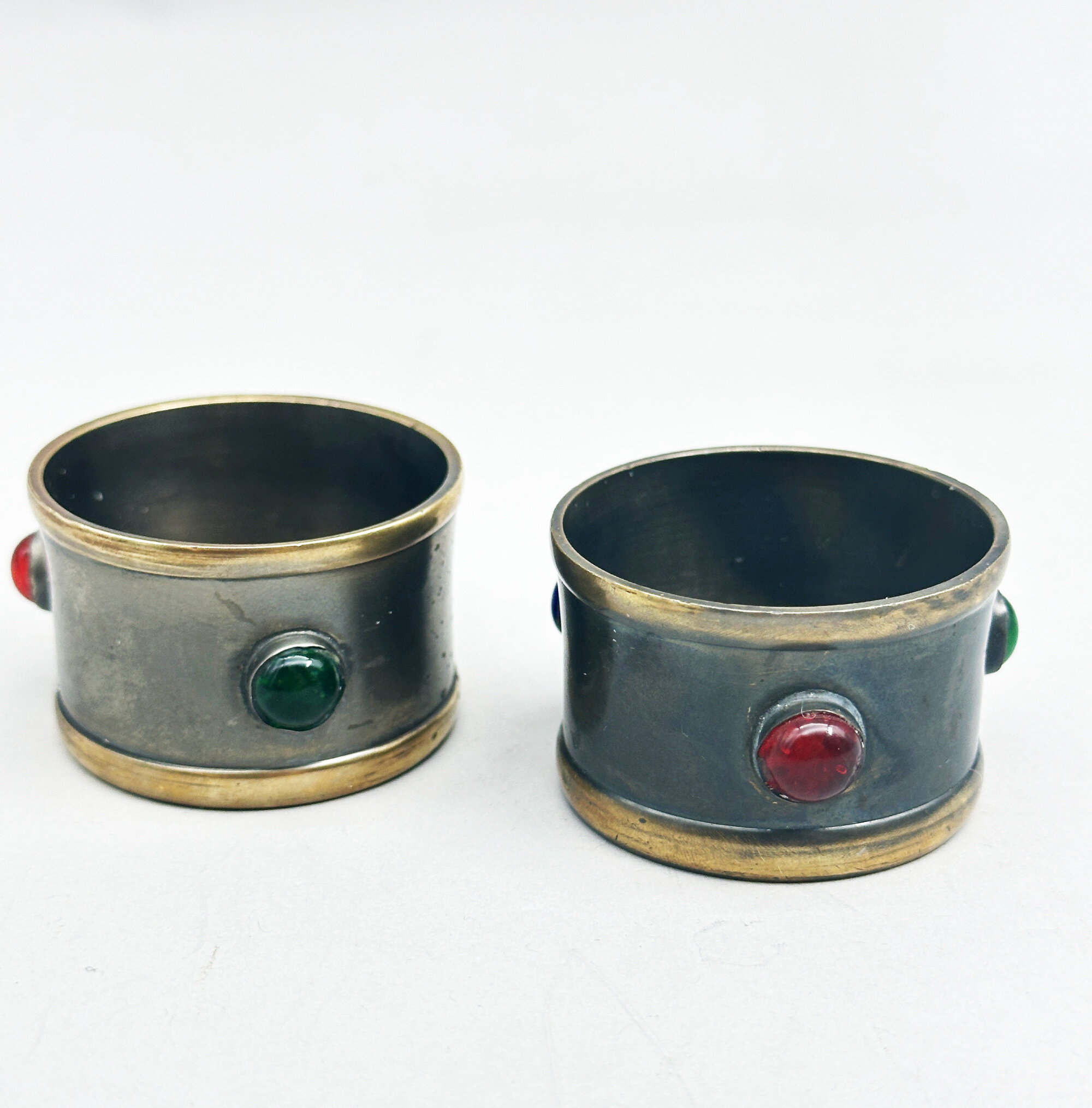
Pair of Arts and Crafts Pewter Salts, early C20th
Price: £45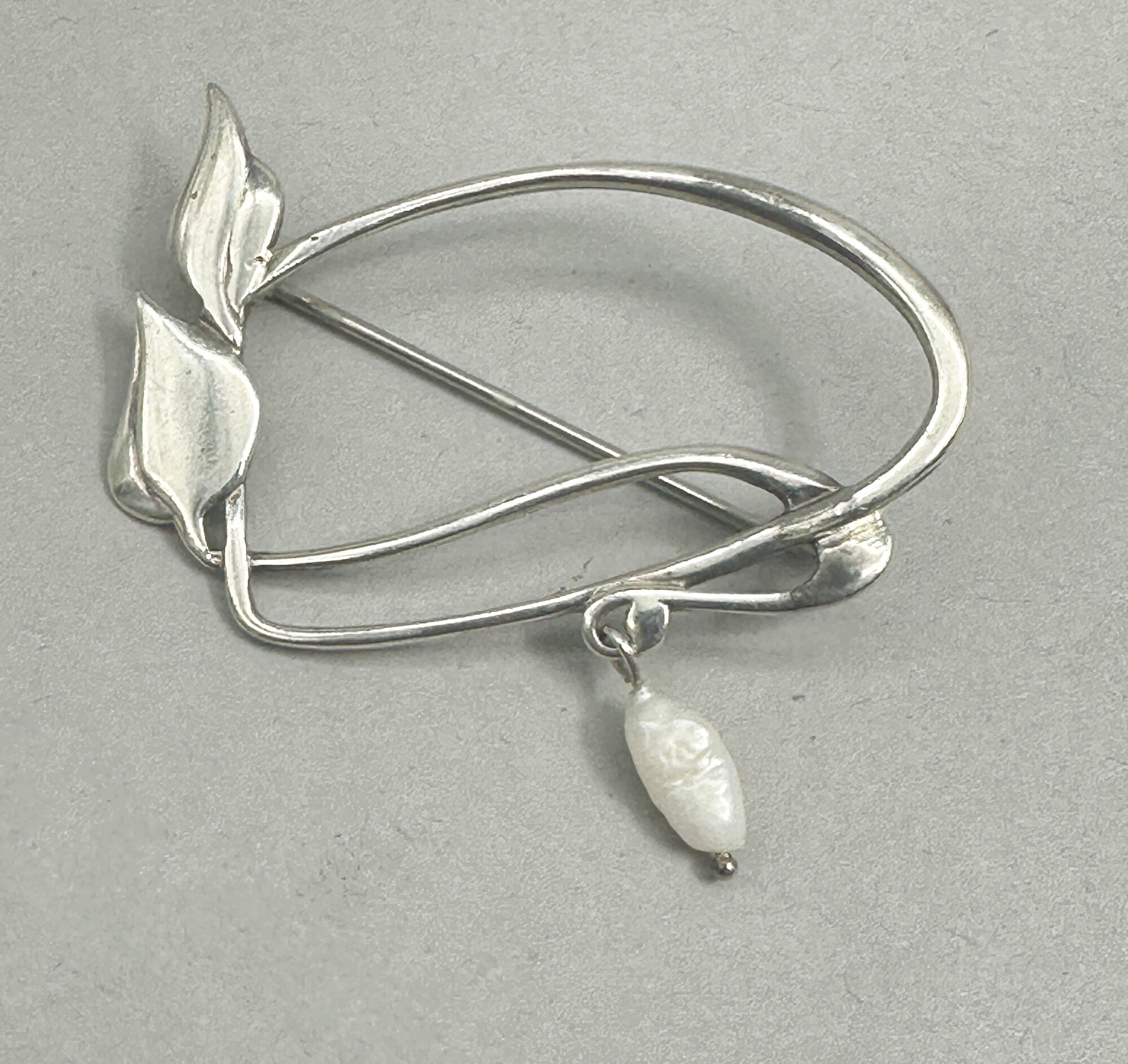
Rennie Mackintosh Arts and Crafts silver brooch
Price: £25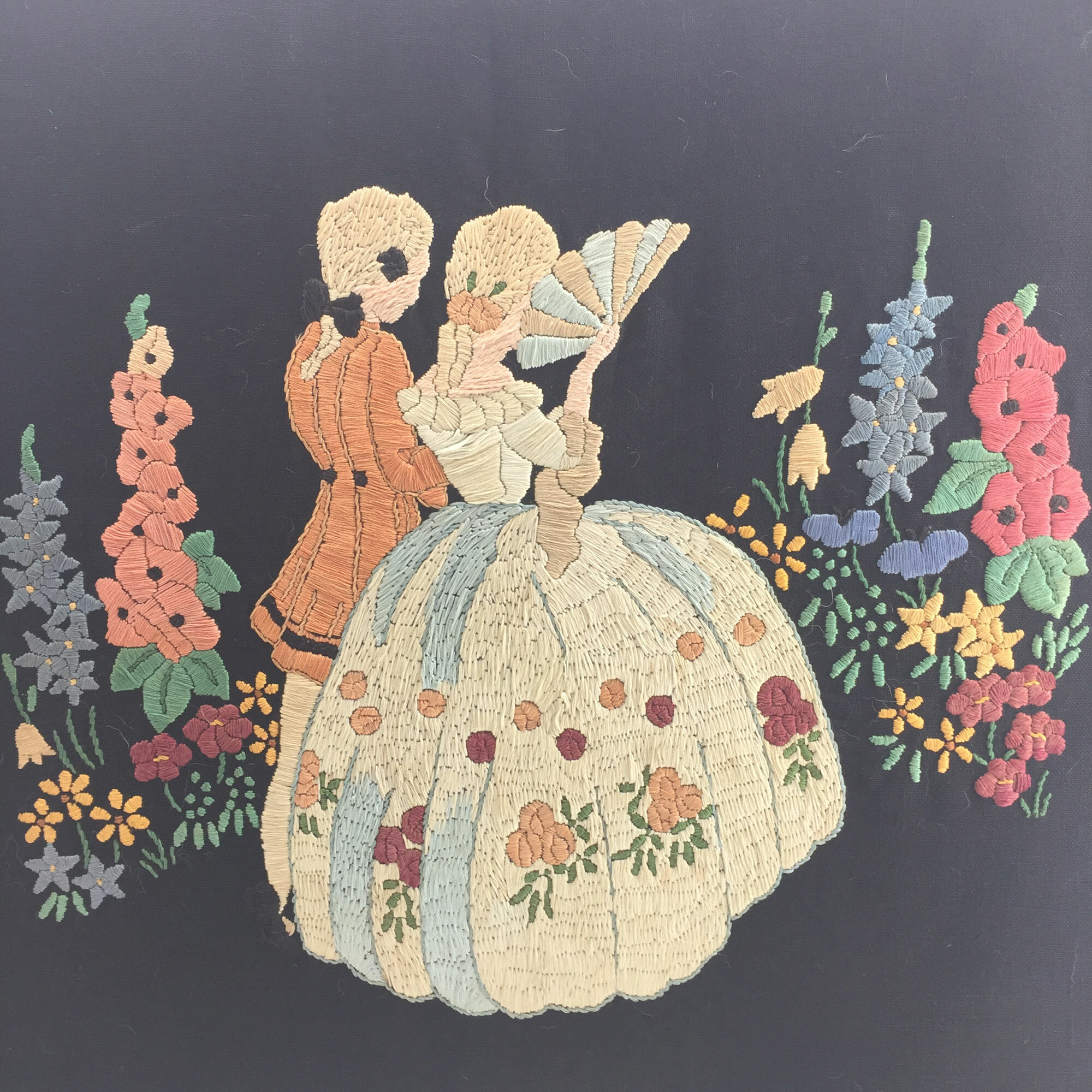
Arts and Crafts Stumpwork Firescreen 1900
Price: £25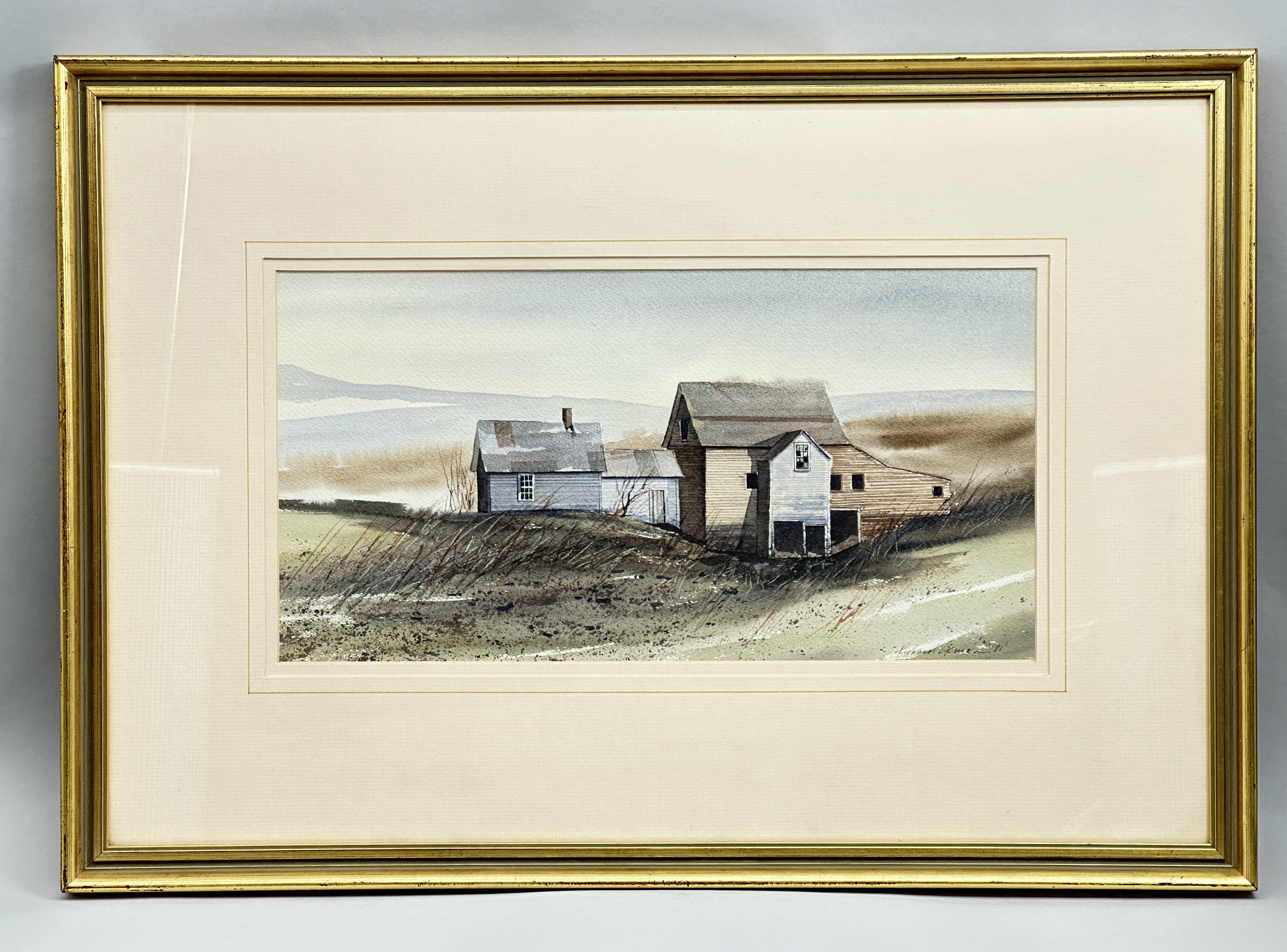
Signed Watercolour of Farm Buildings, Richard Akerman (1942-2005), dated 1981
Price: £110..............................................................................…………………………………………………………………………………………..............................…
Richard Akerman was born in London in 1942. He attended the Hornsey College of Arts and Crafts in the early 1960s, studying a general fine art course which incorporated printmaking and sculpture. His first exhibition was at the Obelisk Gallery in Crawford Street, London, where his work was displayed alongside works by famous surrealists such as Man Ray and Salvador Dali, implying that the style of his early work matched that of his more famous contemporaries. Years of travel followed in both Europe and the Far East and this seems to have turned him to painting in a more coventional style. A succession of watercolours was to follow with subjects ranging from still life and flowers to garden and architectural subjects. His work became immensely popular through the prints made from his original paintings, indeed such was the demand for them that he rivalled Monet as a subject for reproduction in this medium becoming, in a sense, quite a household name with exhibitions of his work internationally.
The path to success, however, was not straightforward and one account of him, written by his son Marcus, mentions running a hot dog stand alongside joining the artists with their weekend displays of works for sale on the railings at Kensington Gardens. Convivial and outgoing (a self portrait captures him well : see image 9), Akerman was married with three children and spent the latter years of his life in Spain where he sadly died after an accident in 2005.
But his work survives him and the prints produced in his lifetime can still be obtained today, giving an accesible overview of his output. The style is approachable with an attractive use of colour and often slightly impressionistic brushwork. But there are works executed in a more precise style, for example a signed watercolour ‘Hot House Flowers’, exhibited by the Edinburgh Gallery in 1994 (see image 10) and this is seen in the work we have on offer. The location of this group of farm buildings is uncertain but Akerman painted similar scenes which appear to be located in Kent and this may well be the case here. Original watercolours by Akerman are not so easily found but what increases the rarity and interest of our picture is that the artist’s signature, done in a slightly more precise hand than the signatures found in the reproduction prints, has the date in addition (’81). We have been unable to find any other example of this and it leads to the possibility that this is a work which the artist painted for himself. Certainly there are no reproductions of it. If so, then it is of particular interest and more than worthy of inclusion in a collection C20th British watercolourists with the addition of being an original creation by an artist who enjoyed such great popularity with the general public.
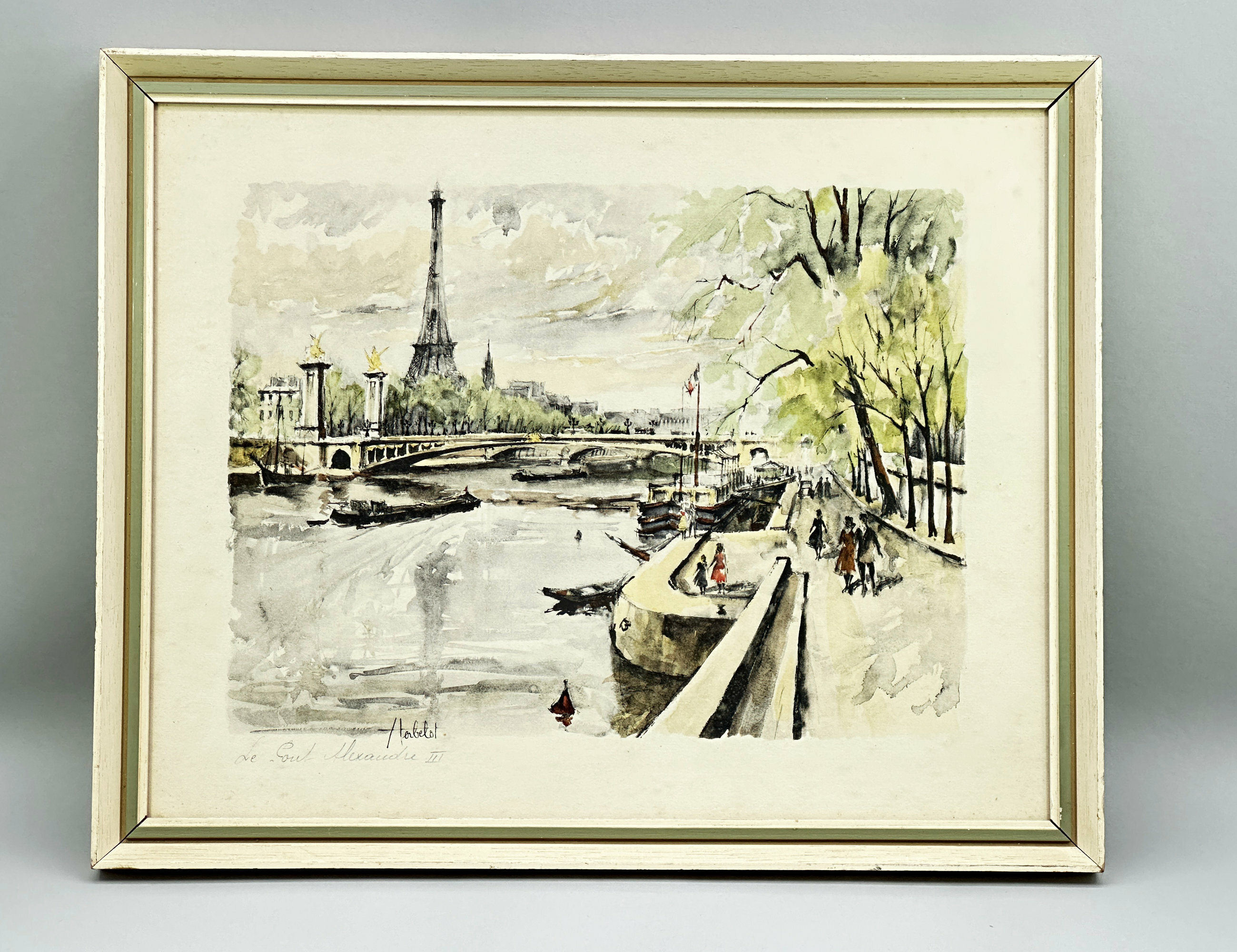
Lithograph Print, Le Pont Alexandre III in Paris, signed Herbelot, 1950s/1960s
Estimate: £30 – 40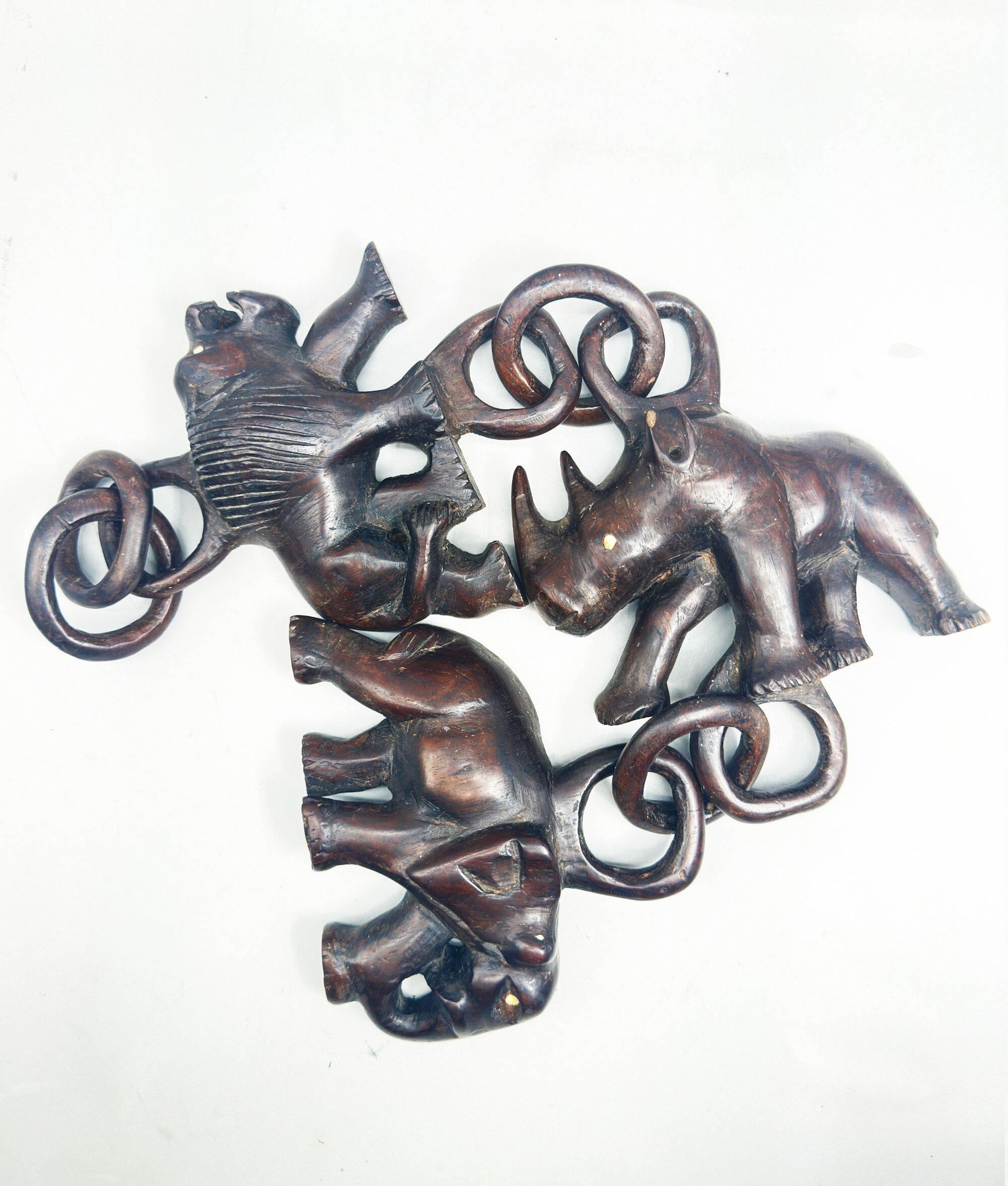
Large African wall decoration carved from one piece of ebony wood c1950
Price: £85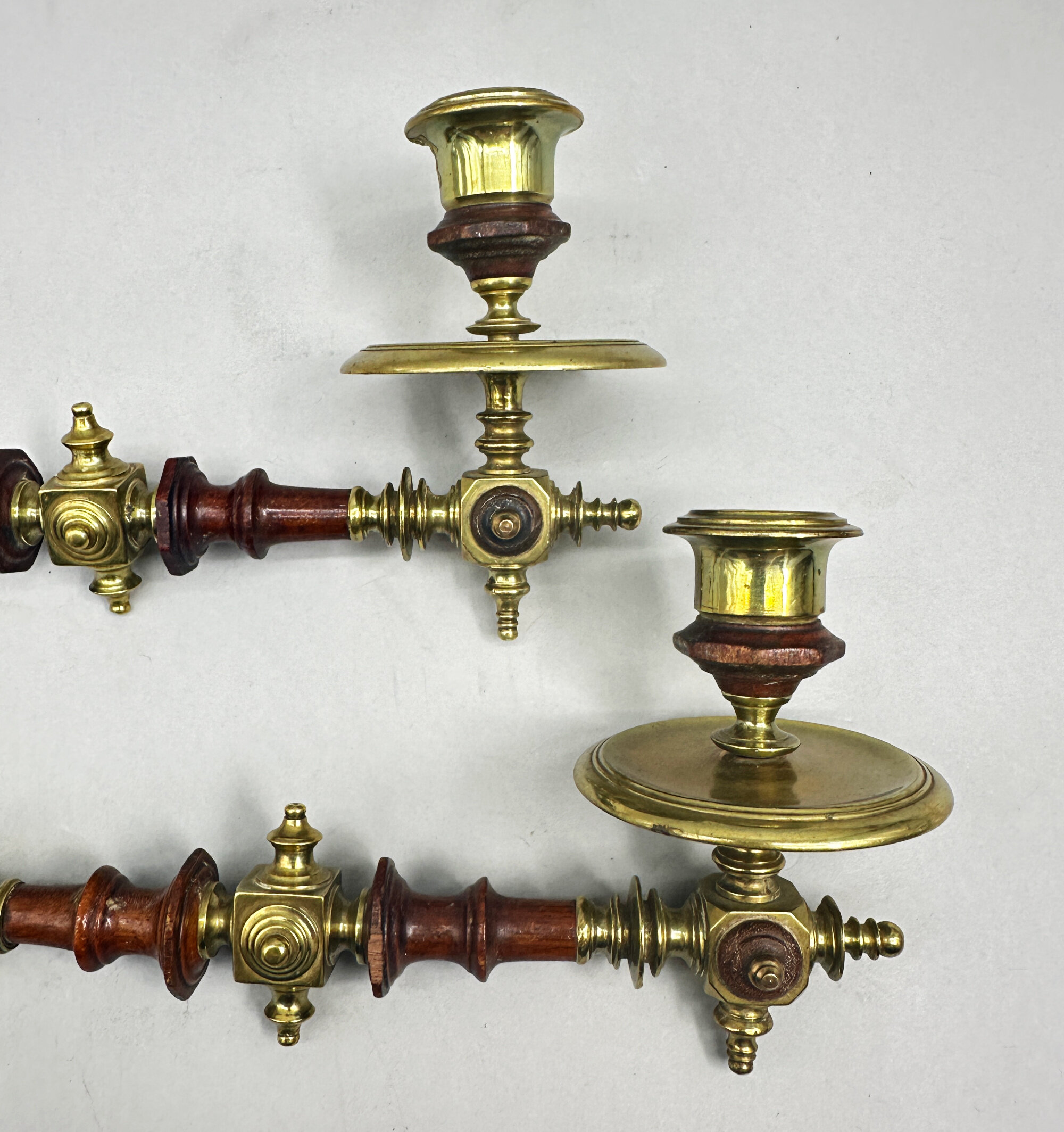
Art Deco piano sconces c1920
Price: £85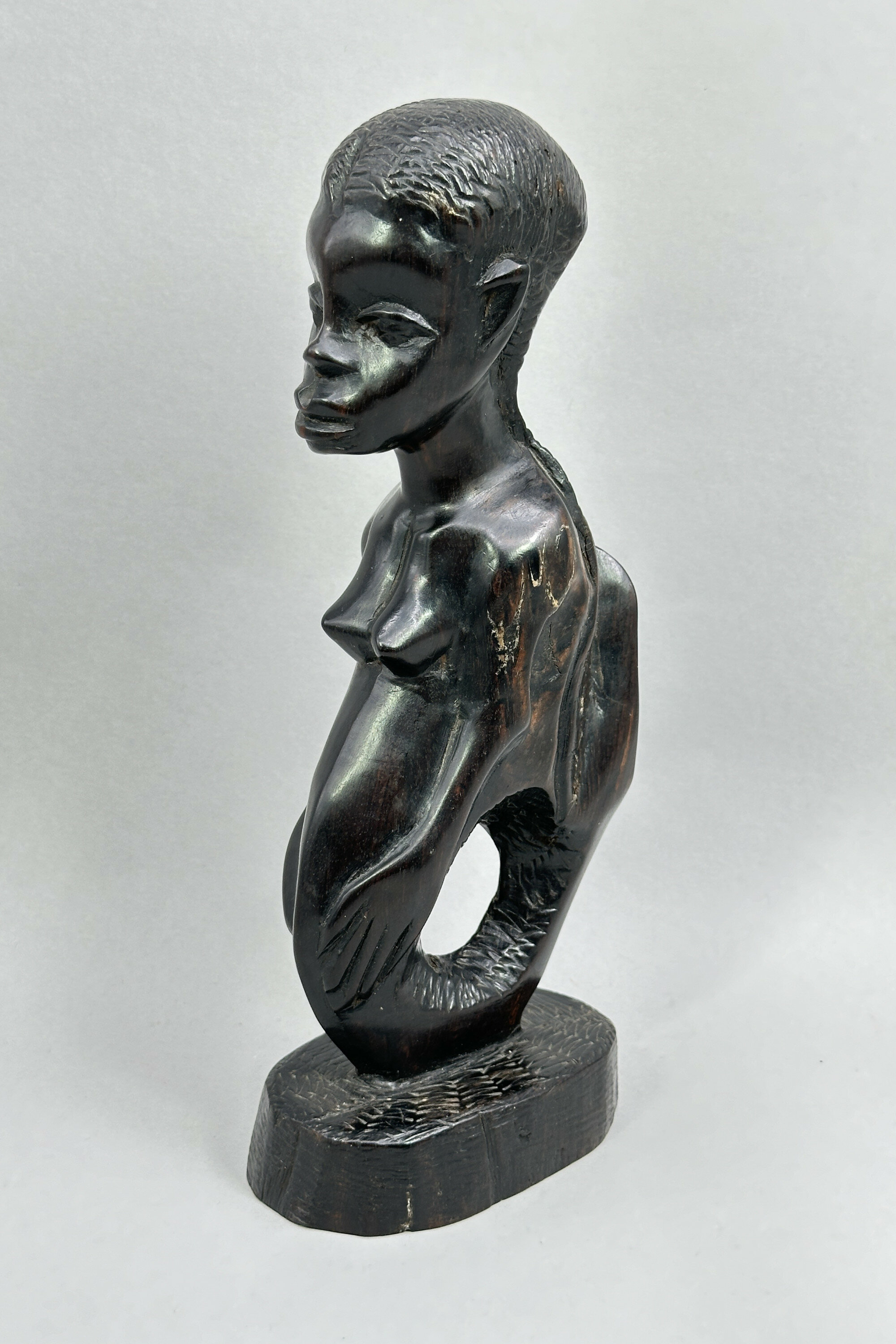
African Carved Wood Figure of a Lady, probably mid C20th
Price: £25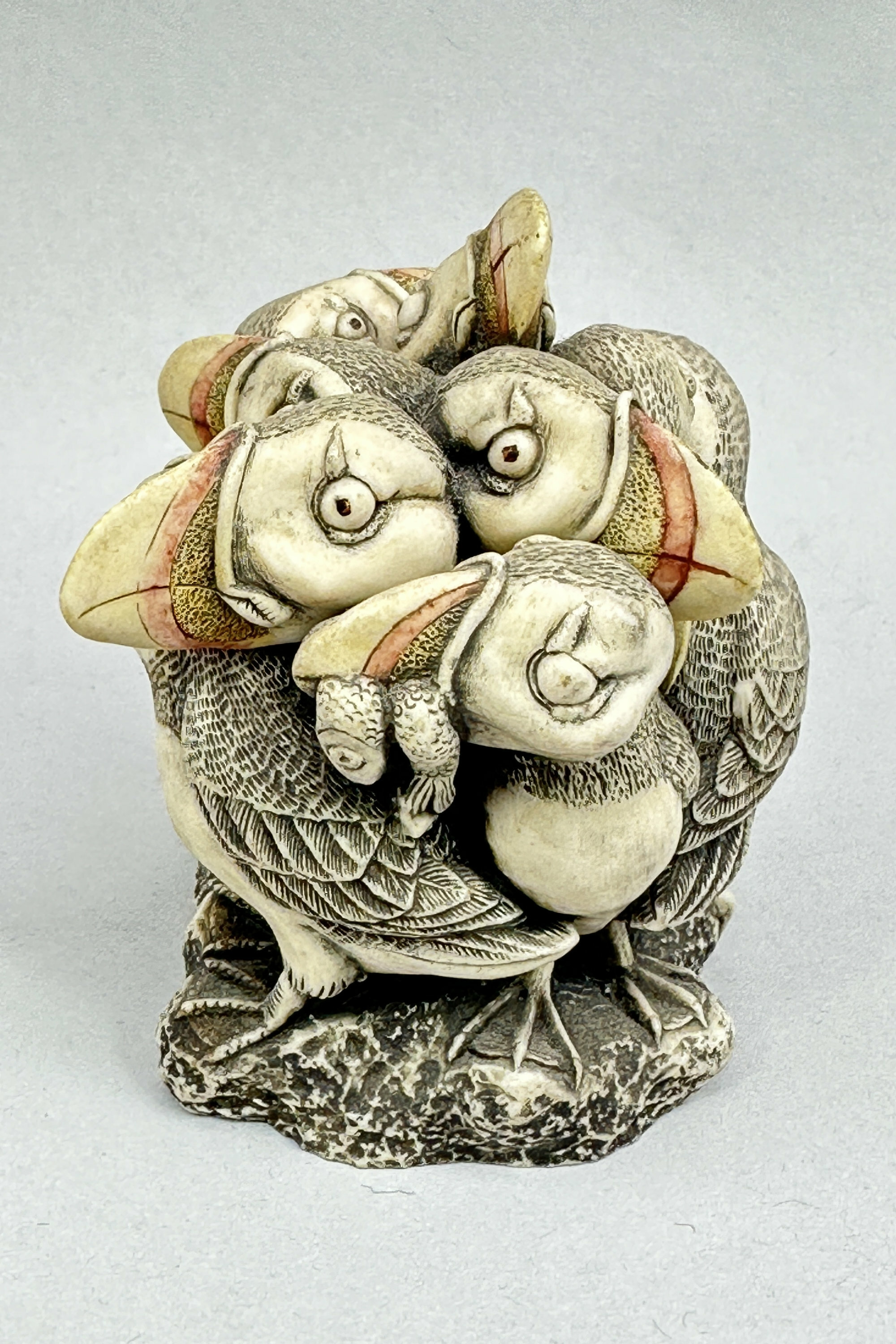
Harmony Kingdom Trinket Box with Puffins, dated 2001
Price: £20Harmony Kingdom is a business set up by Peter Calvesbert in 1992. Their studio is situated in the Malvern Hills and they have been producing whimsical figurine sculptures for over 25 years which have an enthusiastic following, particularly in the USA. ‘In Fine Feather’ is a discontinued item so now has a very modest rarity value in addition to its intrinsic charm.
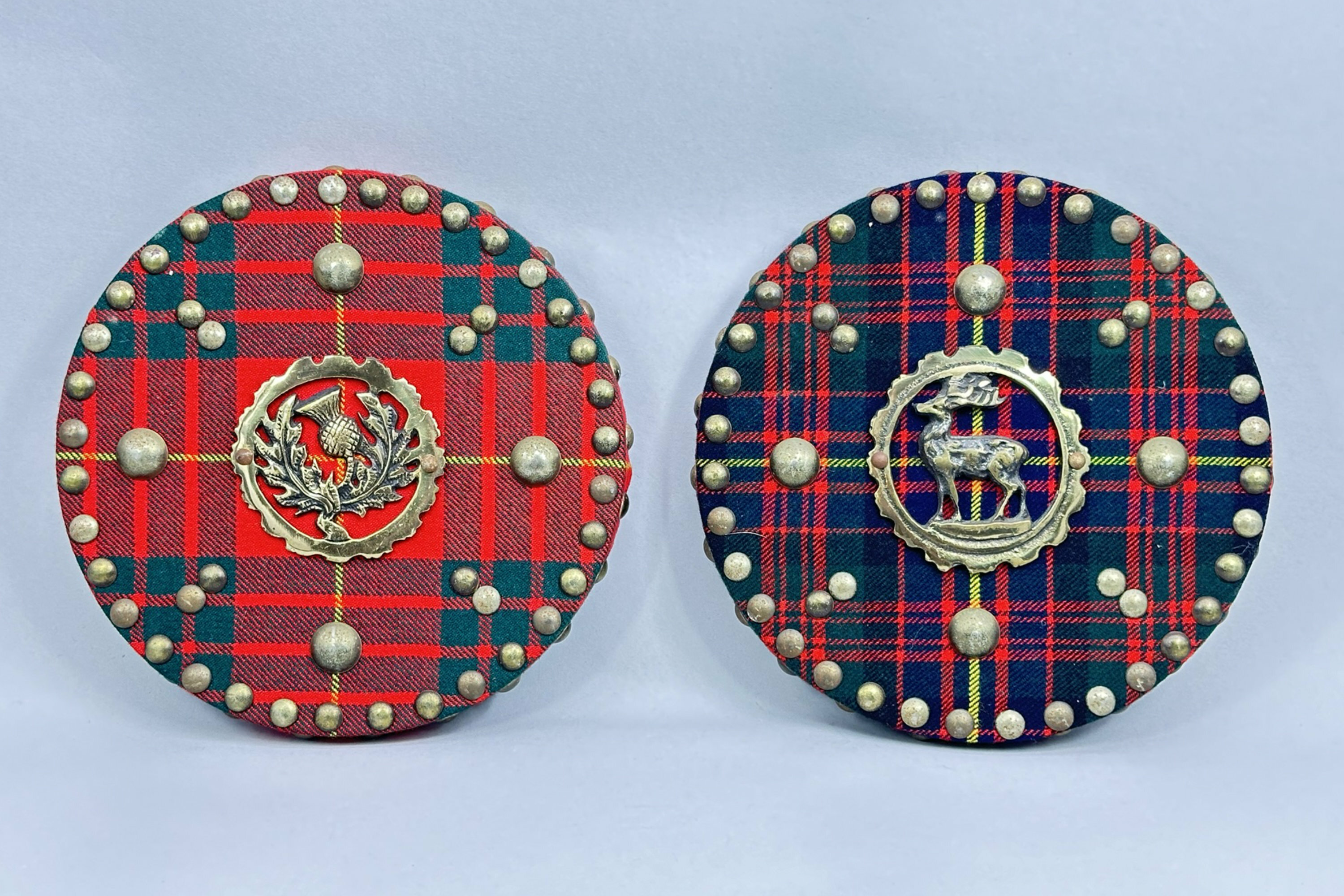
Two Scottish Tartan Plaques, C20th
Price: £35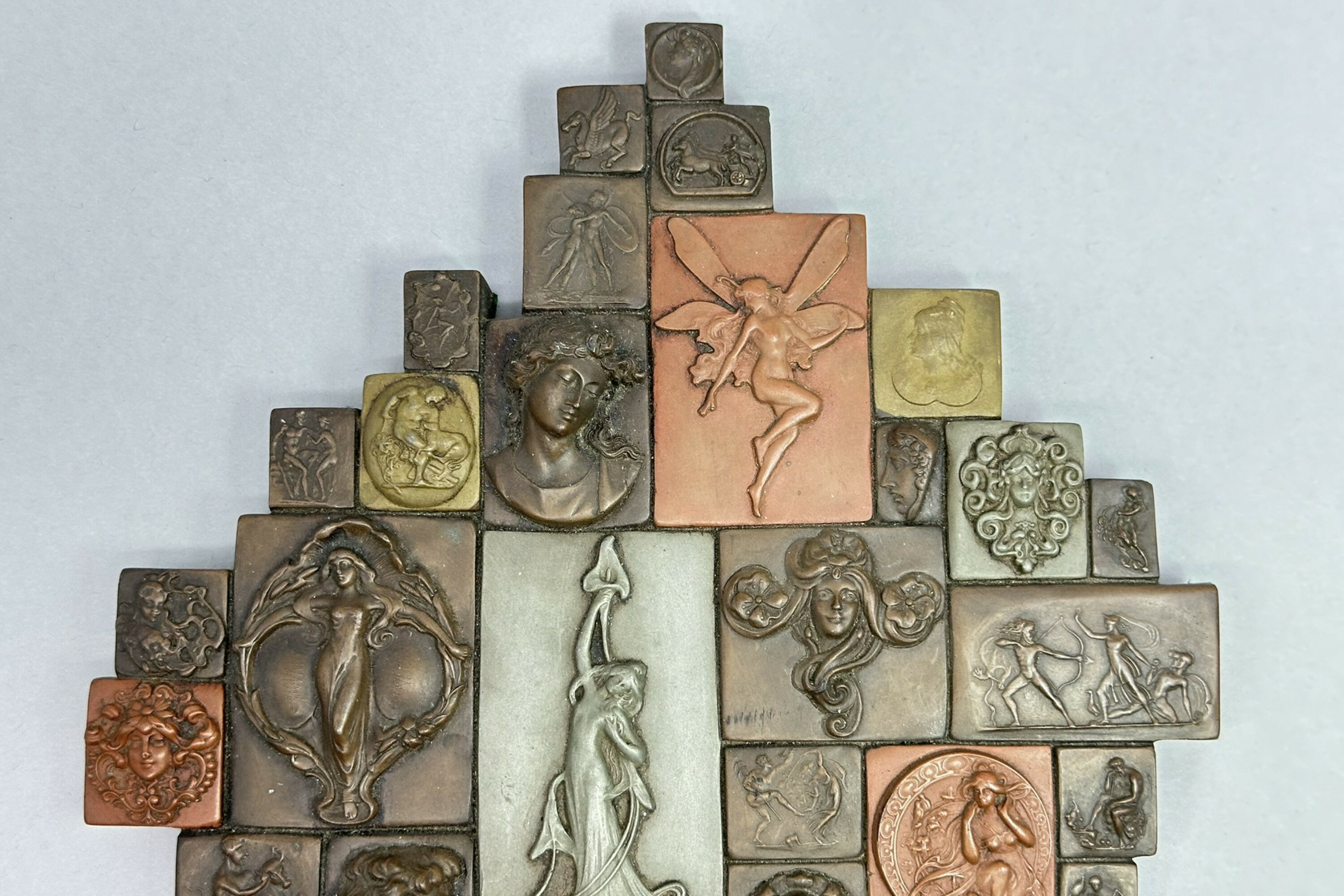
Wall plaque by Giovanni Schoeman depicting classical style figures, 1970s
Price: £75While Art Nouveau in style, Schoeman only perfected these techniques in the late 1960s, producing pieces in the style from a studio in Kentish Town which sold well in the London outdoor art markets. In the late 1970s, Schoeman moved to America with the intention of producing large scale art but the venture foundered and he died in 1981. This plaque, of which other examples are known, must have been one of his most popular designs in those London years and is a striking example of the techniques he developed and mastered.
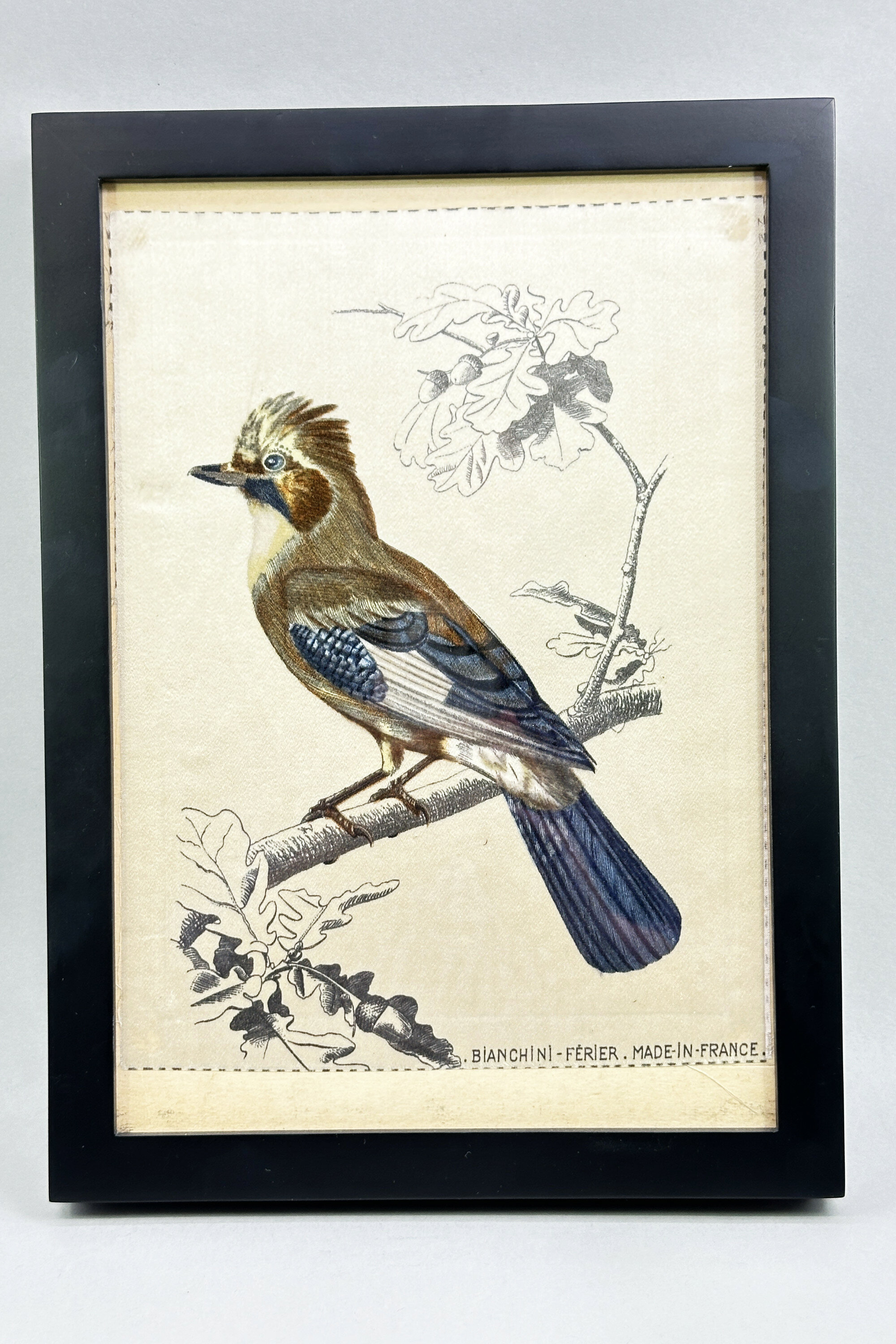
Silk Print of a Bird, Bianchini-Ferier, France, early C20th
Price: £25Bianchini Ferier was a silk weaving manufacturer based in Lyons. Founded in 1888 by Francois Atuyer, Charles Bianchini and Francois Ferier, it first produced fine silk damasks mainly for the clothing industry. After gaining a silver medal at the Paris Exposition Universelle of 1889 it went on to enjoy great success and many well known artists created designs for it in the early C20th, most notably Raoul Dufy. Production continued until the early 1990s when the firm was acquired by Tissages Bauman.
This print resembles designs in the firm’s archives from the late C19th and was probably created in the early C20th. It was designed for framing and the dotted line definition of the composition can be seen at the edges. Presented now in a modern surround it provides an excellent example of the firm’s work and a reflection of the Art Nouveau style so popular when it was produced.
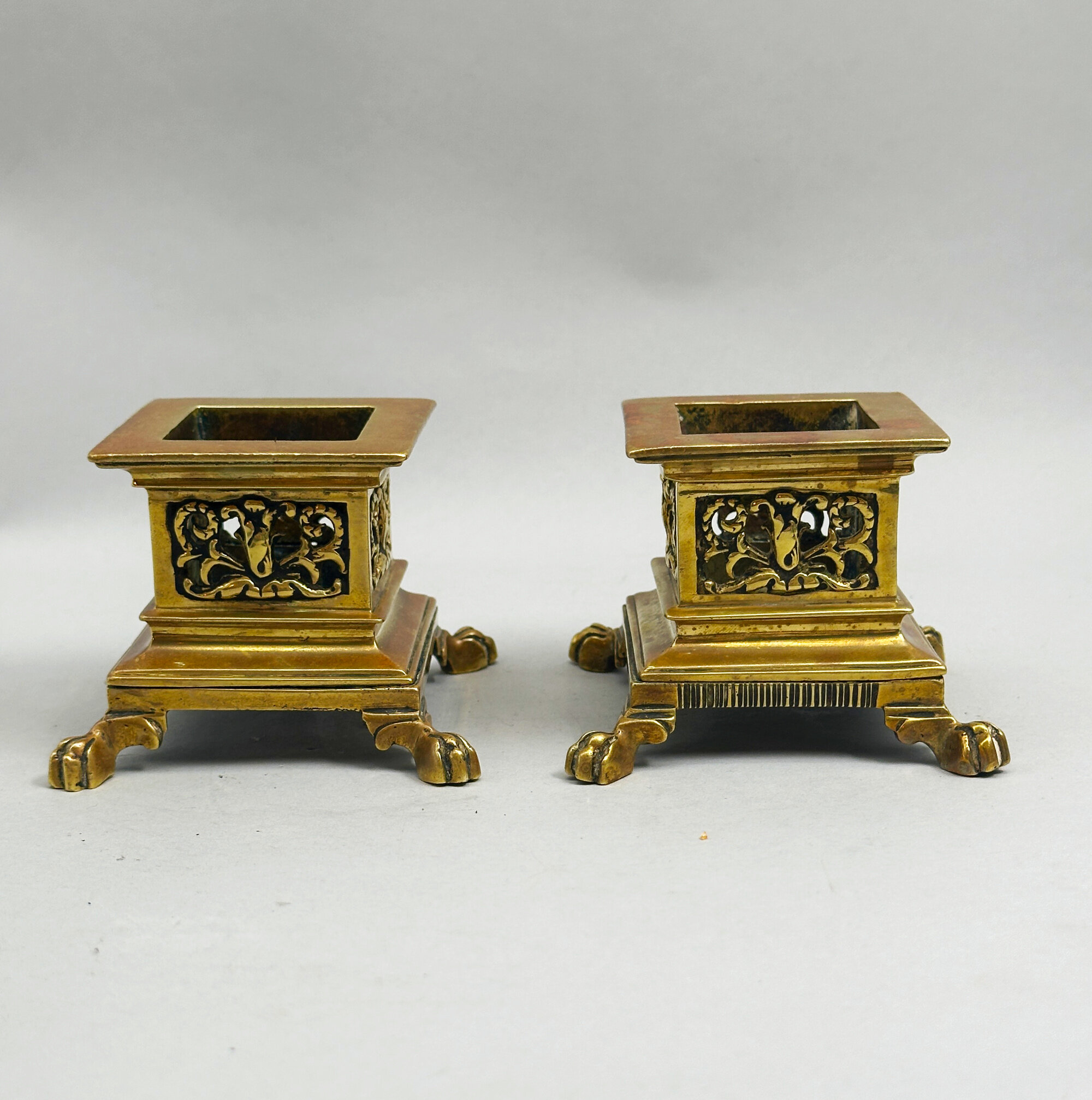
Pair of Georgian Style Square Gilt Bronze Table Salts, English C19th
Price: £45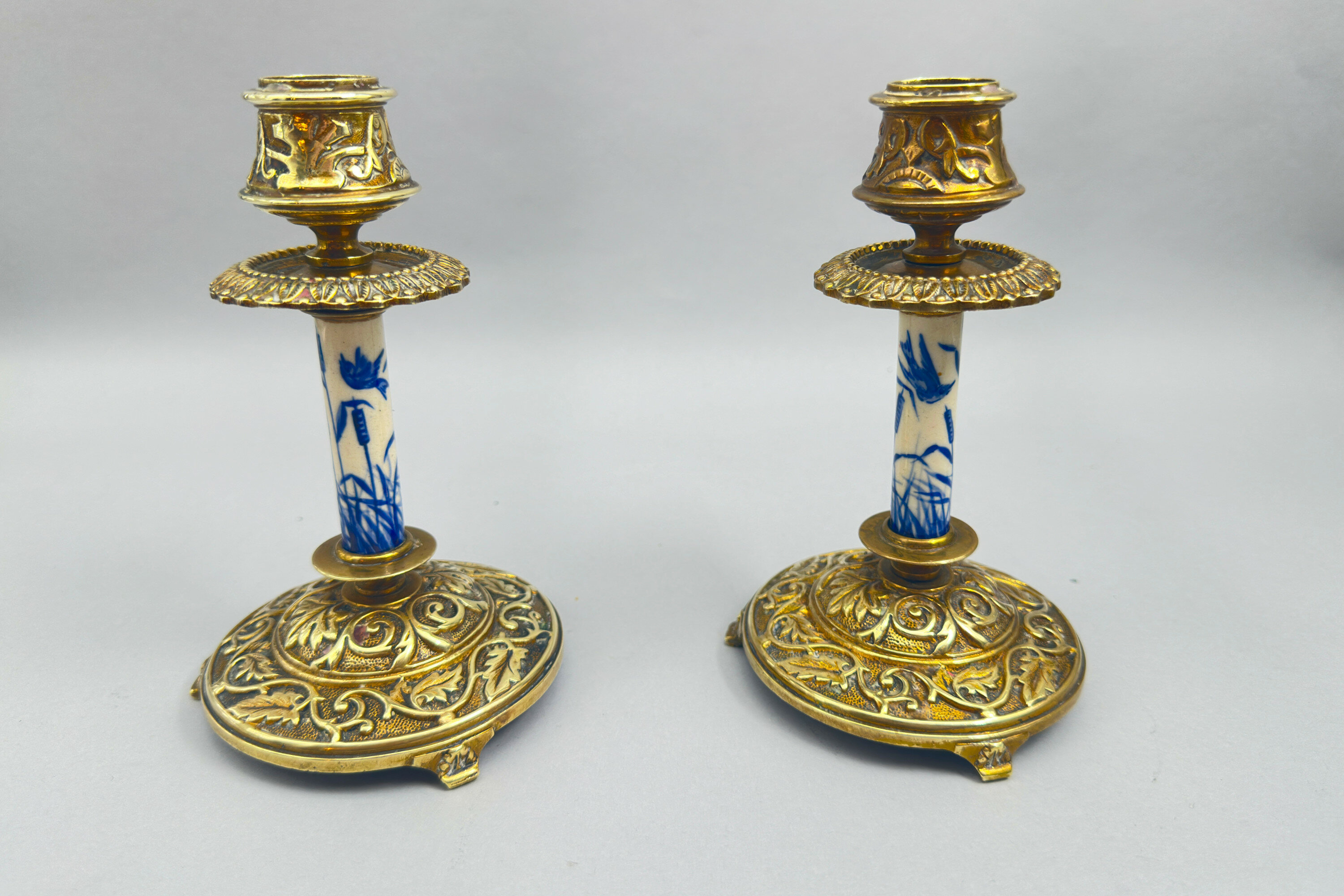
Pair of Aesthetic Movement Candlesticks Porcelain and Gilt Bronze, late C19th
Price: £75The design and style of these pieces recalls products of the ‘aesthetic movement’ era popular in Britain from 1860 to 1900. The object was to produce items of beauty and the furnishings and domestic objects of the middle-class home were to be of a quality that would please the eye of the artist and grace the houses of collectors and connoisseurs. William Morris, in particular, concentrated on distinctive organic forms and the floral designs of his wallpaper and tiles are reflected in the gilt bronze decoration here (see image 8) . The influences on the movement were diverse and Oriental porcelains extremely popular. Perhaps this explains the use of blue and white ceramic here, although the work looks Western rather than Eastern. The form of the nozzles also has many parallels in other contemporary candlesticks. Although there is a slightly continental feel to these pieces, the aesthetic movement was very much a British fashion so English manufacture is the most likely with a circa date in the late nineteenth century before the style lost its popularity in 1900.
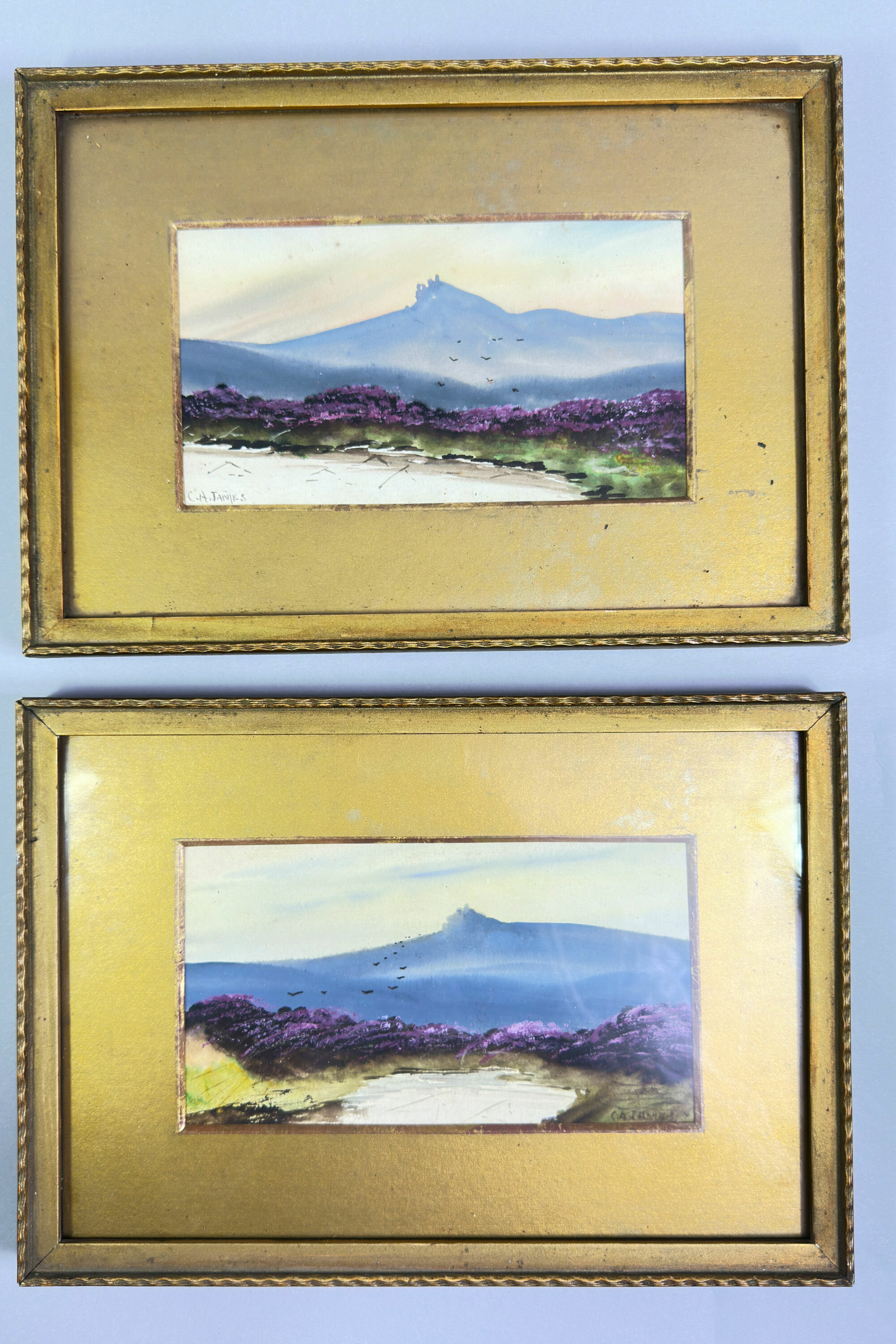
Pair of framed Watercolours, Dartmoor heather fields, signed C.A.James, early C20th
Price: £45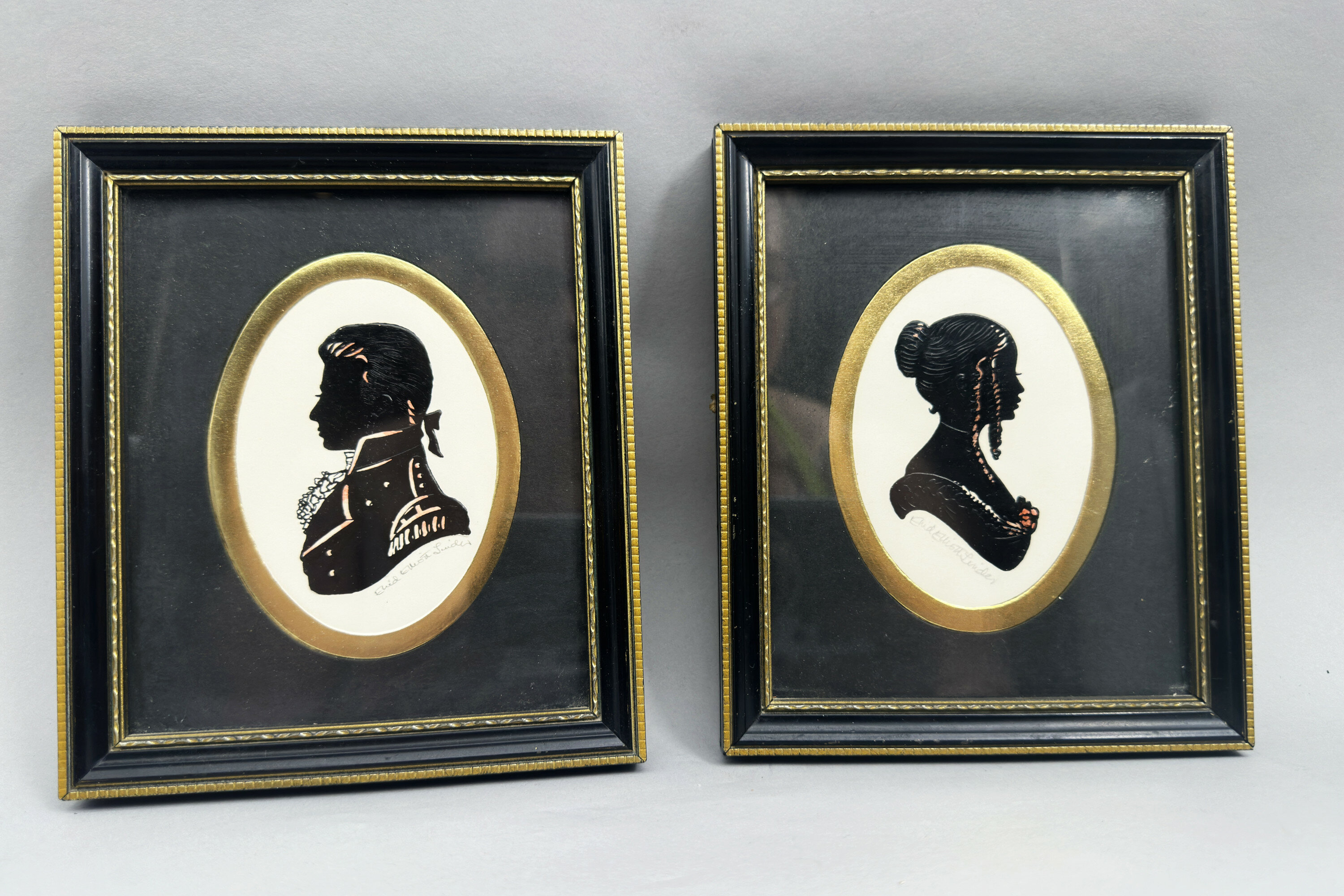
Pair of Silhouette Portraits by Enid Elliot Linder, framed, late C20th
Price: £25Known first as ‘profiles’ or ‘shades’ silhouettes became a common form of portraiture before the development of photography but continued to be made well after and indeed into the C20th. This pair of portrait heads, two from a series of twenty according to the label on the reverse, were produced in a studio set up by Enid Elliot Linder in the 1970s. Starting in a room at the back of a house in Babbacombe, Enid Linder, an artist with a great talent for painting silhouettes, began production in 1972 and, within the space of a few months, helped by her husband and four assistants was producing 500 pictures a week, necessitating a move to larger premises on the Teignmouth Road. By 1980, the ‘Pennyfarthing Galleries’, as they had become known, had sold an estimated 150,000 to 200,000 pictures all around the world. All were all produced at the Teignmouth Road premises, and checked and signed in pencil by the artist. Various series were produced and this pair of portraits come from what seems to have been a series of generic images of early nineteenth century figures. The influence of Jane Austen is obvious and these two silhouette heads are an attractive reminder of a tradition of portraiture with long historical associations.
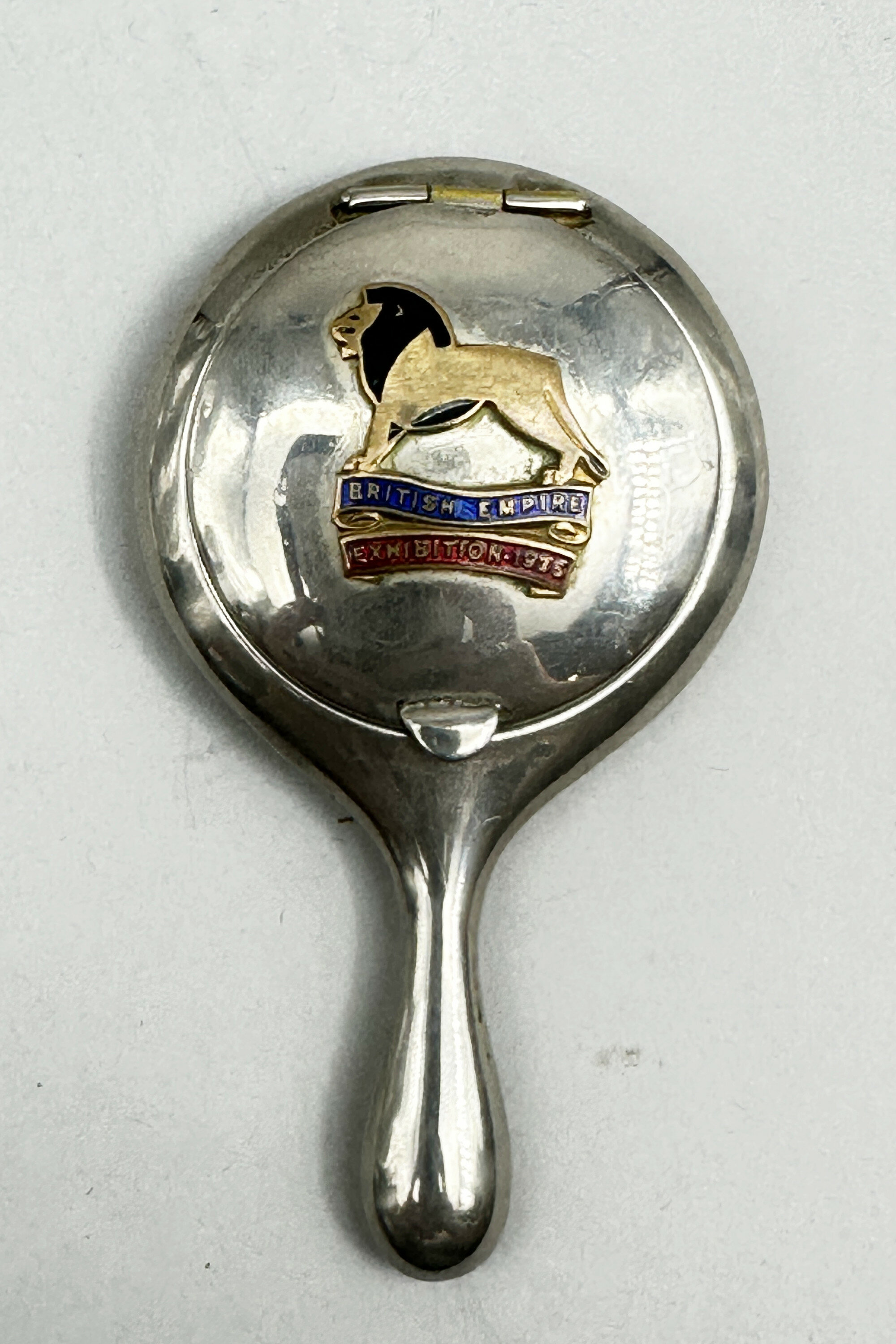
Powder Compact, British Empire Exhibition (1924-1925), dated 1925
Price: £45Souvenirs and medals were produced, amongst which were silver plated powder compacts as here. The round container for the powder has a hinged lid revealing the powder well below, originally fitted with a mauve ribbon tasseled powder puff, and a mirror above. On the surface of the lid, which has a tab for lifting, is a stylised brass lion, a symbol of the British Empire, vitreous enameled in black, red and blue with the wording ‘British Empire Exhibition 1925 ’ There is a short rounded handle and the back has an engraved mark ‘Rd [registered] 689177’ for the patent number. While many were doubtless made (and there is another version with a more slender handle, with a ring at the end, and the background colourings of the lettering reversed) few of these compacts seem to have survived making this a desirable addition to a collection of British memorabilia.
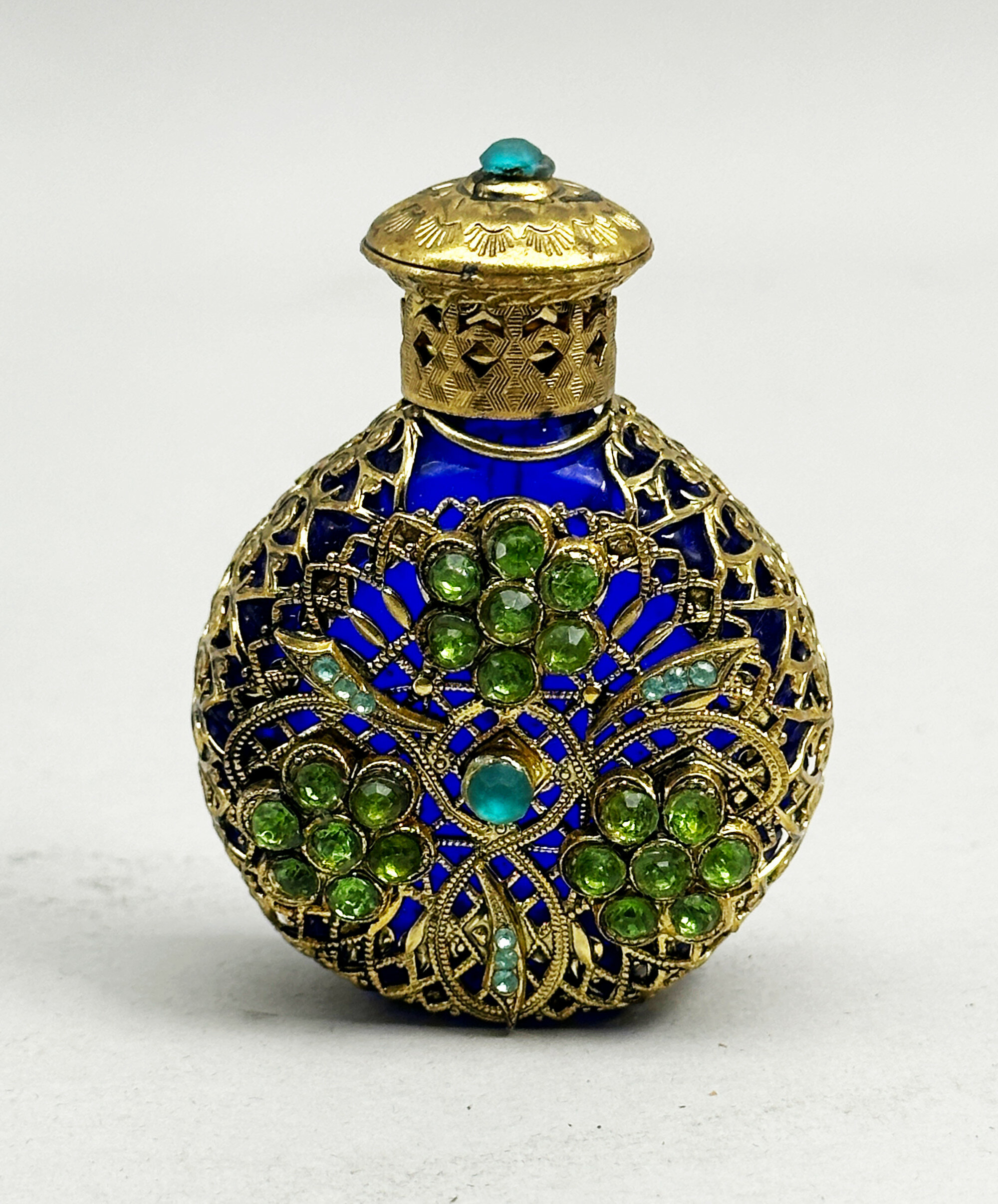
Czech rhinestone jewelled glass metal filigree Perfume Bottle and Stopper, C20th
Price: £25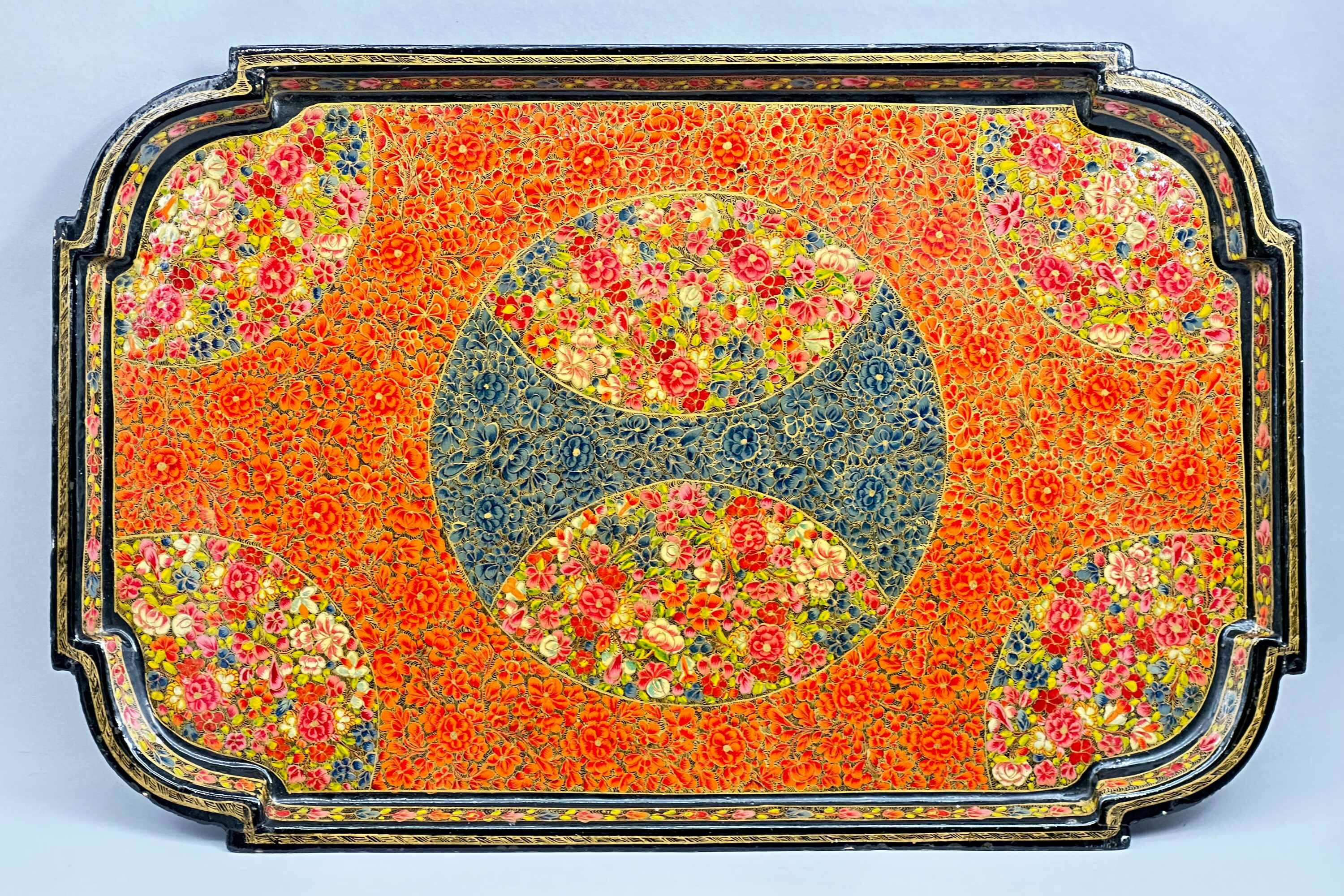
Papier Mâché Tray with Millefiori Decoration, Kashmir, C20th
Price: £55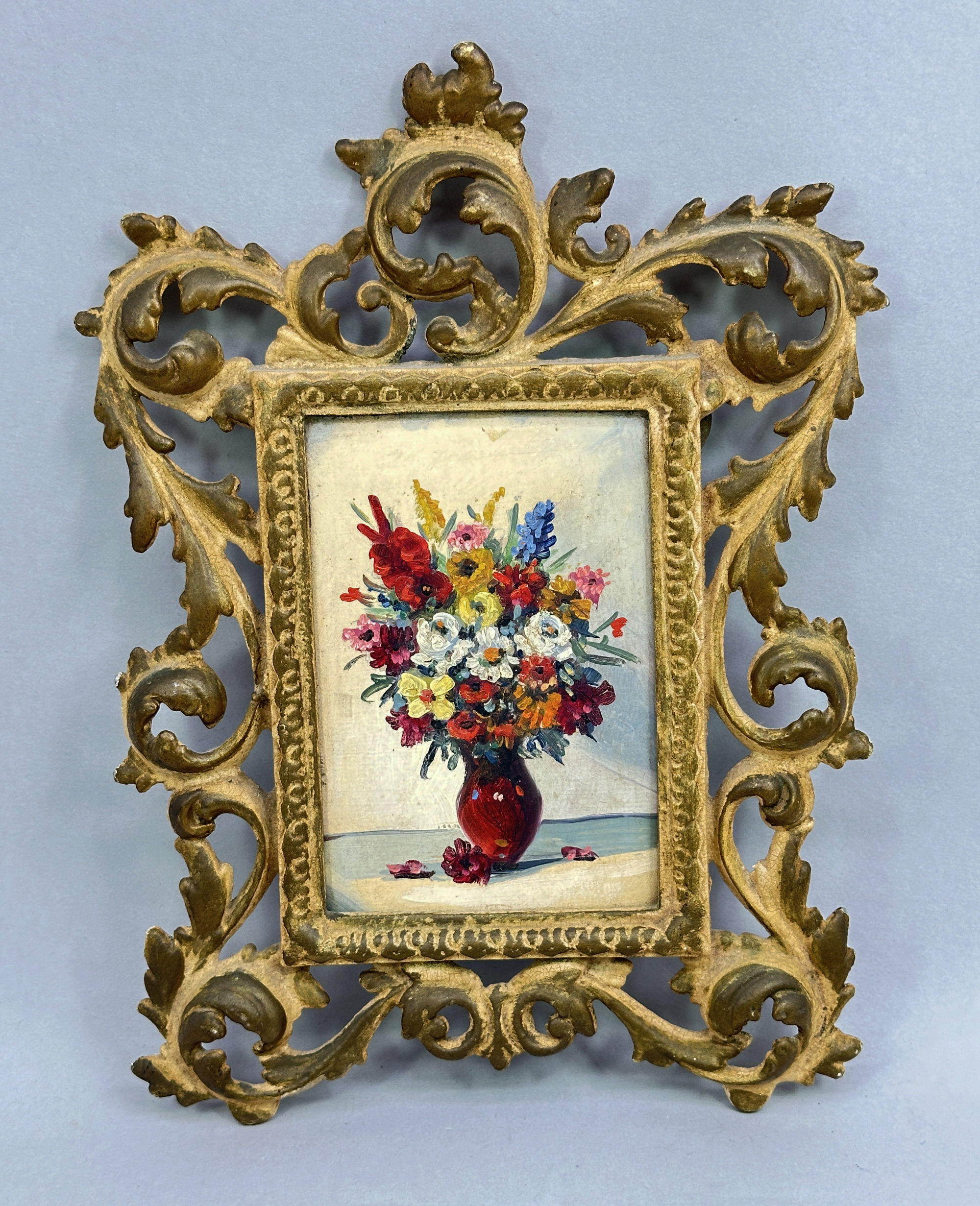
Baroque Style Picture Frame with Still Life, C20th
Price: £25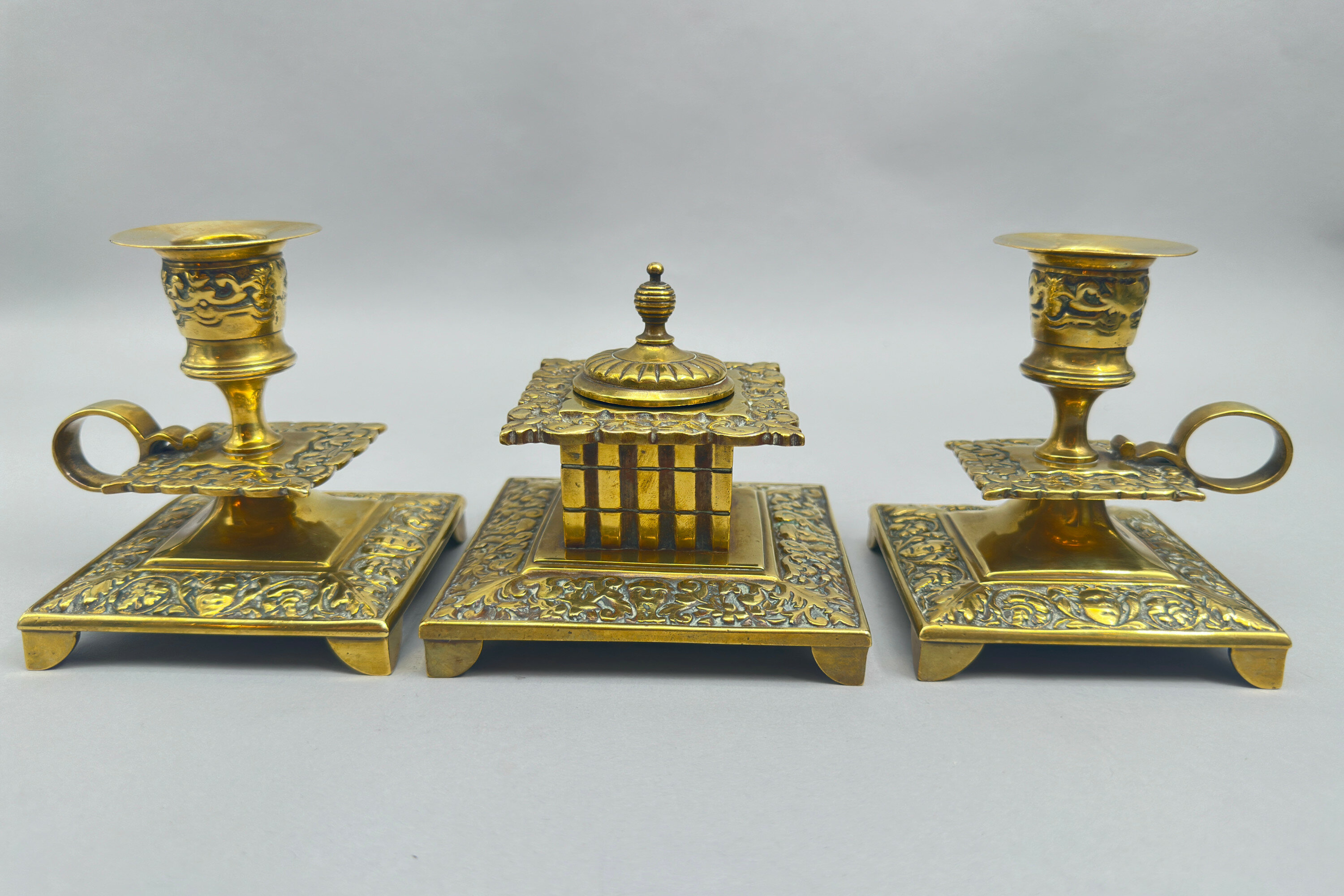
Renaissance Revival Brass Desk Set, English c 1900
Price: £55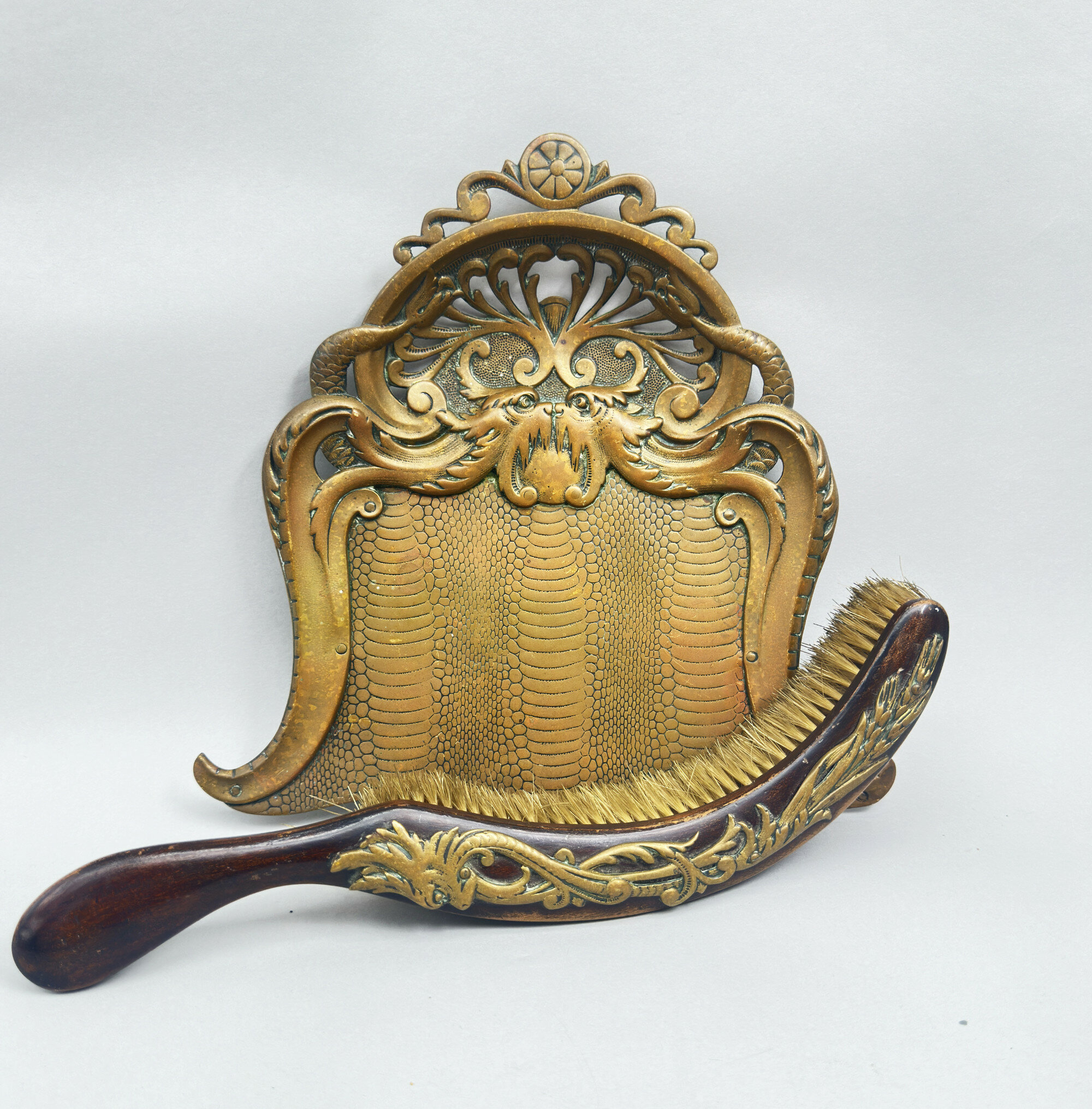
Townshend & Co : Butler’s Crumb Tray and Matching Brush, Birmingham c1900
Price: £75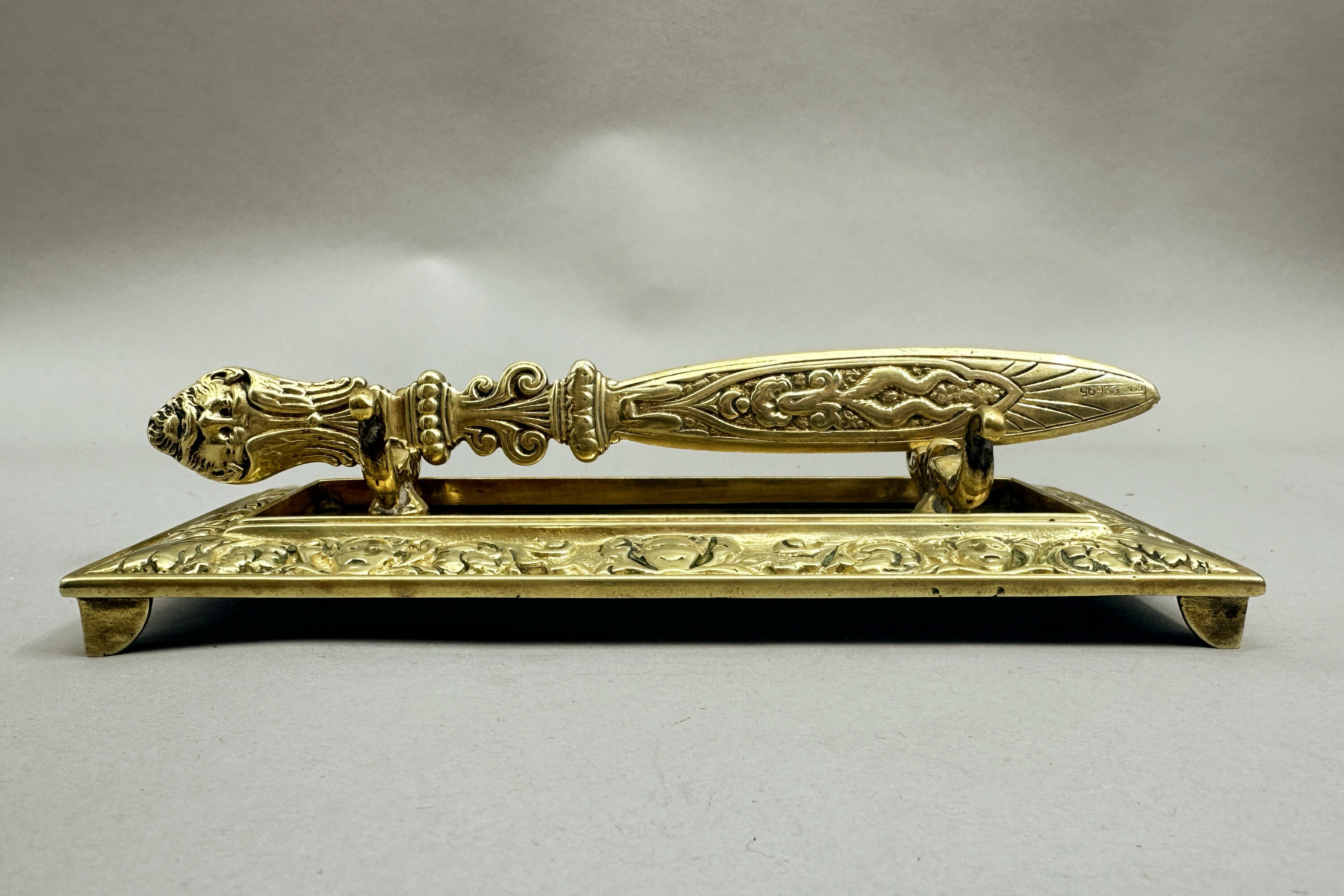
Renaissance Revival Letter Opener and Stand, English, c1900
Price: £25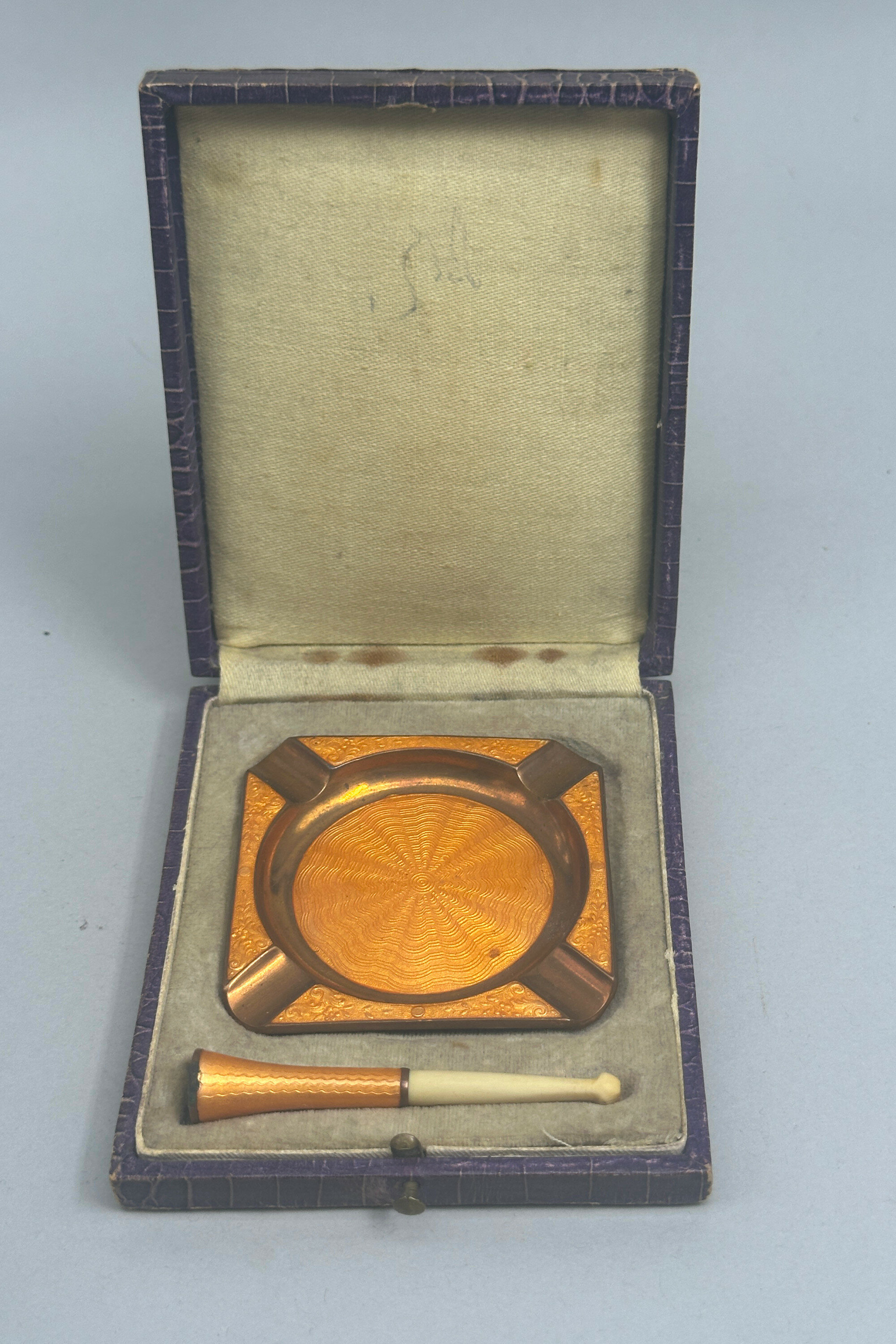
Art Deco Guilloché Copper Ash Tray and matching Cigarette Holder, boxed, c1930
Price: £35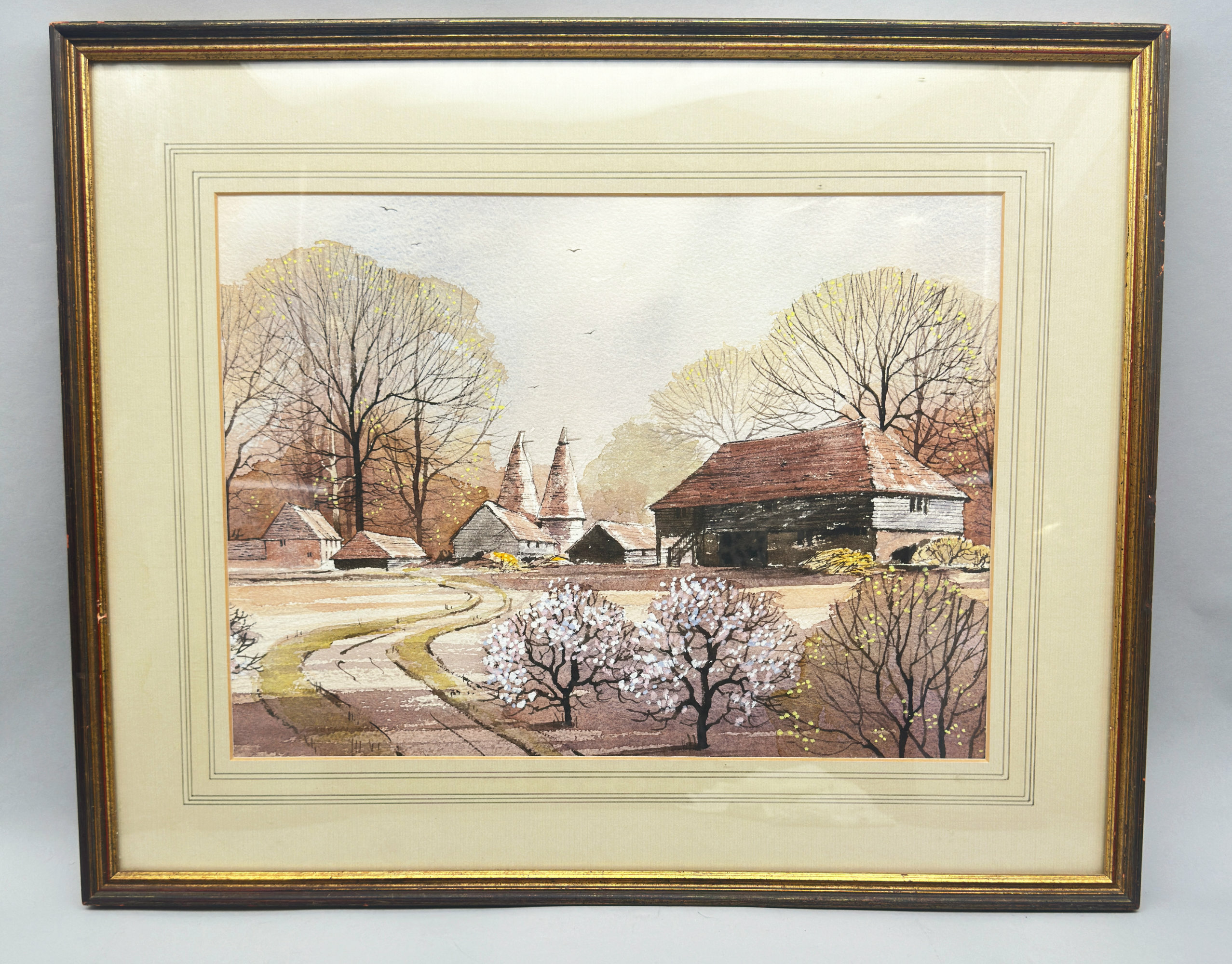
Watercolour by Elisabeth Castle, Kent Landscape Scene, framed, late C20th
Price: £45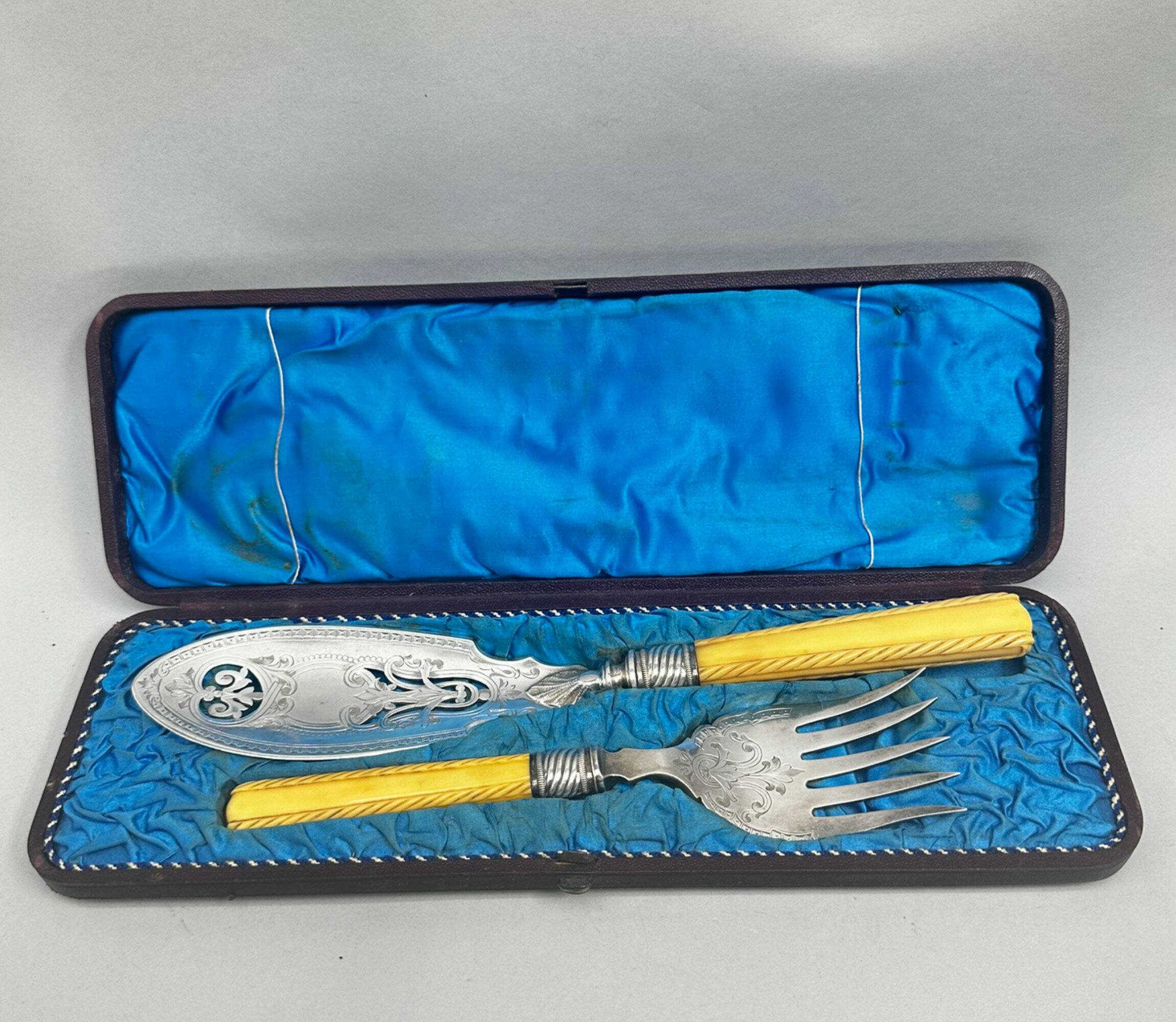
Pair of Silver Plated Fish Servers with fitted box, probably Edwardian
Price: £45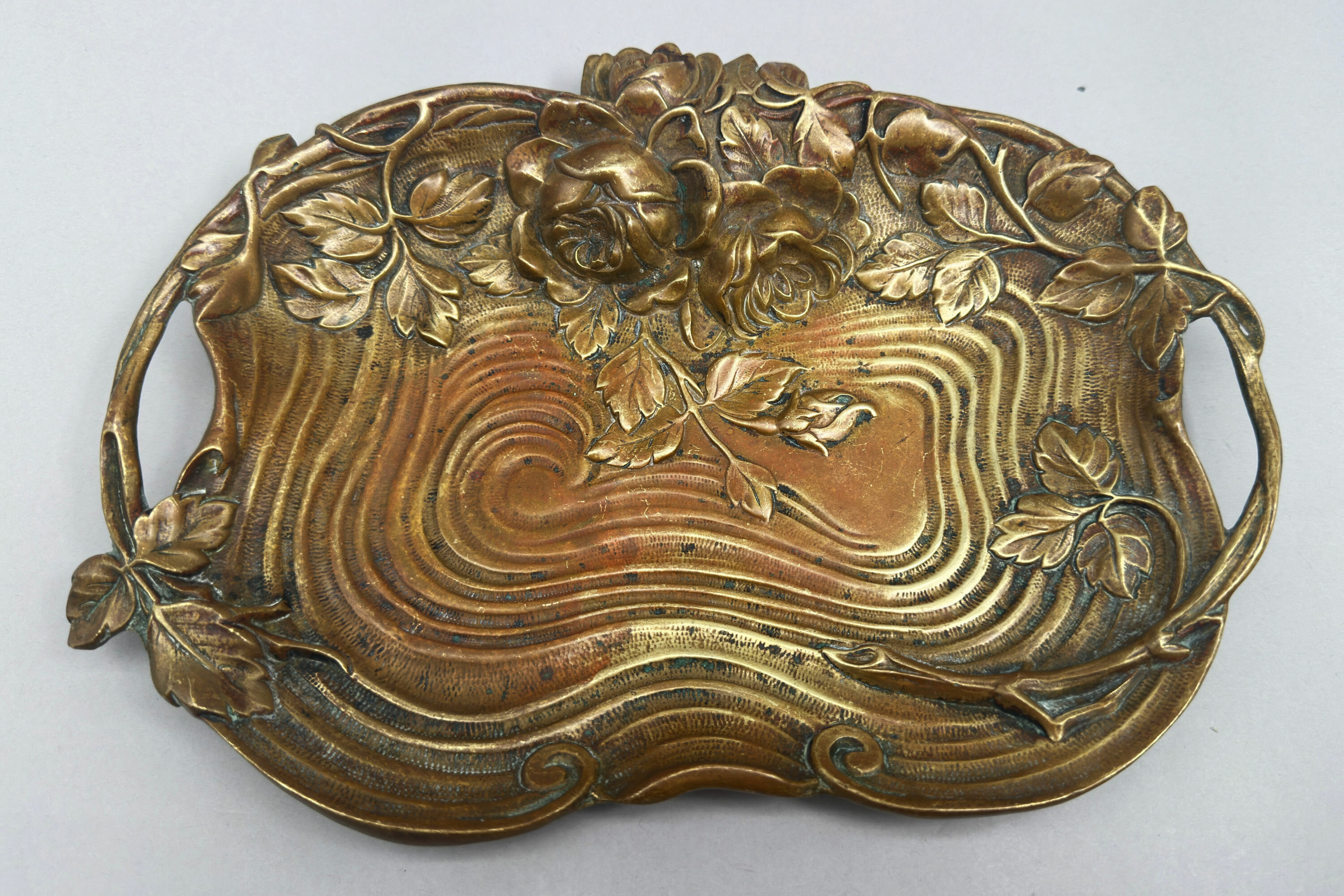
Art Nouveau Bronze Tray, stamped 172 Deposé, French c1900
Price: £95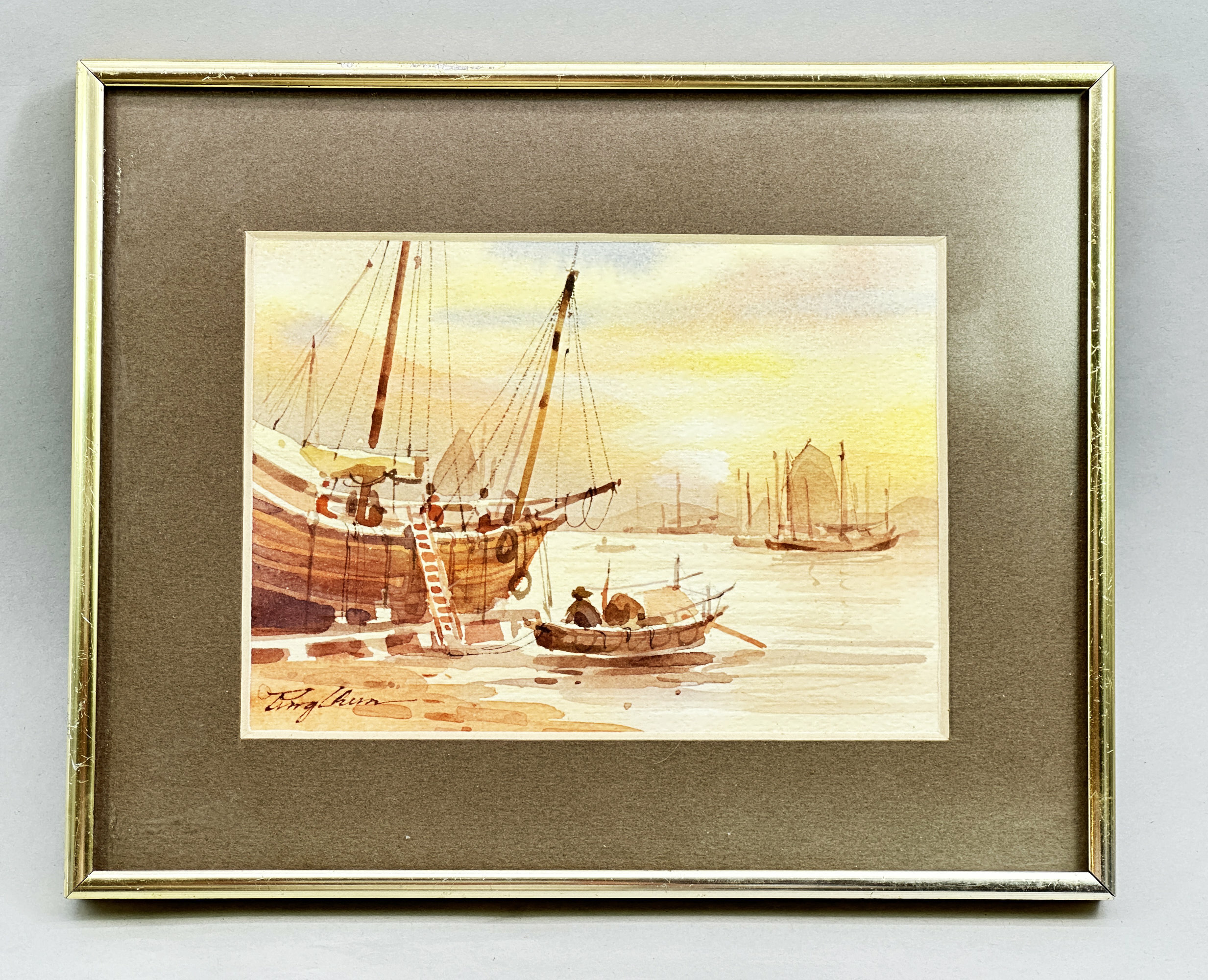
Framed Watercolour, Harbour or Beachside Scene, signed, C20th
Price: £25
Chinese Straw Thread Picture on Silk, framed in original box, late C20th
Price: £45
Chinese Straw Thread Picture on Silk, framed in original box, late C20th
Price: £45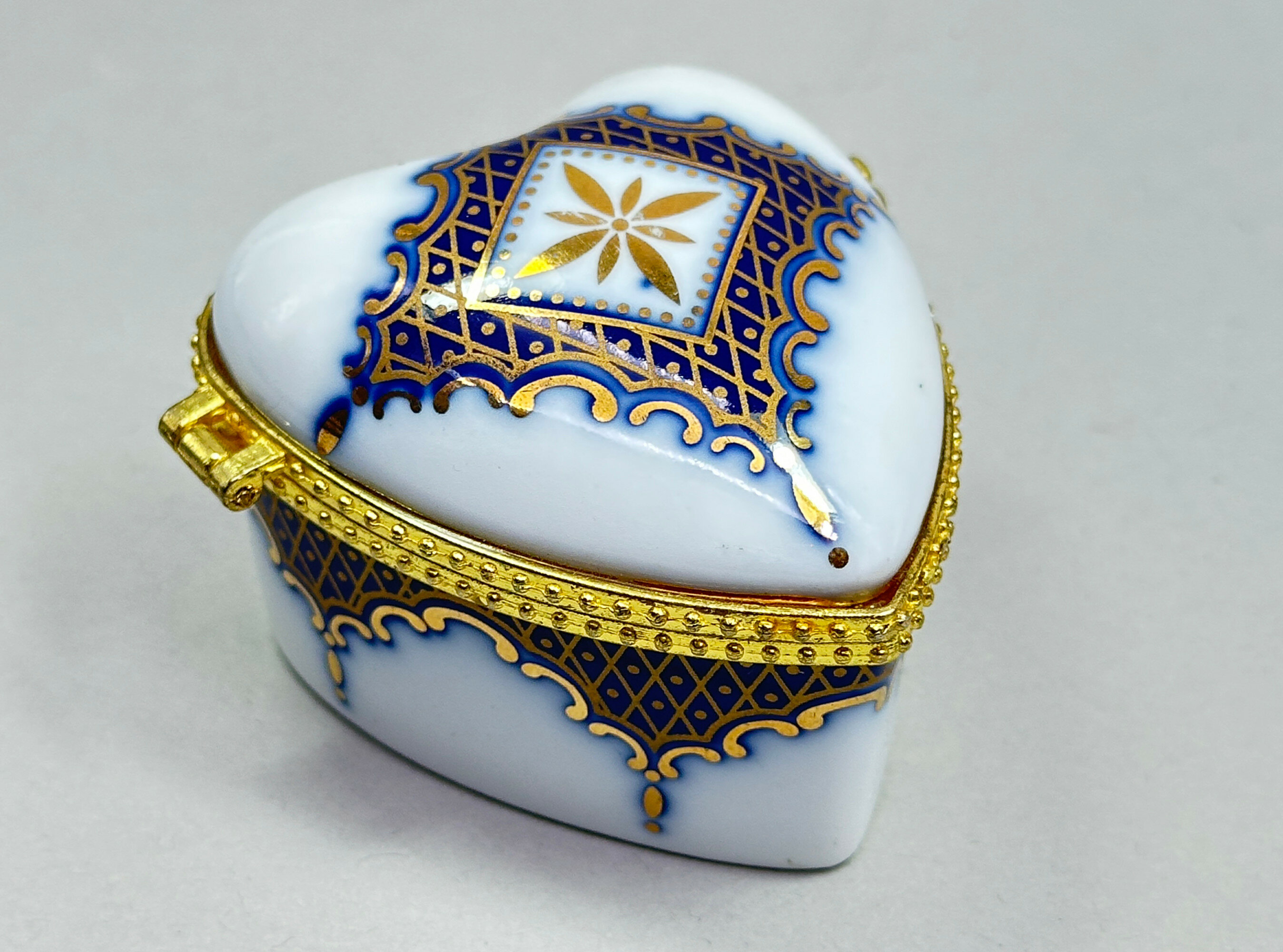
Oriental porcelain European Style Heart Shape Box and Cover, OC & CO, late C20th
Price: £15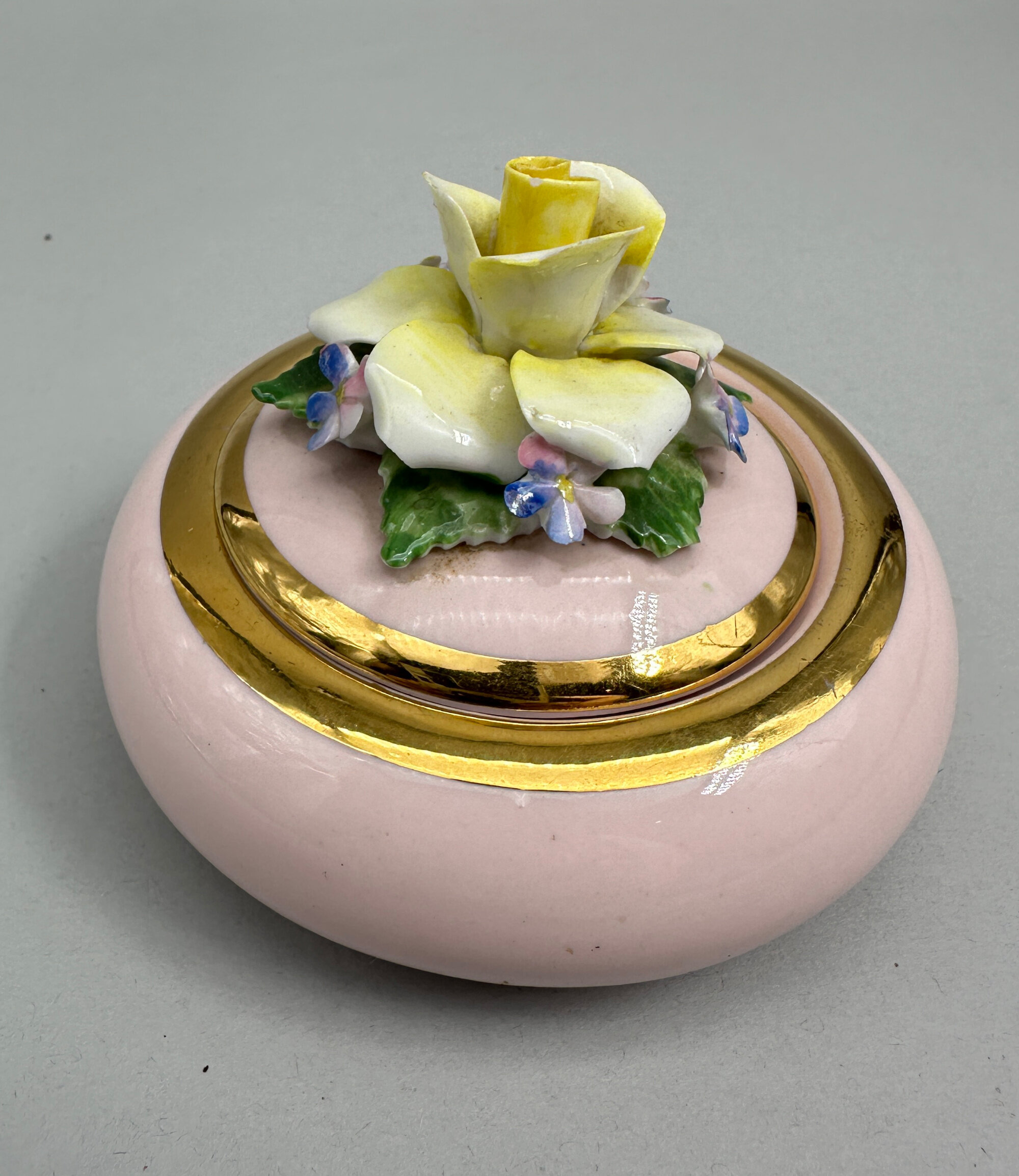
Pink porcelain powder box, Radnor Bone China, English Staffordshire, 1950s
Price: £15Radnor was the trade name used by Hall Bros (Longton) Ltd. Hall Brothers was a China manufacturer based at the Radnor Works, Longton, Stoke-on-Trent, England which traded from 1947 until its liquidation in 1972. It produced figures, birds, toby jugs and floral ware, mainly small porcelain boxes which were distinguished by their decoration of finely modelled flowers (see image XX for an advert from the 1960s). This box is a typical example and survives in excellent condition with just a very small amount of near inevitable damage to the petals.
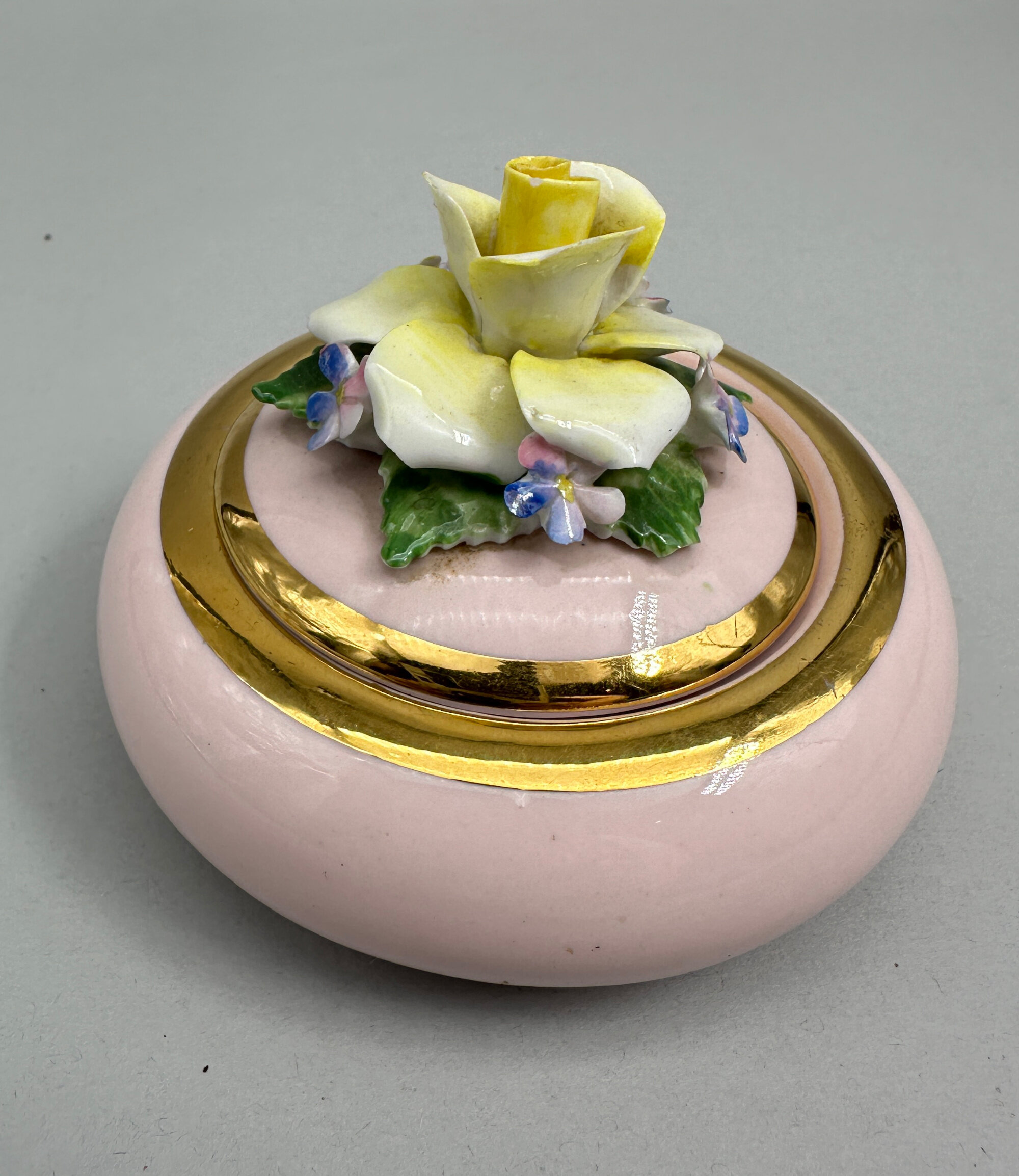
Pink porcelain powder box, Radnor Bone China, English Staffordshire, 1950s
Price: £15Radnor was the trade name used by Hall Bros (Longton) Ltd. Hall Brothers was a China manufacturer based at the Radnor Works, Longton, Stoke-on-Trent, England which traded from 1947 until its liquidation in 1972. It produced figures, birds, toby jugs and floral ware, mainly small porcelain boxes which were distinguished by their decoration of finely modelled flowers (see image XX for an advert from the 1960s). This box is a typical example and survives in excellent condition with just a very small amount of near inevitable damage to the petals.
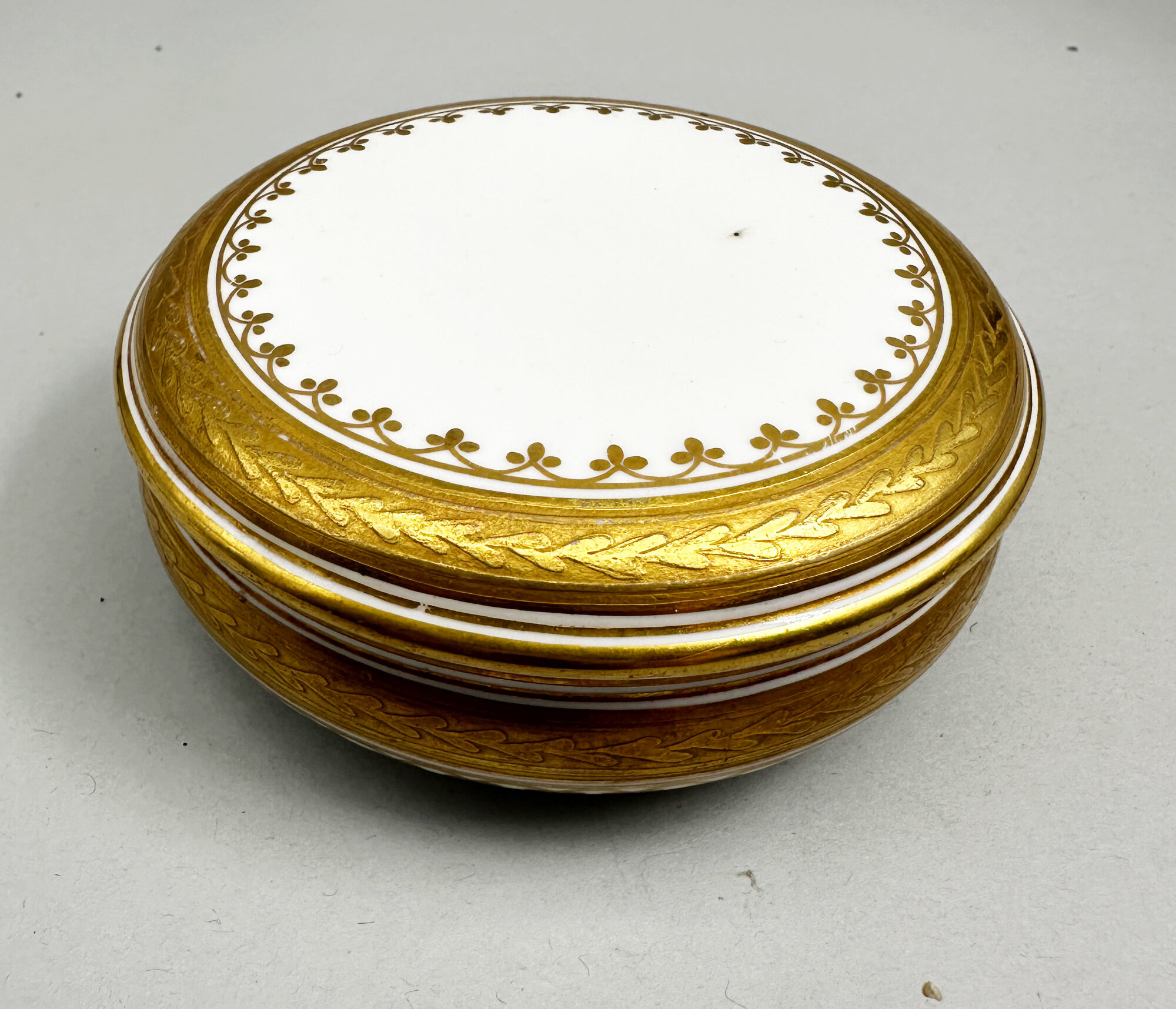
Gilt decorated English porcelain powder box and cover, probably mid C20th
Price: £15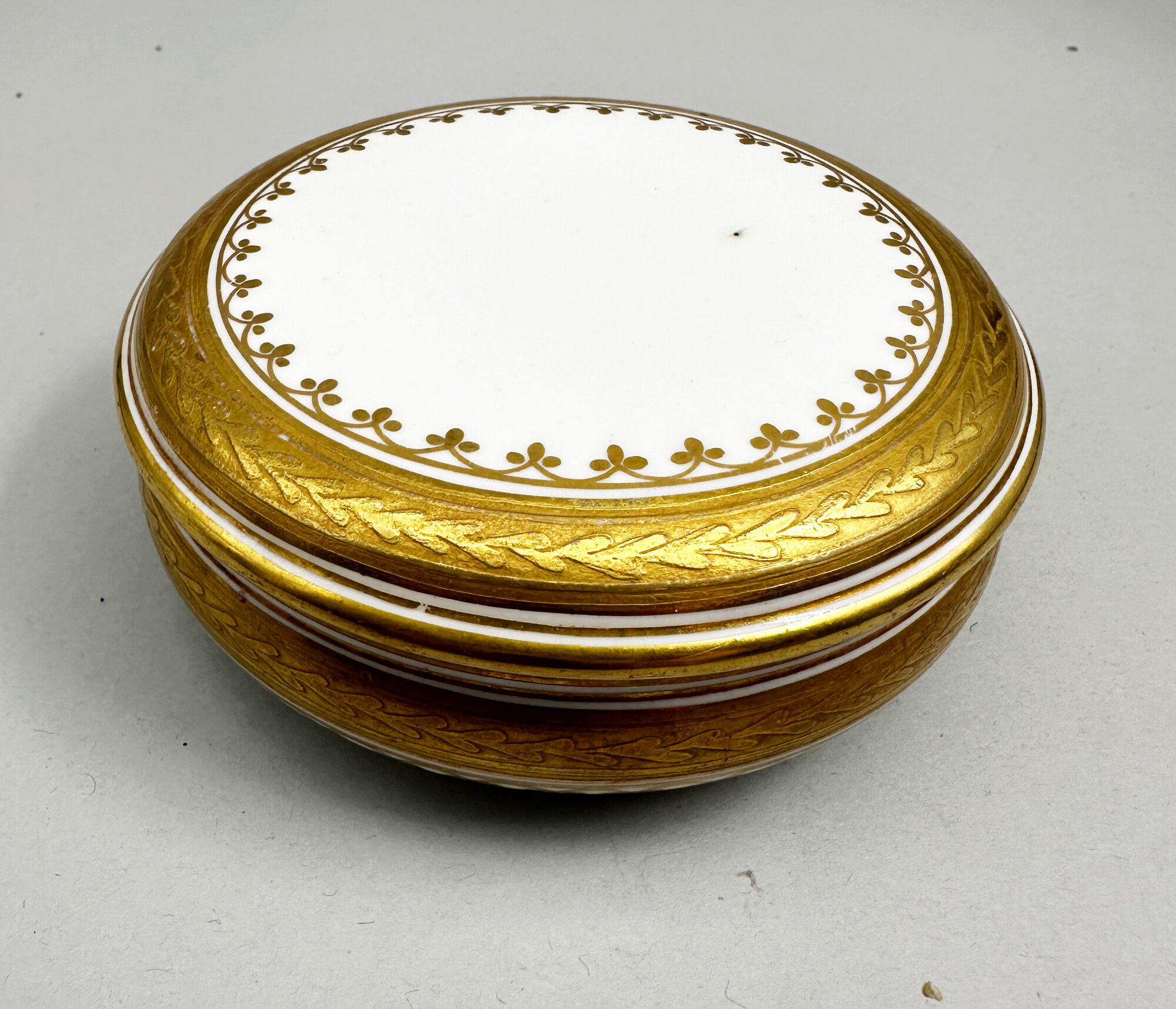
Gilt decorated English porcelain powder box and cover, probably mid C20th
Price: £15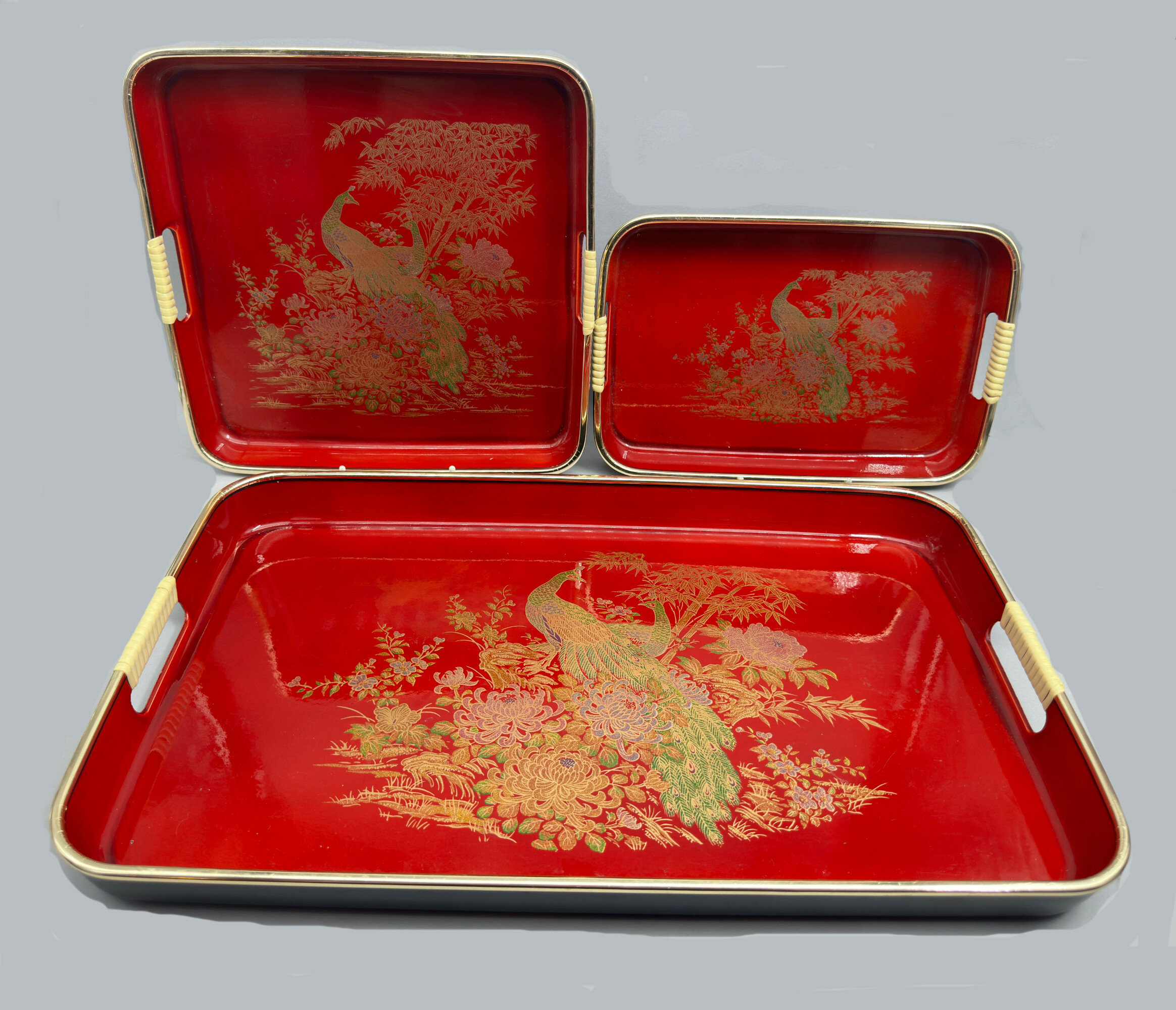
Set of Three Japanese Lacquer Nesting Trays, mid to late C20th
Price: £45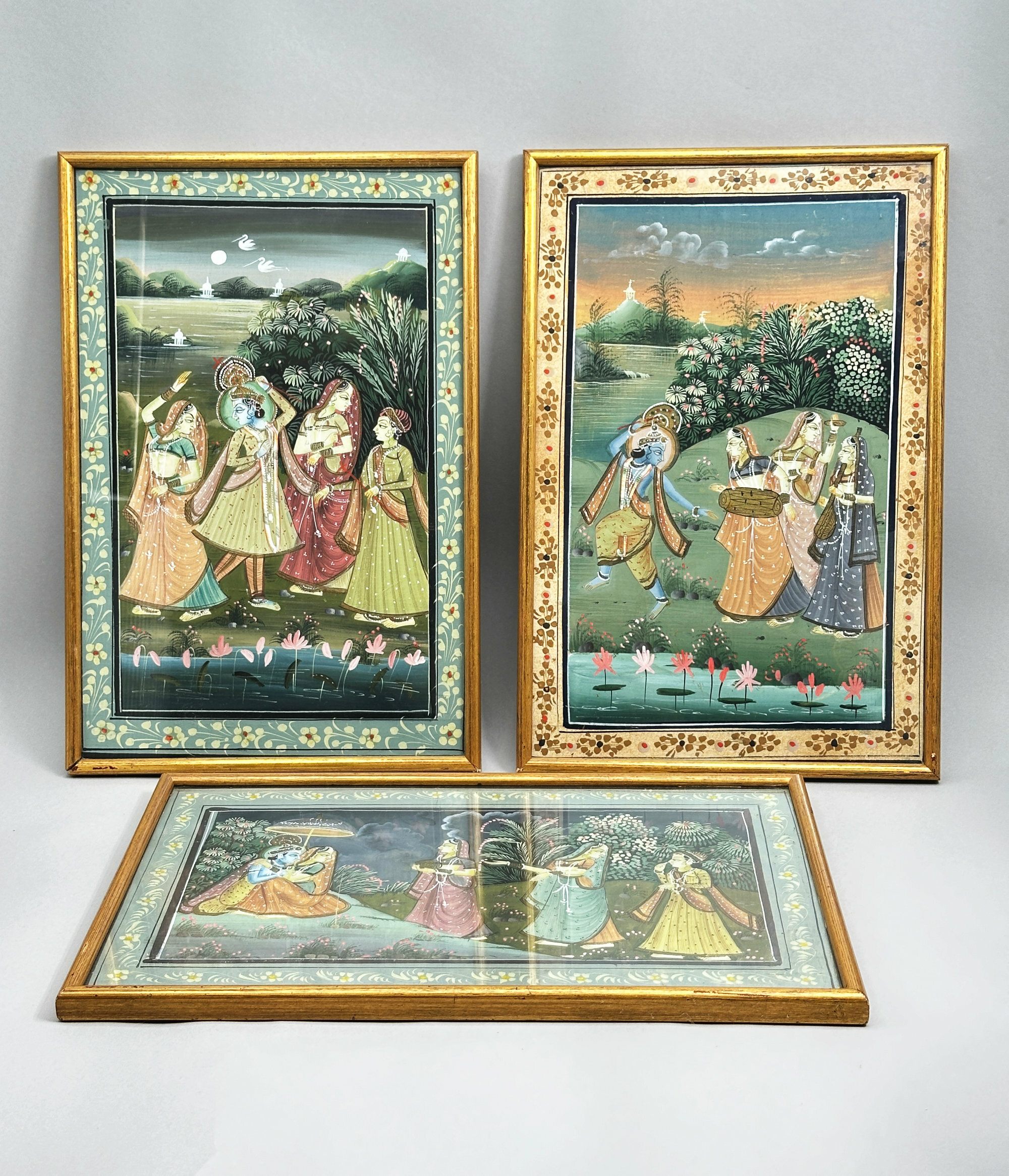
Three Indian gouache paintings depicting Krishna and Radha, framed, first half C20th
Price: £150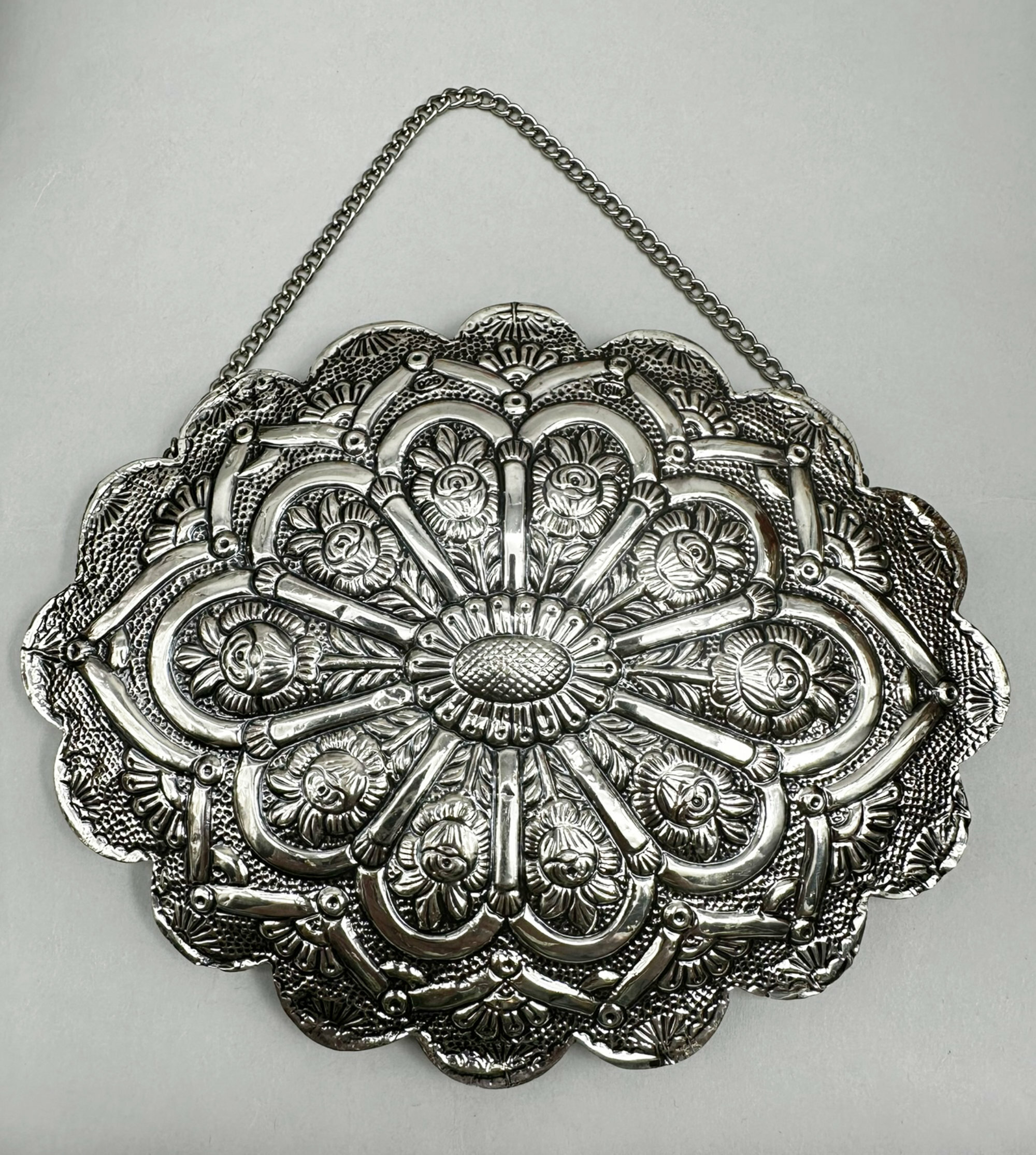
Outstanding Ottoman silver marriage mirror, Turkey early 20th century
Price: £125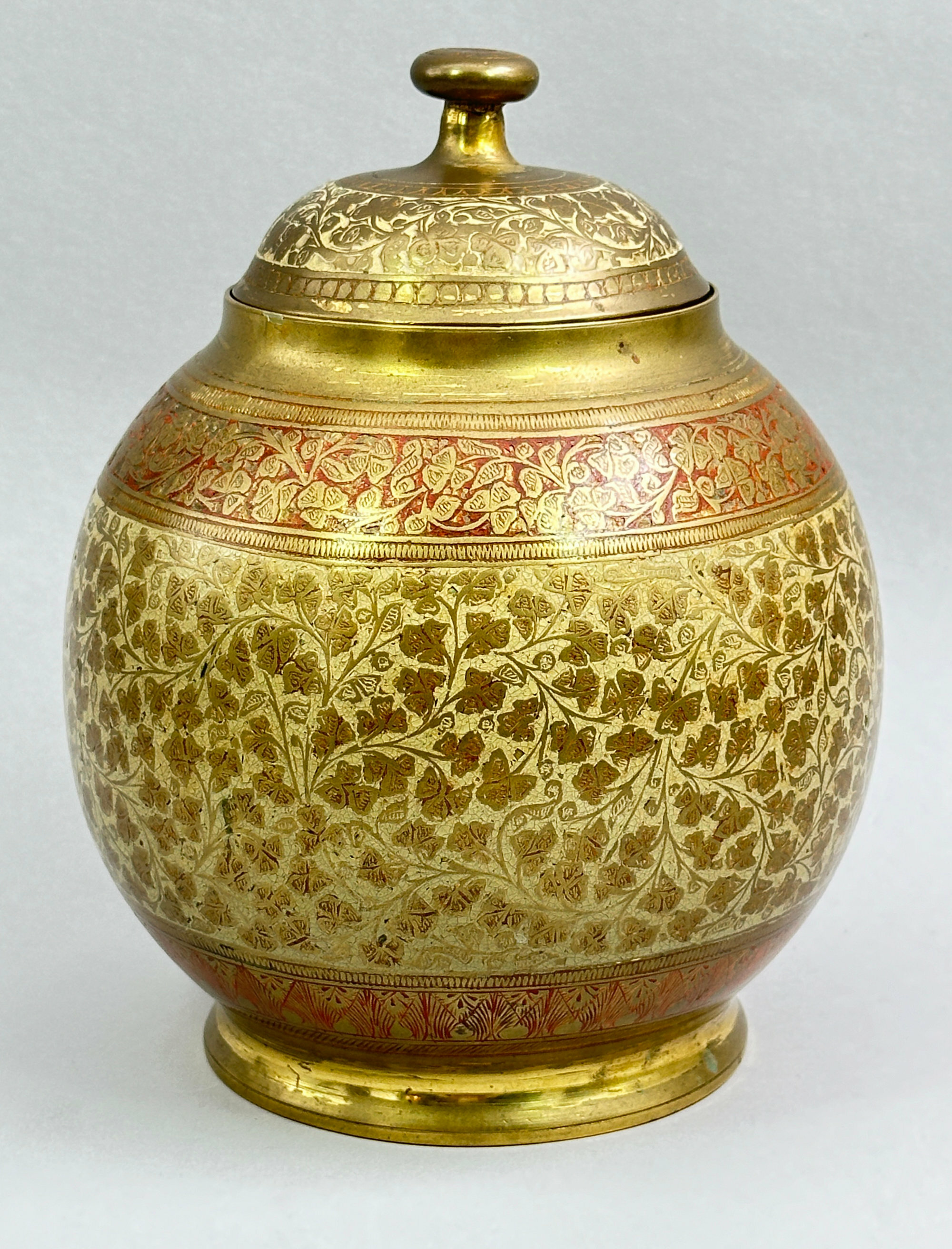
Indian Brass Potiche and Cover, early C20th
Price: £45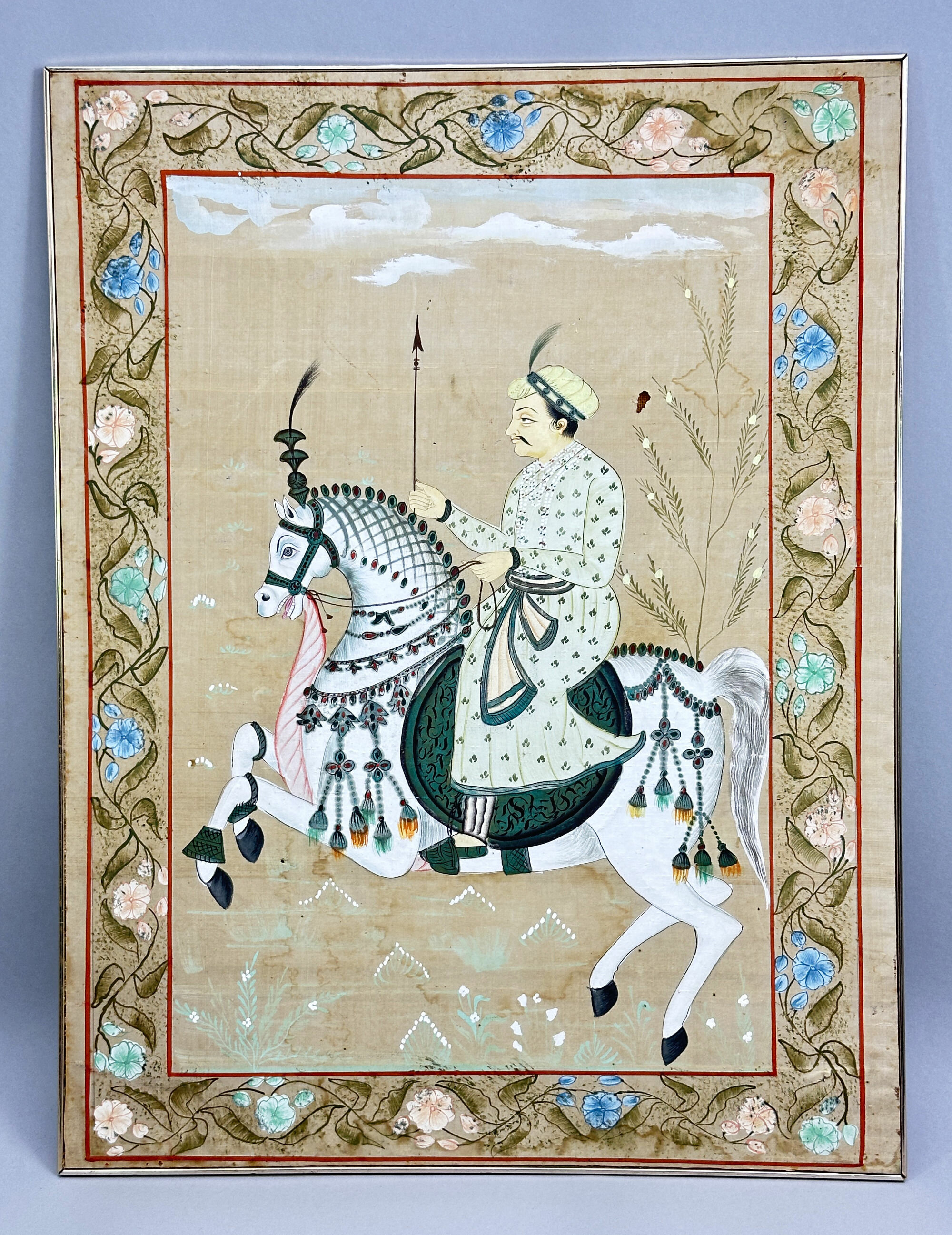
Persian Gouache painting on silk of a horseman, C 19th
Price: £25The style of painting here and the use of silk as the medium are typical of Persian work, and the detail of the brushwork, notably the man’s hair and the horse’s head suggest nineteenth rather than twentieth century workmanship and while a little age worn, this is a striking example of the genre.
Please note that the silk is glued to the hardboard backing at the reverse (see image 10); the simple gilt frame is just fitted to the edge and the piece is not glazed.
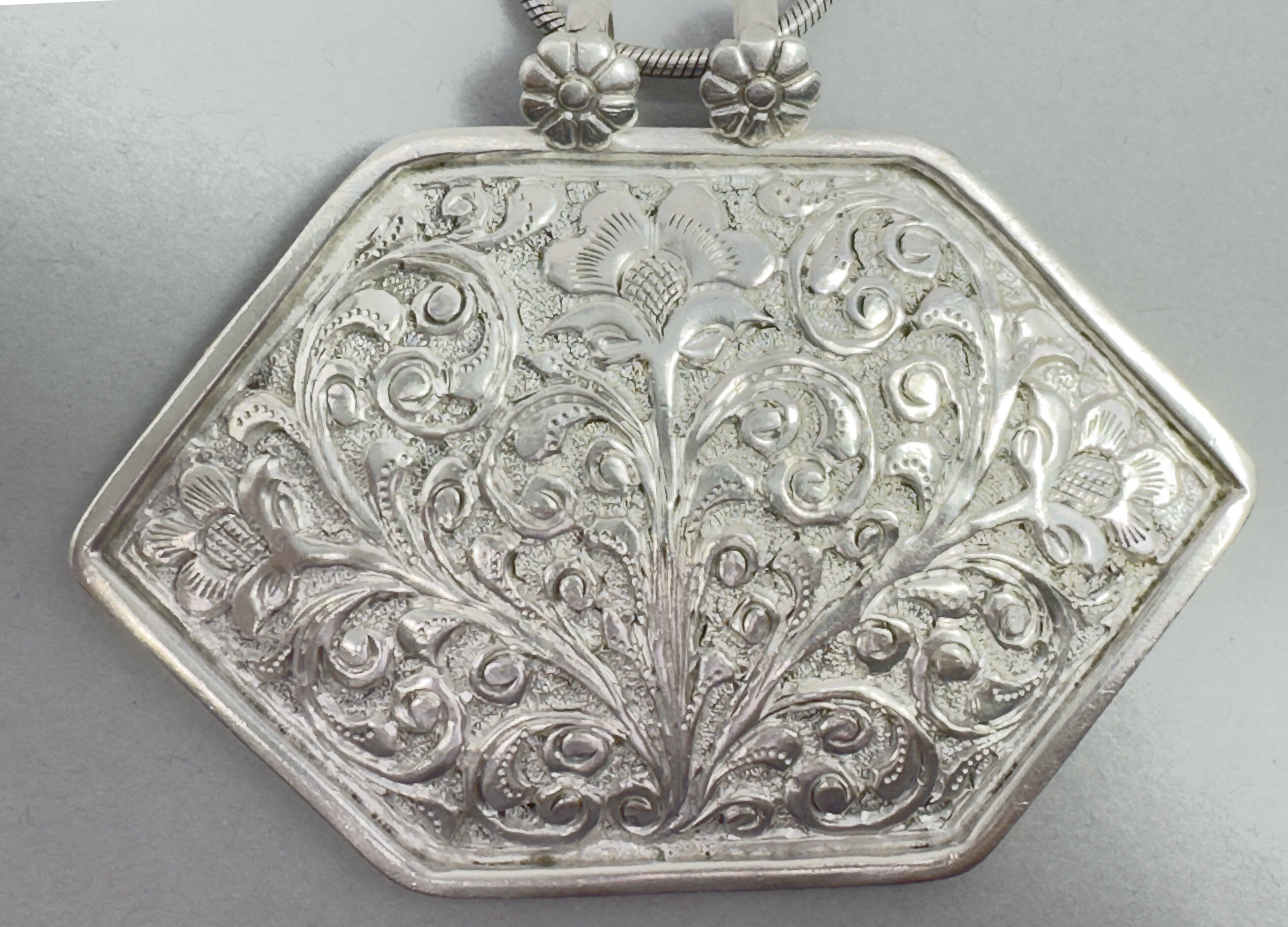
Very fine Indian silver repousse plaque Necklace, c1970
Price: £55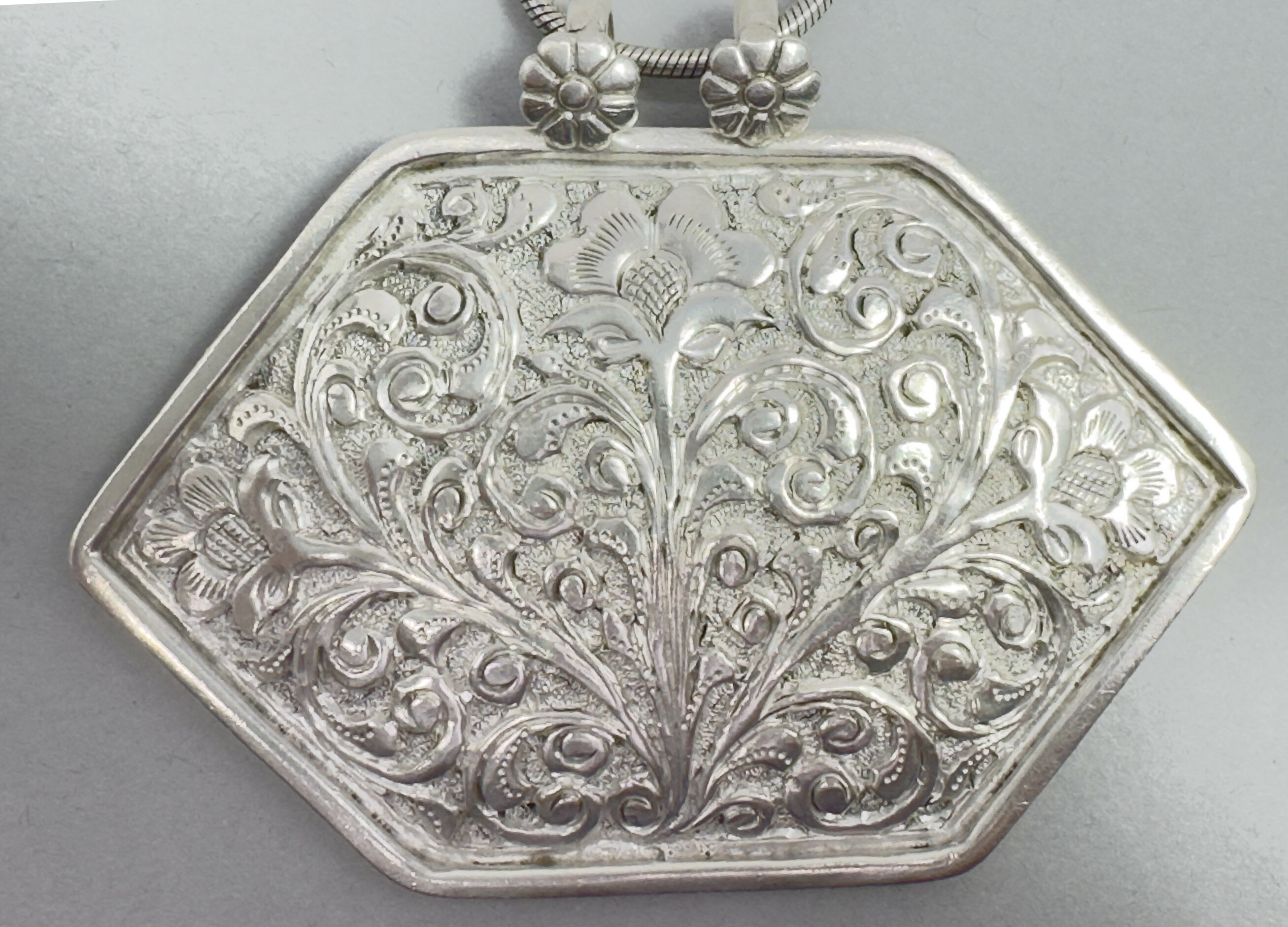
Very fine Indian silver repousse plaque Necklace, c1970
Price: £85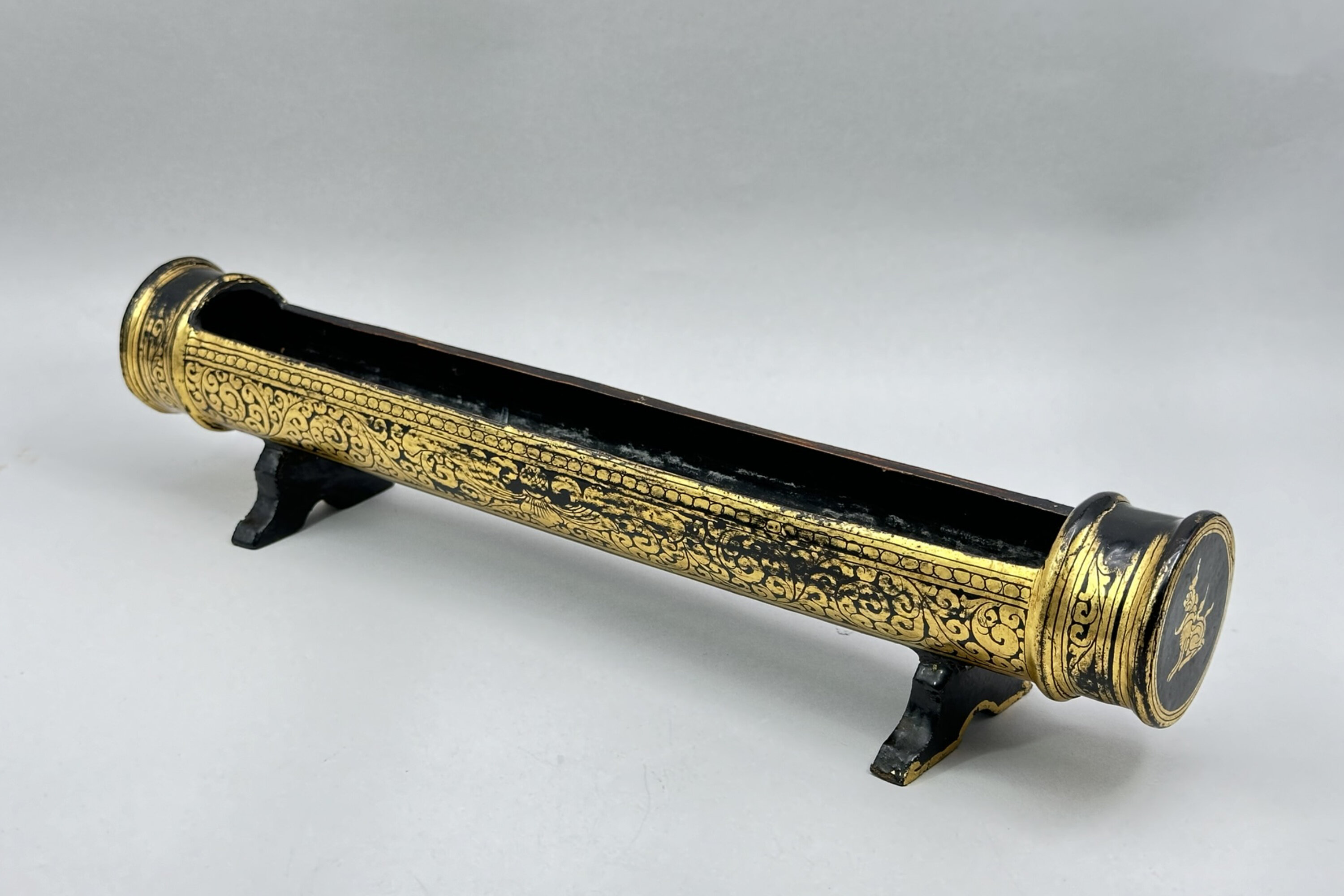
Burmese Black Lacquer and Gilt Scroll Stand, C20th
Price: £25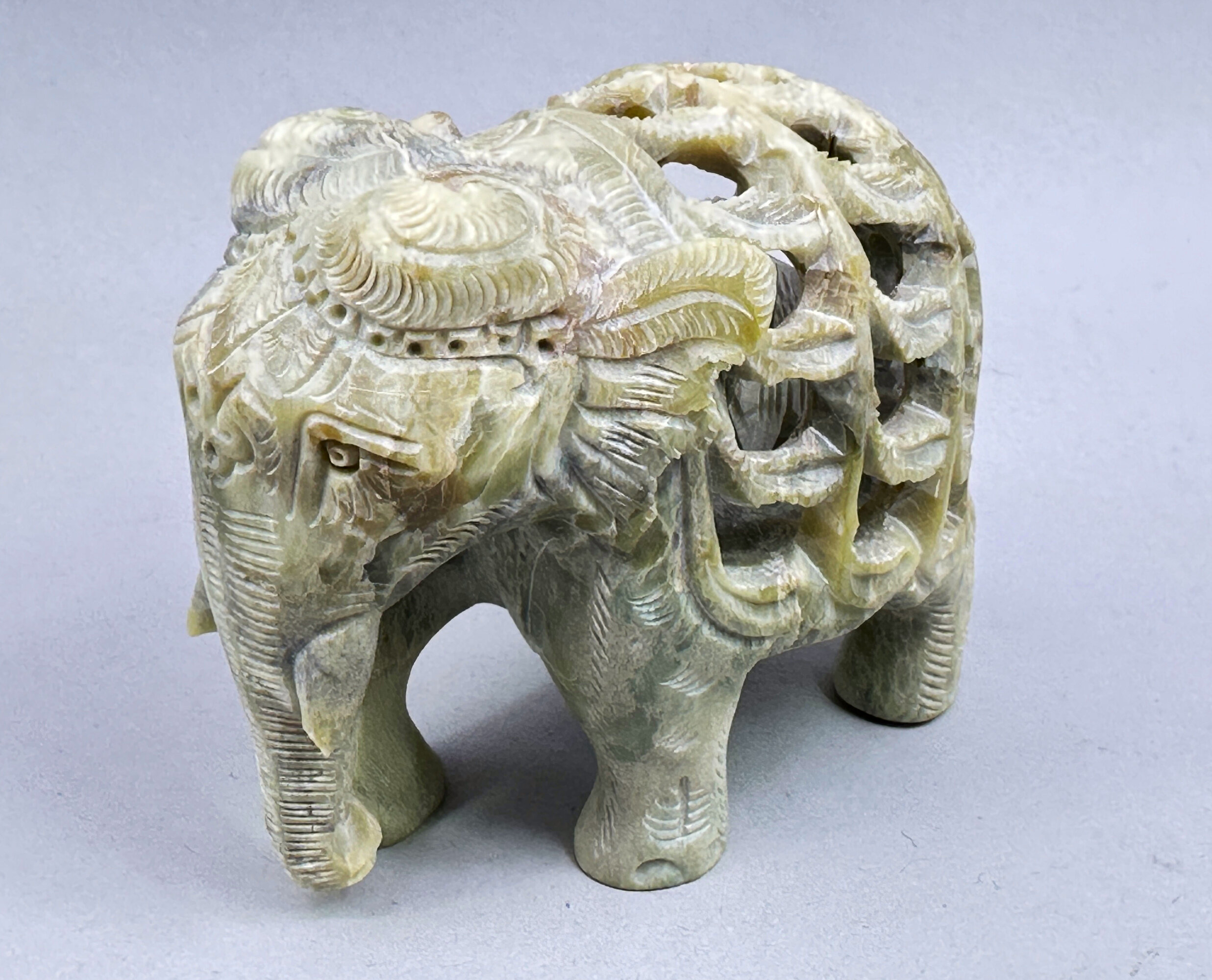
Indian carved Soapstone Figure of an Elephant and Baby Elephant
Price: £25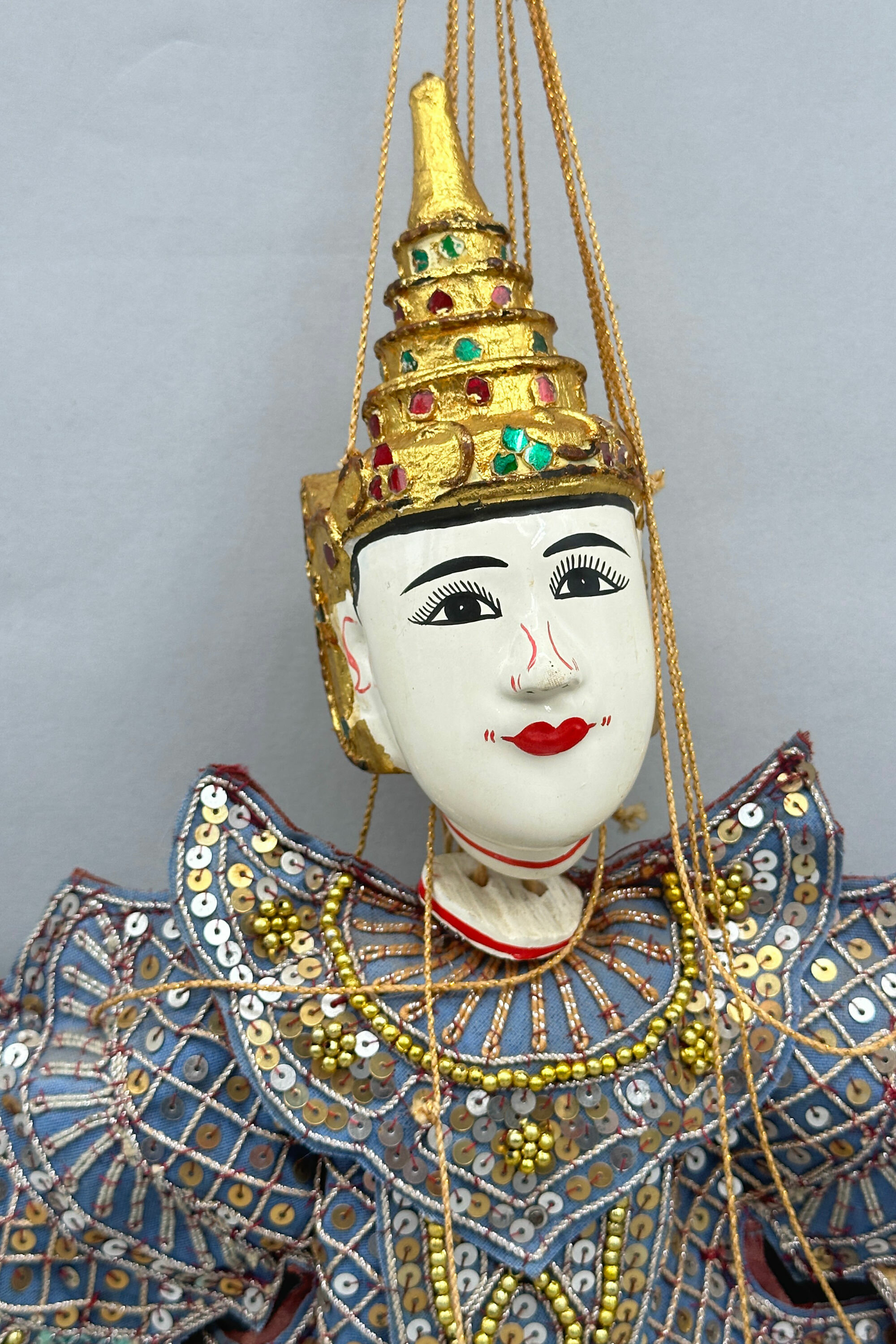
Marionette Puppet of a Dancing Lady or Princess, probably Burmese late C20th
Price: £45The style of the dress suggests Burmese work and very similar fabric decoration can be seen in the cloth wall hangings also included in this sale. Burma has a tradition of marionette puppetry (marionettes are a specific form of puppet where the figure is controlled by strings or rods) which dates back to the late eighteenth century and is still popular today with visitors to the country, now called Myanmar. Termed ‘Yoke thé’, the Burmese marionette tradition allowed political commentary under the guise of of an entertainment display. The standard ‘troupe’ comprised twenty seven characters, both animal and human, and this lady figure is probably the ‘princess’ (‘Minthami’). She is a fine example of the genre and probably dates to the 1990s when General Khin Nyunt of the ruling junta lent official support to marionette actors and troupes in an attempt to revive a tradition which had fallen somewhat into decline.
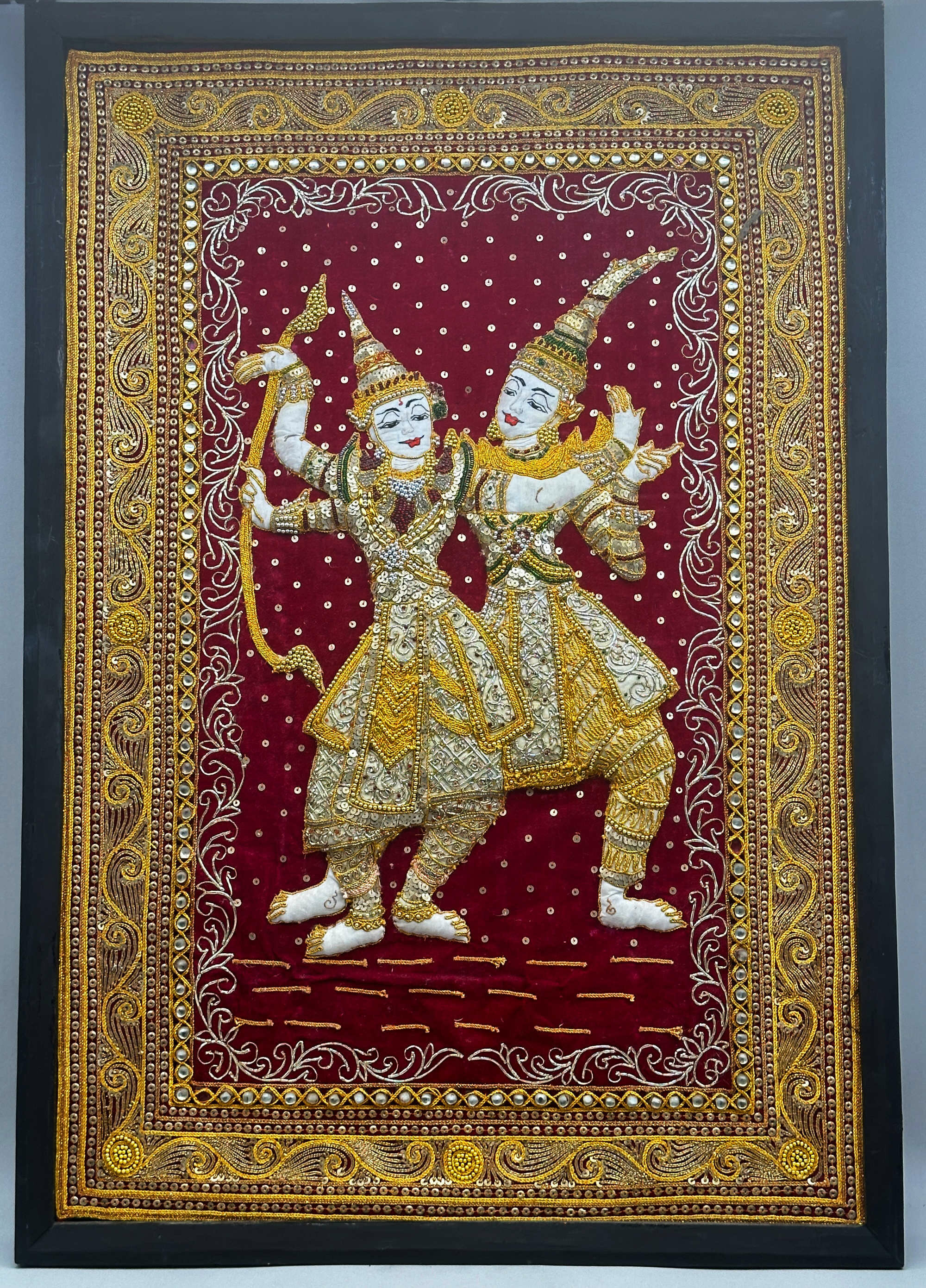
Large Burmese Textile with two dancing figures, probably second half C20th
Price: £110The distinctive style of embroidery and applied work here is typical of Burmese work known as ‘Kalaga’ which means ‘curtain’ in Burmese and is used to refer to heavily embroidered appliqué tapestry sewn with a technique called ‘shwe gyi do’. First produced around 150 years ago, Kalagas are generally linen, silk, cotton or velvet background fabrics embellished with sequins, embroidery, beads, coloured stones, tiny pearls, coral, braids and metal threads, the choice of materials depending in part on the client’s budget. Cotton padding was used to produce the ‘3D’ effect seen here and on many other examples of the work. The elaborate decoration meant that some of the larger pieces could take many months to produce which is likely to have been the case here. Dating is difficult and a mid C20th attribution here is probably sensible but an earlier period of manufacture is quite possible. The hanging has been recently mounted on board and fitted with a simple frame making it ready for display in a contemporary interior.
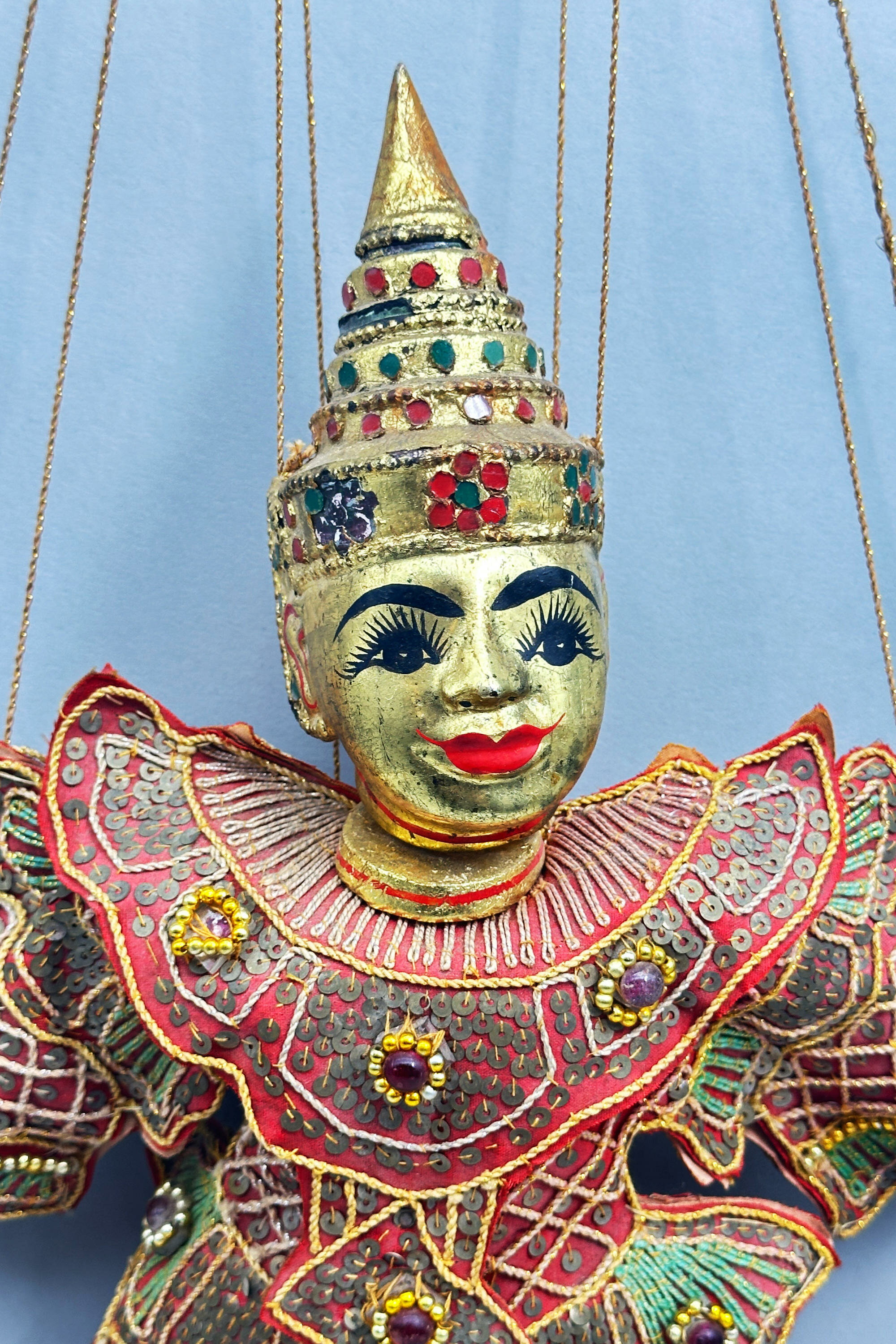
Marionette Figure of a Prince, probably Burmese mid C20th
Price: £45The style of the dress suggests Burma which has a tradition of marionette puppetry (marionettes are a specific form of puppet where the figure is controlled by strings or rods) dating back to the late eighteenth century and still popular today with visitors to the country, now called Myanmar. Termed ‘Yoke thé’, the Burmese marionette tradition allowed political commentary under the guise of of an entertainment display. The standard ‘troupe’ comprised twenty seven characters, both animal and human, and this male figure is probably the ‘King’ (‘Mintayar gyi’). Dating is probably to the mid C20th and a little earlier than the female marionette figure also included in this sale. This figure is rather more majestic as befits his regal status.
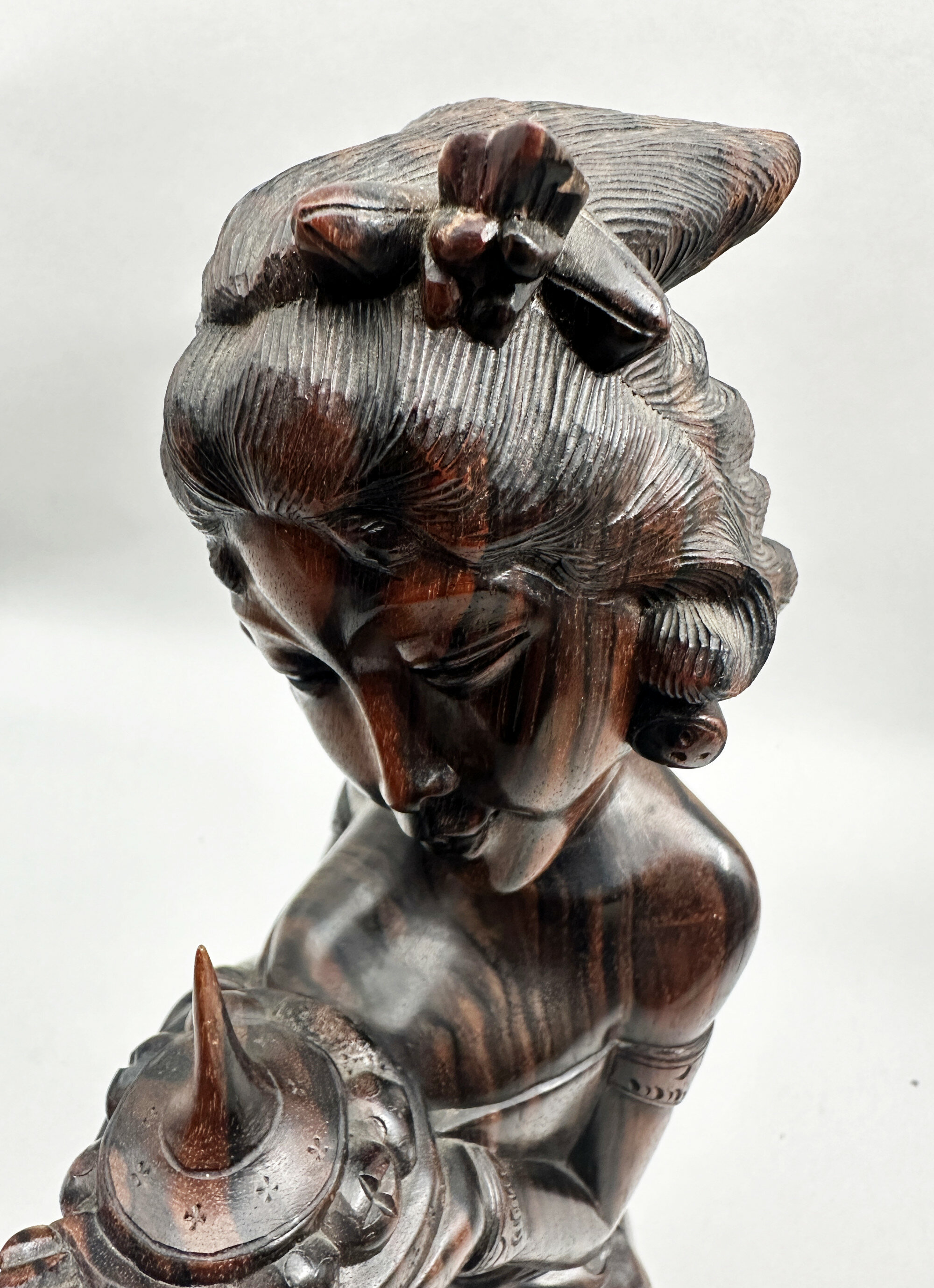
Vintage Carved wood figure of a Lady, Bali, Indonesia, second half C20th
Price: £45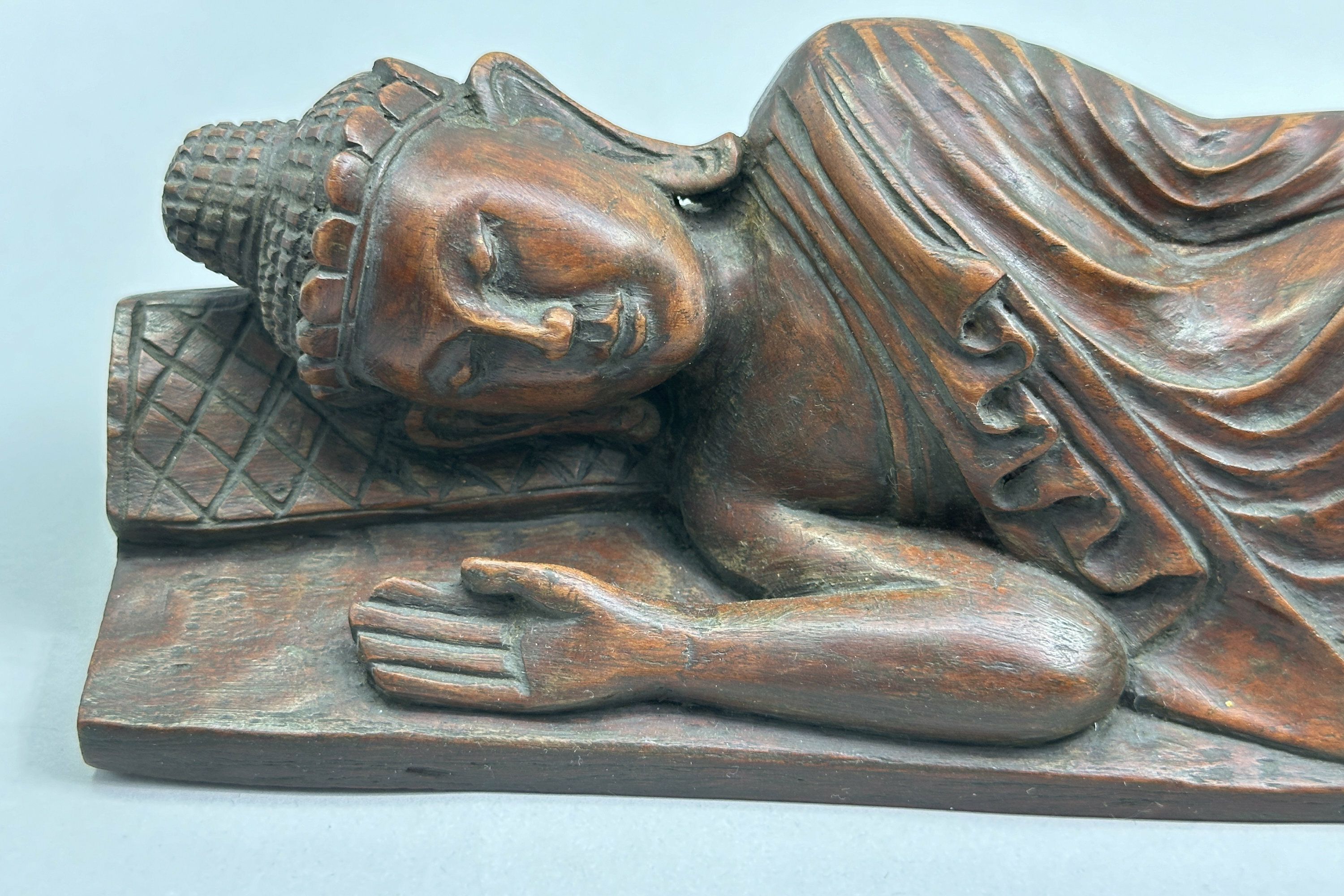
Burmese wood figure of a reclining Buddha with worshipper, C20th
Price: £25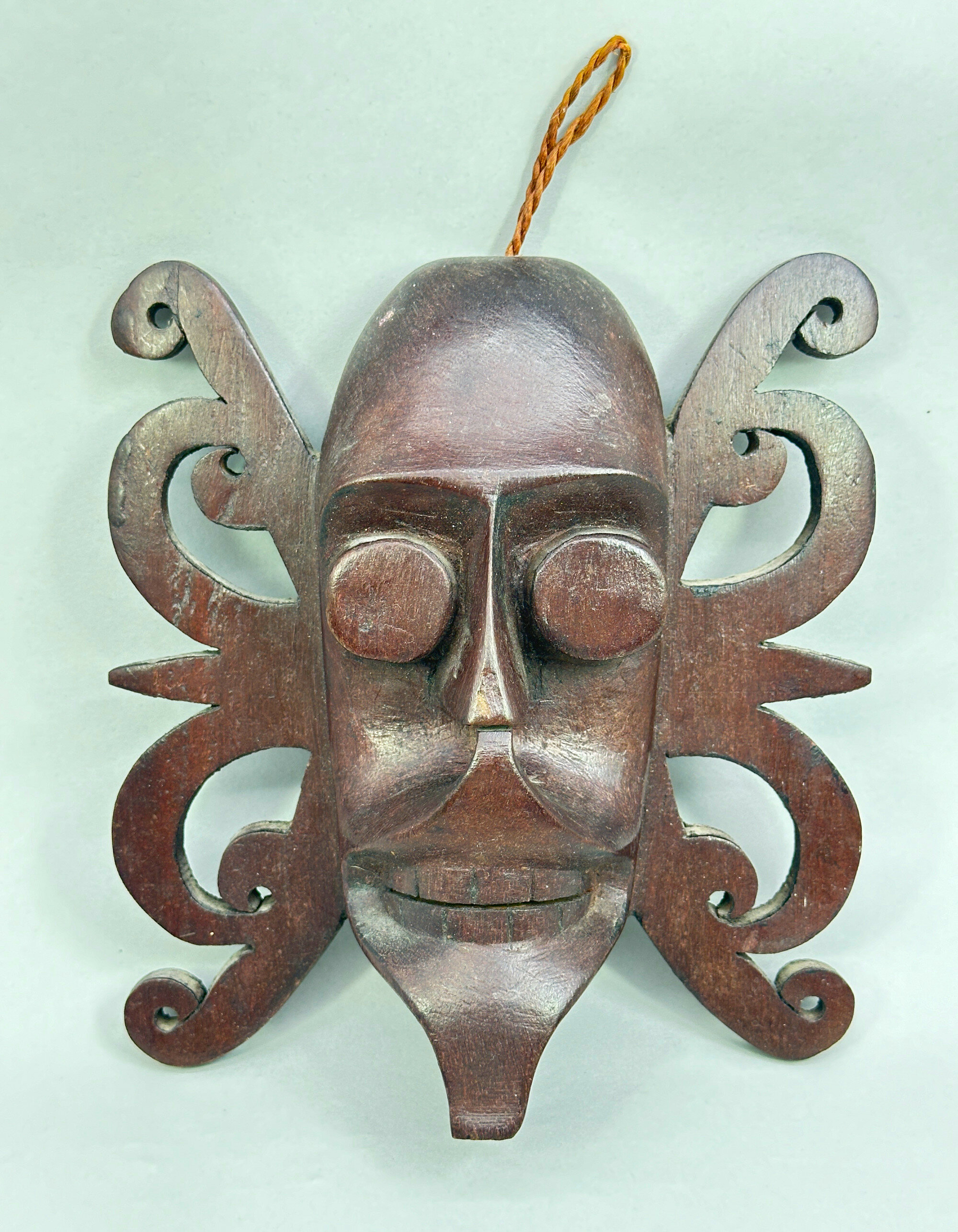
Wood Mask, Borneo late C20th
Price: £25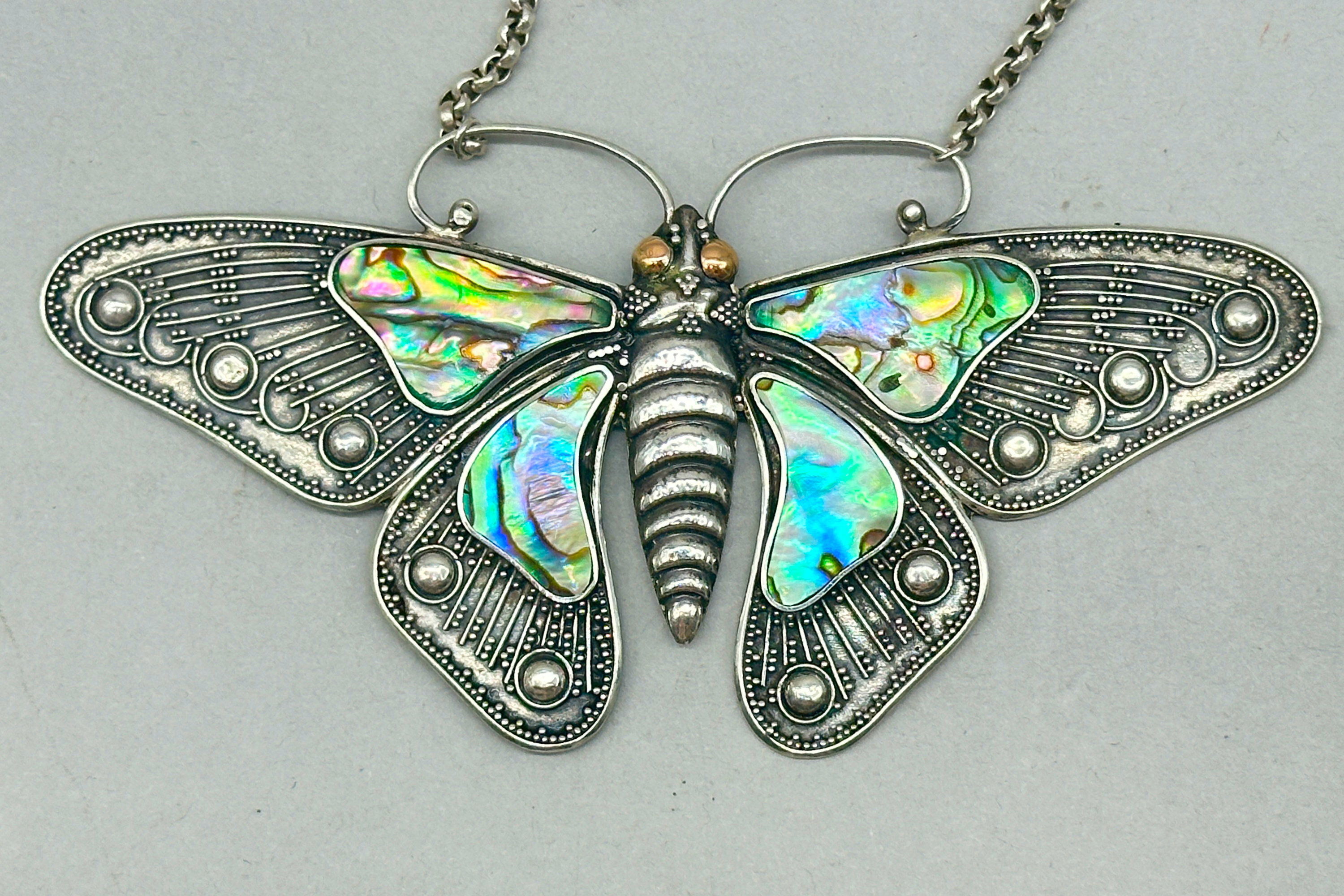
Silver Butterfly form Pendant set with Abalone, Bali, C20th
Price: £95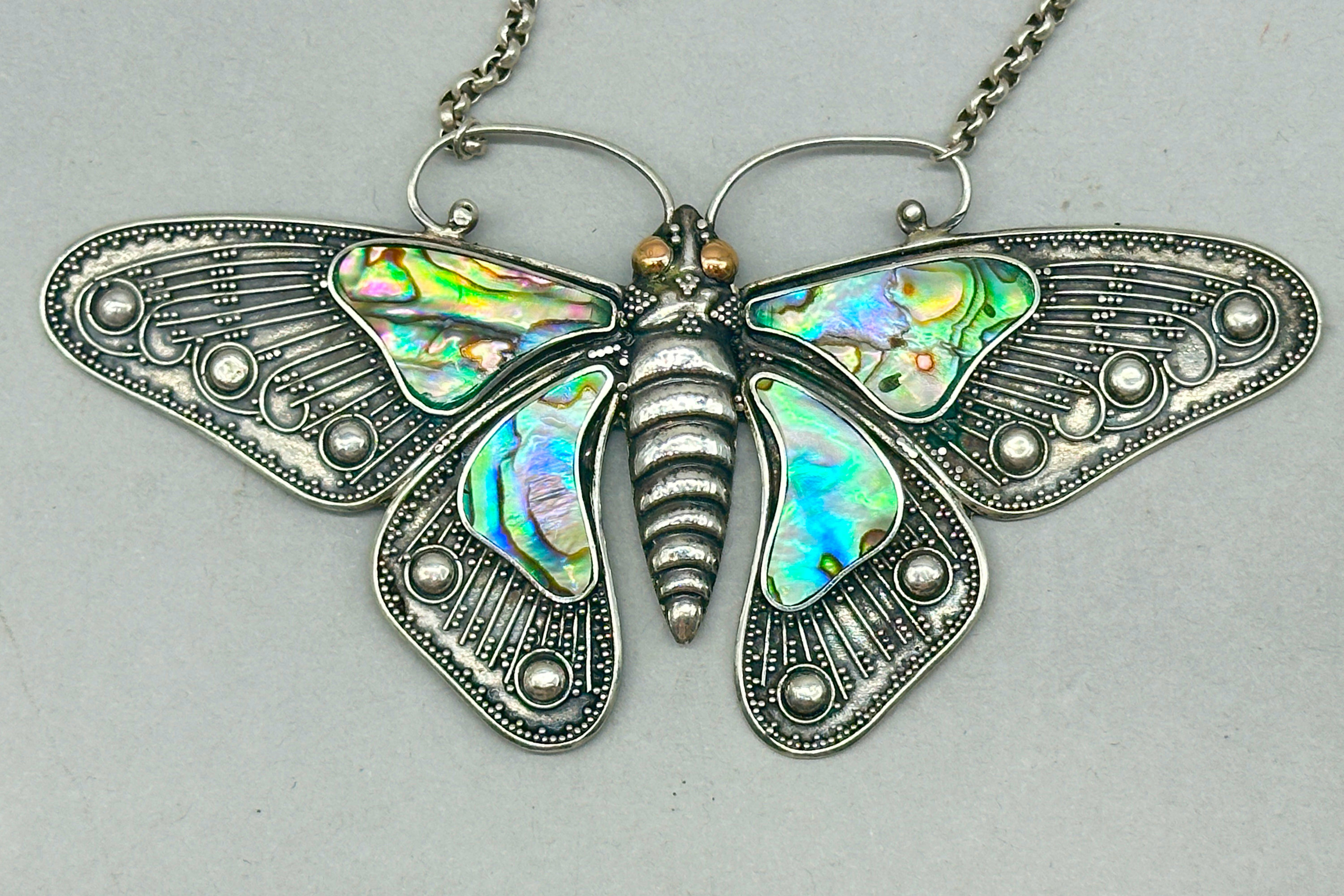
Silver Butterfly form Pendant set with Abalone, Bali, C20th
Price: £95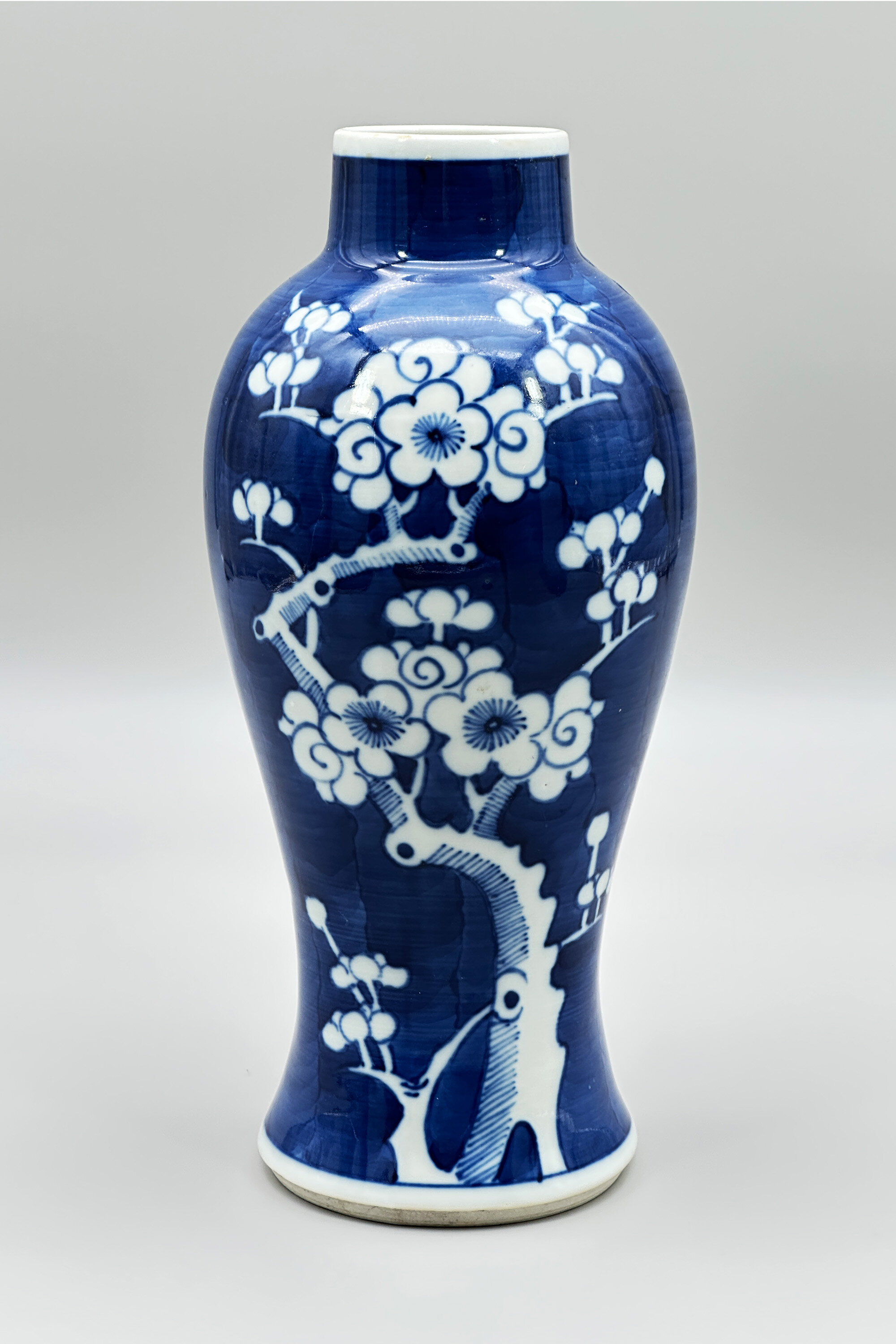
Chinese Blue and White Vase decorated with flowering Prunus circa 1900
Price: £55Flowering prunus or plum blossom is one of the most iconic of the decorative designs used by Chinese potters and first appears in the Kangxi period (1662-1722). Kangxi ginger jars in the pattern were highly prized by Victorian collectors with one example, the legendary ‘Huth’ jar, fetching 5900 guineas, a little over £6000, at auction in 1905, a price equivalent to over a quarter pf a million pounds today. The tree symbolises perseverance and renewal and was usually shown against a pattern of ‘cracked ice, representing the end of Winter and the beginning of Spring. Branches of plum blossom convey the ‘Five Blessings’ : longevity, wealth, health, love of virtue and a peaceful death. The number five was an auspicious number for the Chinese and is reflected in the five petal form of the prunus flower.
Once evolved, the design was continuously repeated by Chinese potters and is even produced today. Many of late nineteenth century pieces display a rather more slapdash interpretation of the pattern as here where the ‘cracked ice’ of the eighteenth century pieces is replaced by the repeated brush strokes of a blue wash ground and the painting of the tree itself is sketchy. The style of decoration and the paste of the foot indicate a circa date to around 1900, but this modest interpretation of centuries old pattern still possesses a charm of its own.
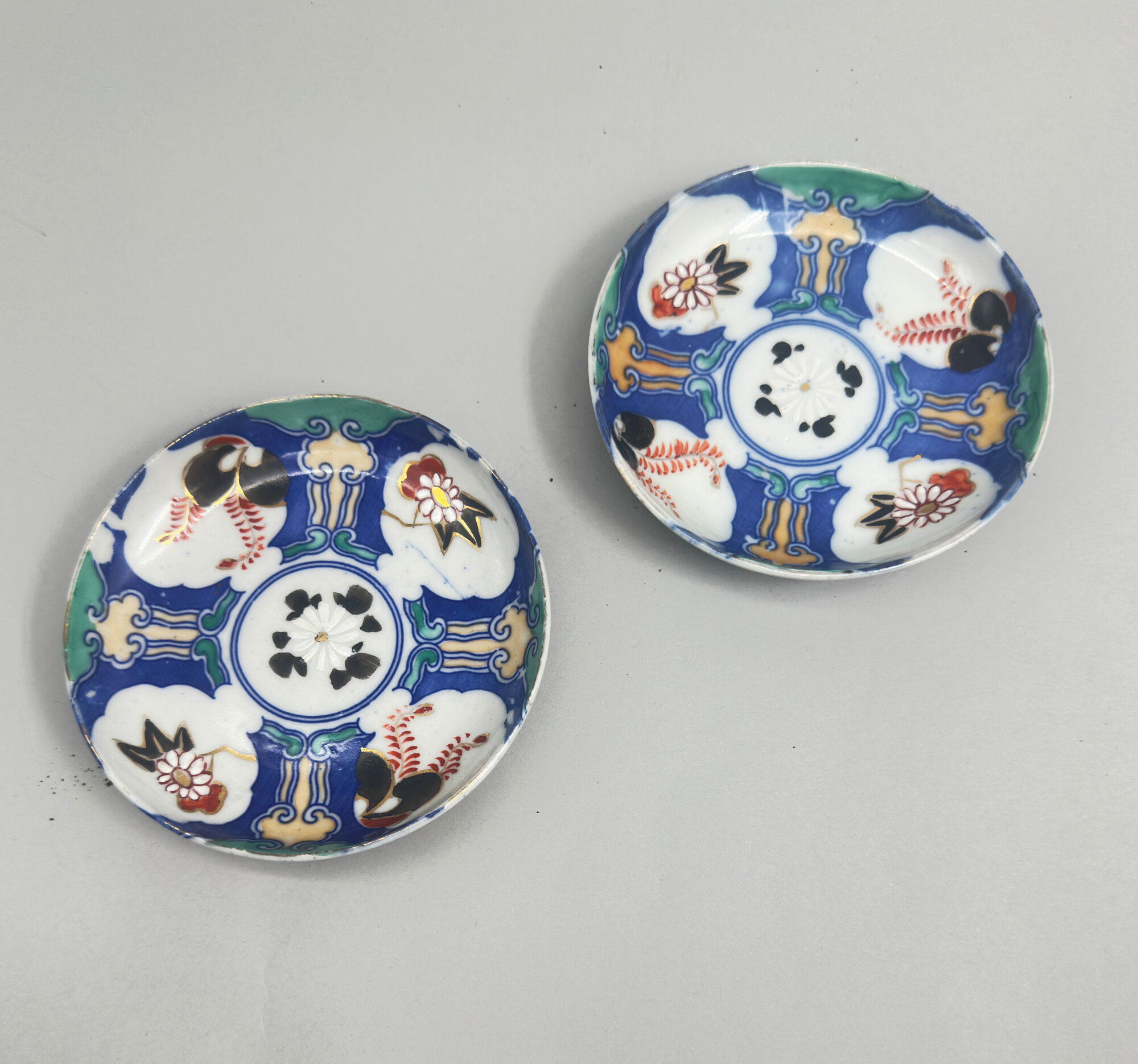
Pair of Japanese Arita small Dishes circa 1880
Price: £40The town of Arita in the former Hizen Province, northwestern Kyūshū island, was a major centre for the production of porcelains in Japan. Best known for blue and white pieces it also produced polychrome wares as well, including the familiar imari colourings. While similar to Imari, the wider palette of colours used here is usually termed ‘Arita’ and the decorative appeal of the style is clear. These bowls probably come from an original set of five and with slightly coarser decoration than usual were probably made for the domestic market. The paste of the foot implies a dating to the Meiji era (1868 - 1912) probably around 1880.
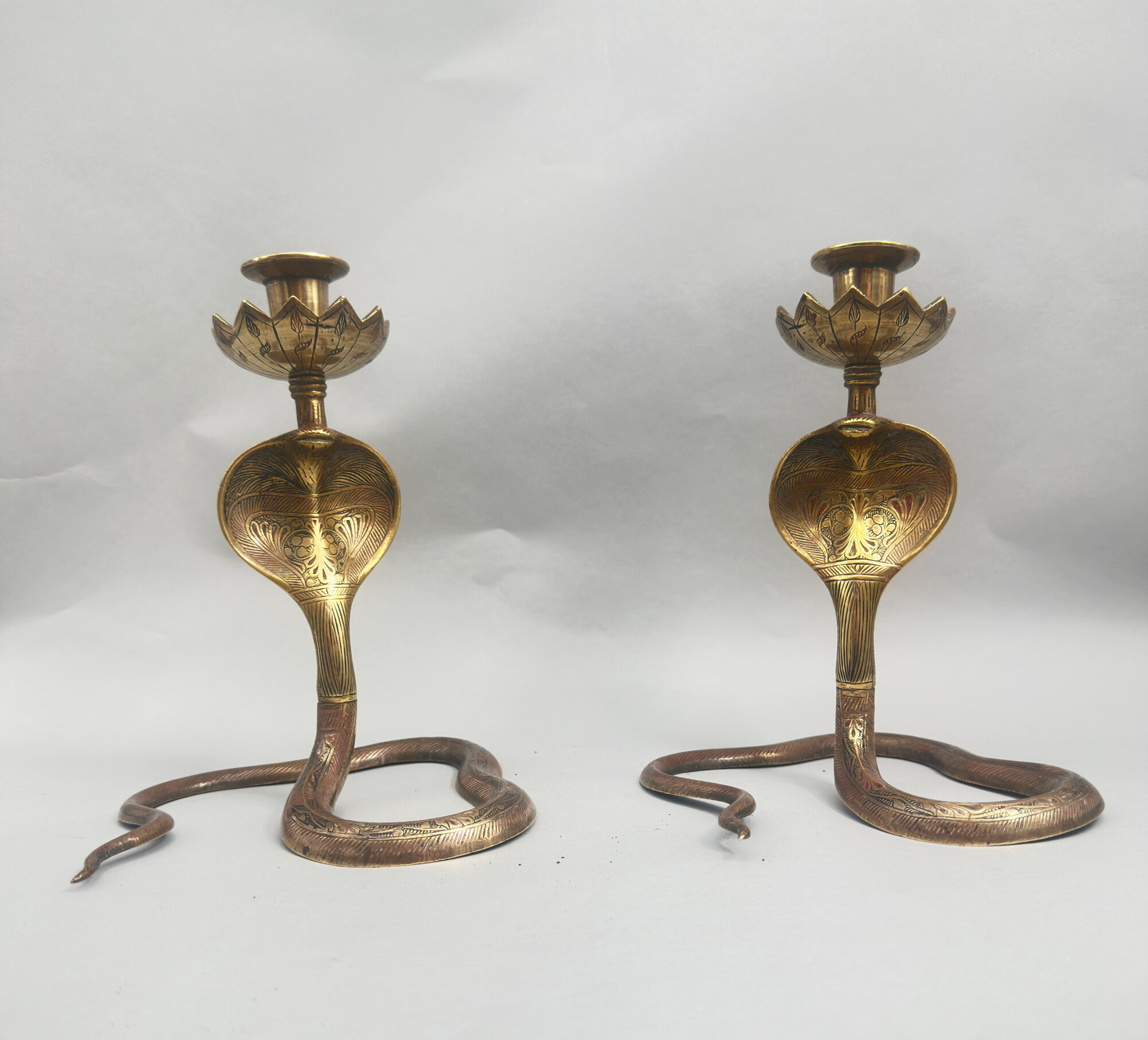
Pair of Indian brass candlesticks c1900
Price: £175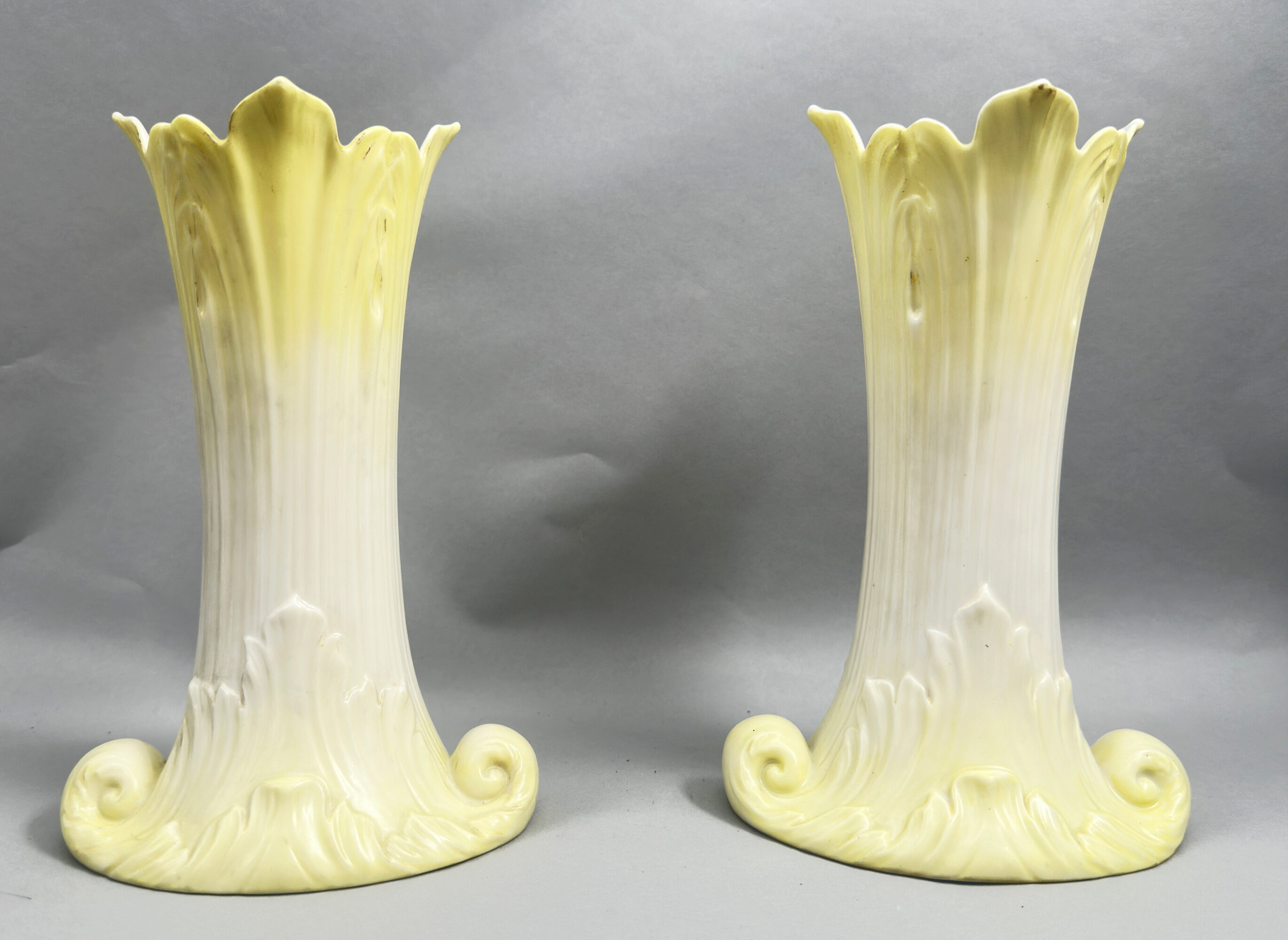
Pair of Royal Worcester Grainger and Co Vases, date mark for 1902
Estimate: £80 – 120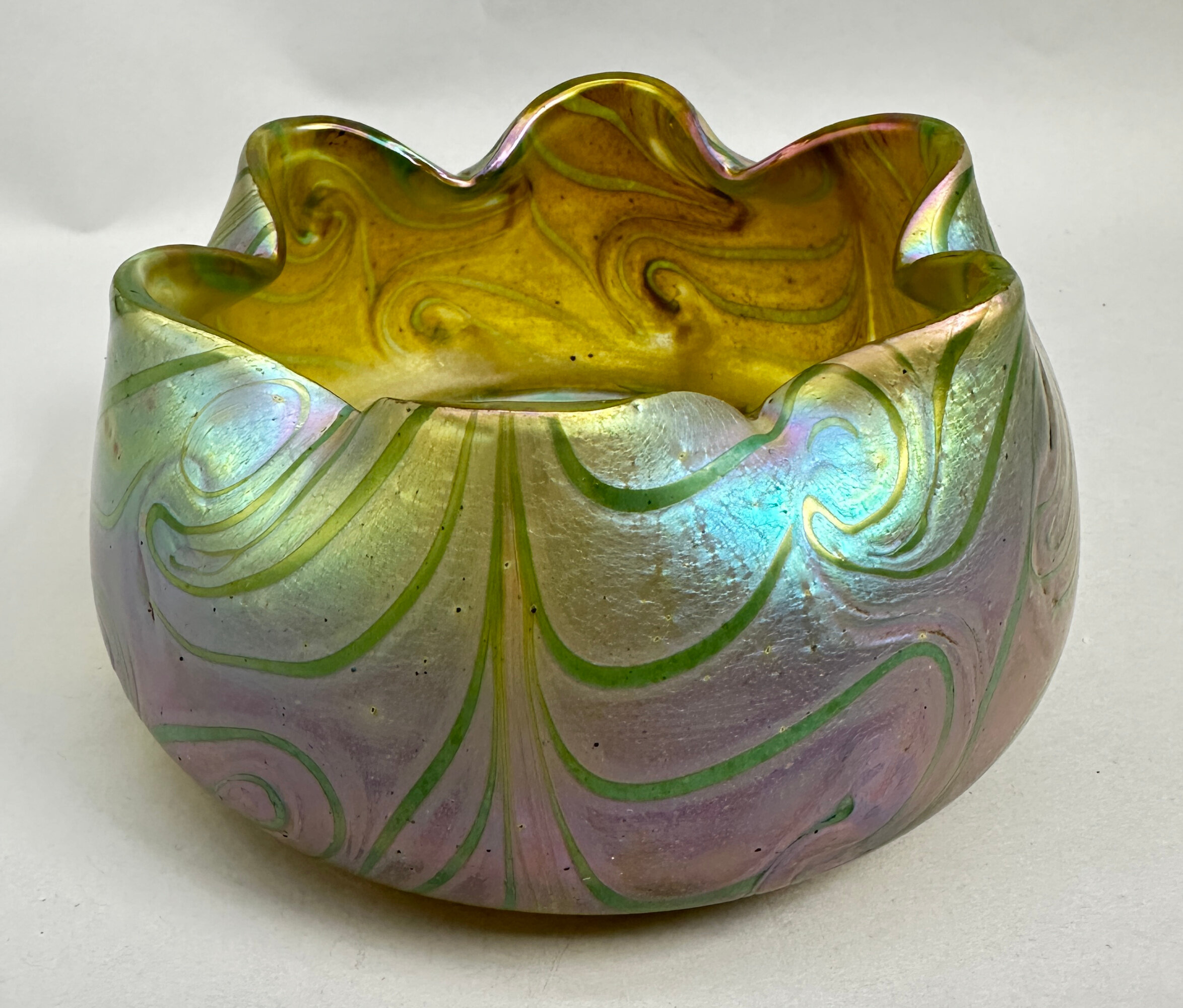
Loetz style glass Bowl, early C20th
Price: £110Most of the original Loetz pieces were not signed and there were many contemporary manufacturers making pieces in a similar style. There are, furthermore, modern reproductions. The attribution ‘Loetz’, is, inevitably, generously and loosely applied but sometimes true certainty is hard to achieve. Much information and assistance can be obtained from the website Loetz.com. On that basis this attractive bowl with its crimped rim and wavy line design on a purple ground is best regarded as Loetz style but probably contemporary with the output of the Loetz factory itself. It has great decorative appeal nevertheless.
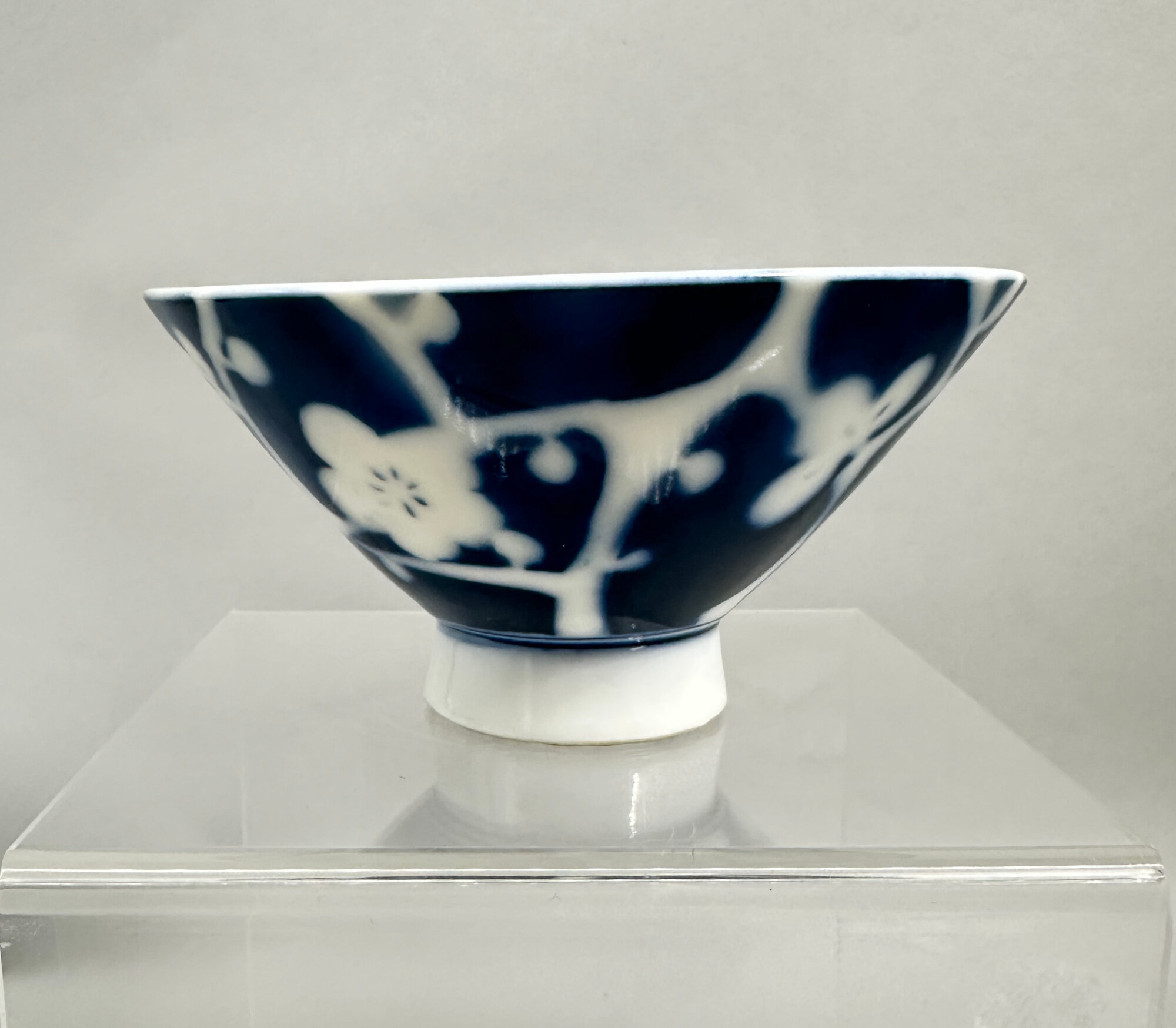
Japanese blue and white hat shape small Bowl with flowering prunus, C20th
Price: £25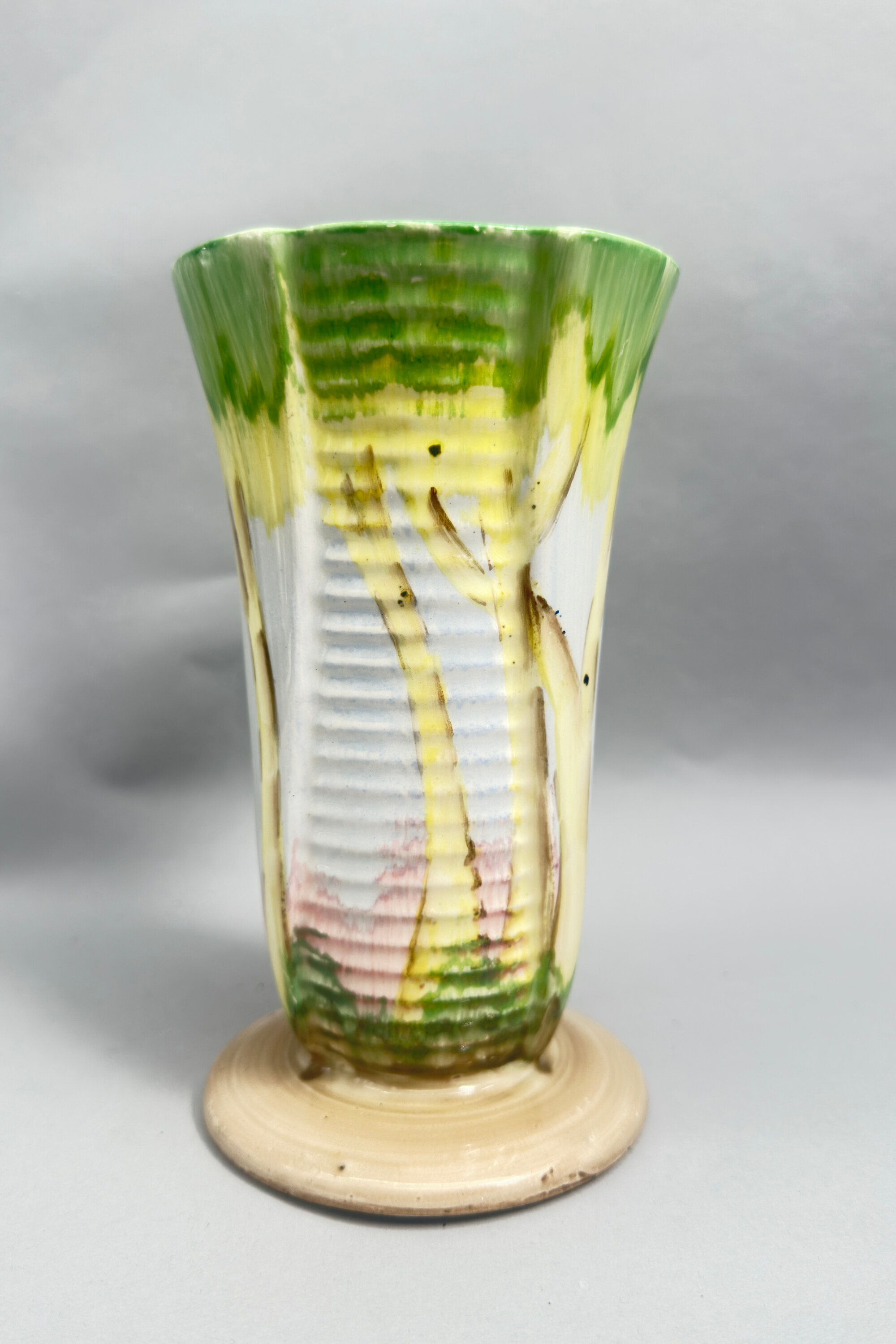
Art Deco style beaker form Vase, probably Beswick, mid C20th
Estimate: £20 – 30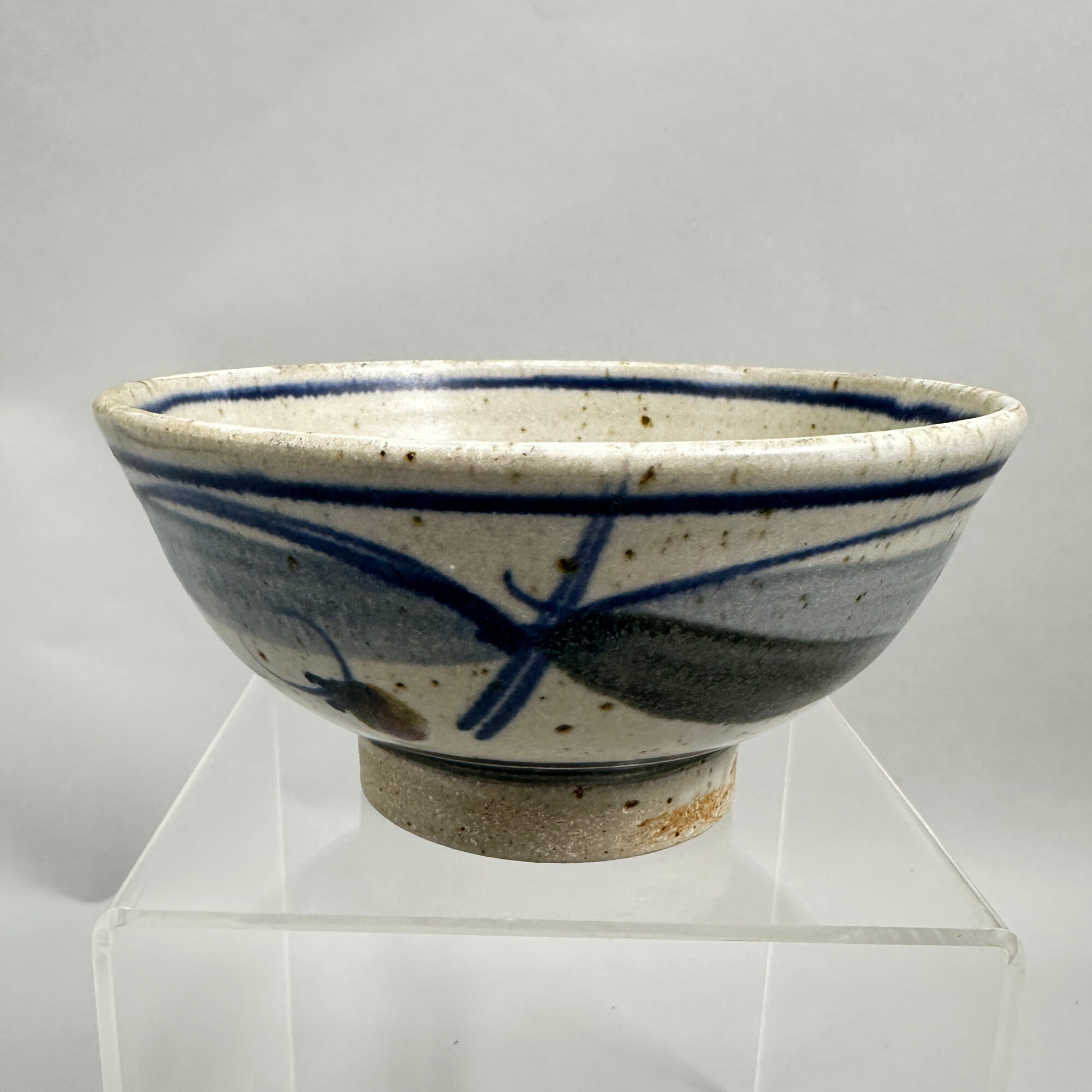
Studio Pottery Bowl, possibly Derek Clarkson (1928-2013) with impressed mark, C20th
Price: £55While it is not absolutely certain the mark on this piece is possibly that of Derek Clarkson (1928-2013). Clarkson trained at the Manchester college of Art between 1944-47 and Burnley School of Art from 1959-61 and then combined a successful lecturing career with the making of his own work which is now to be found in international and private collections including the Victoria and Albert Museum, London. In 1980 he retired from lecturing to focus on his work as a potter, continuing to produce pieces of great skill and attraction until his death in 2013. There are other pieces signed by him which strongly resemble the bowl here (see images 8,9) making it a possibility that this is his work. Certainly, the potter who created this piece and impressed his mark at the bottom was clearly accomplished and this bowl is more than worthy to stand comparison with pieces by more famous contemporaries.
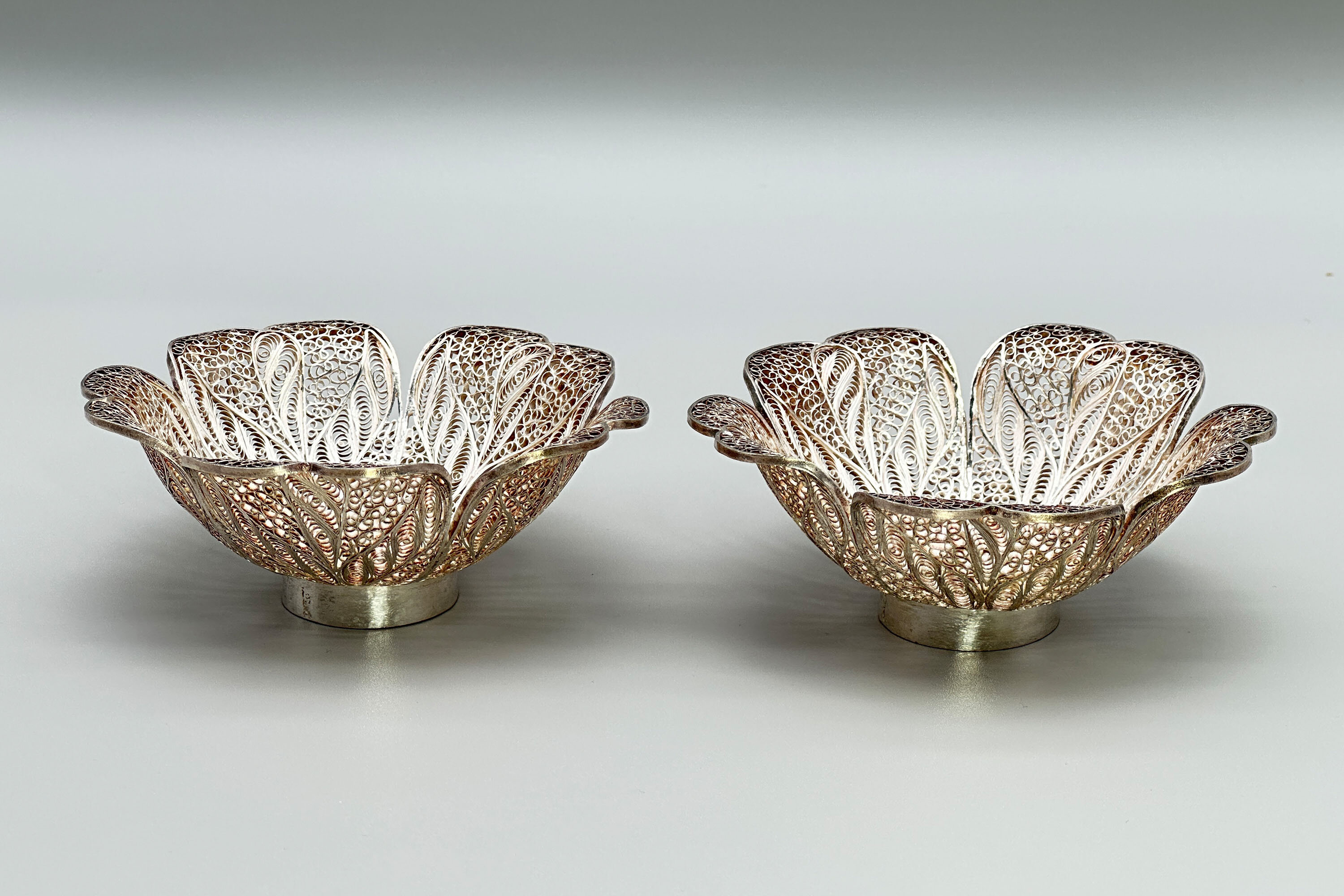
Pair of Silver Filigree Bonbonnieres, probably continental circa 1900
Price: £110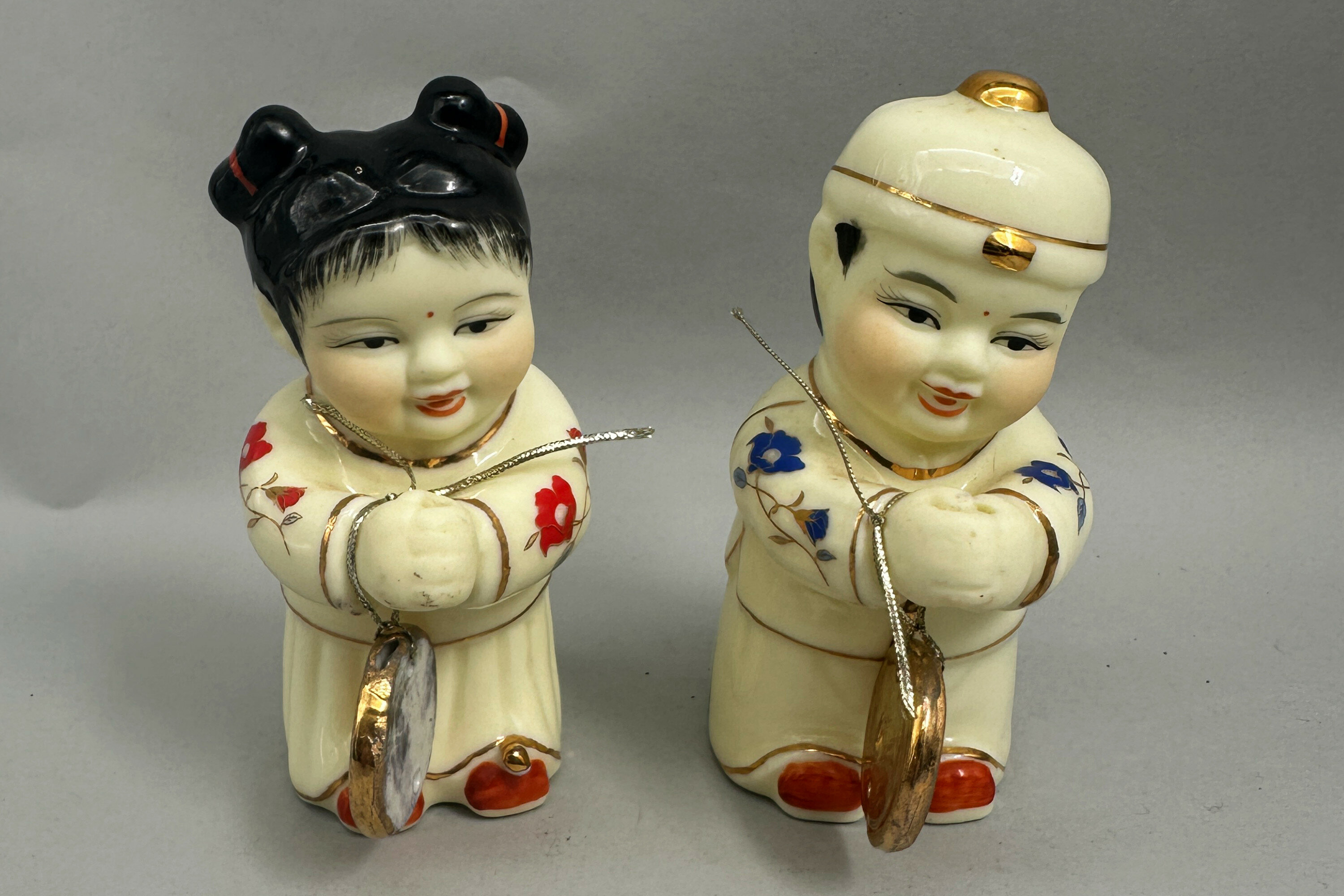
Decorative pair of Chinese ceramic figures of children, Yunu and Jintong , late C20th
Price: £45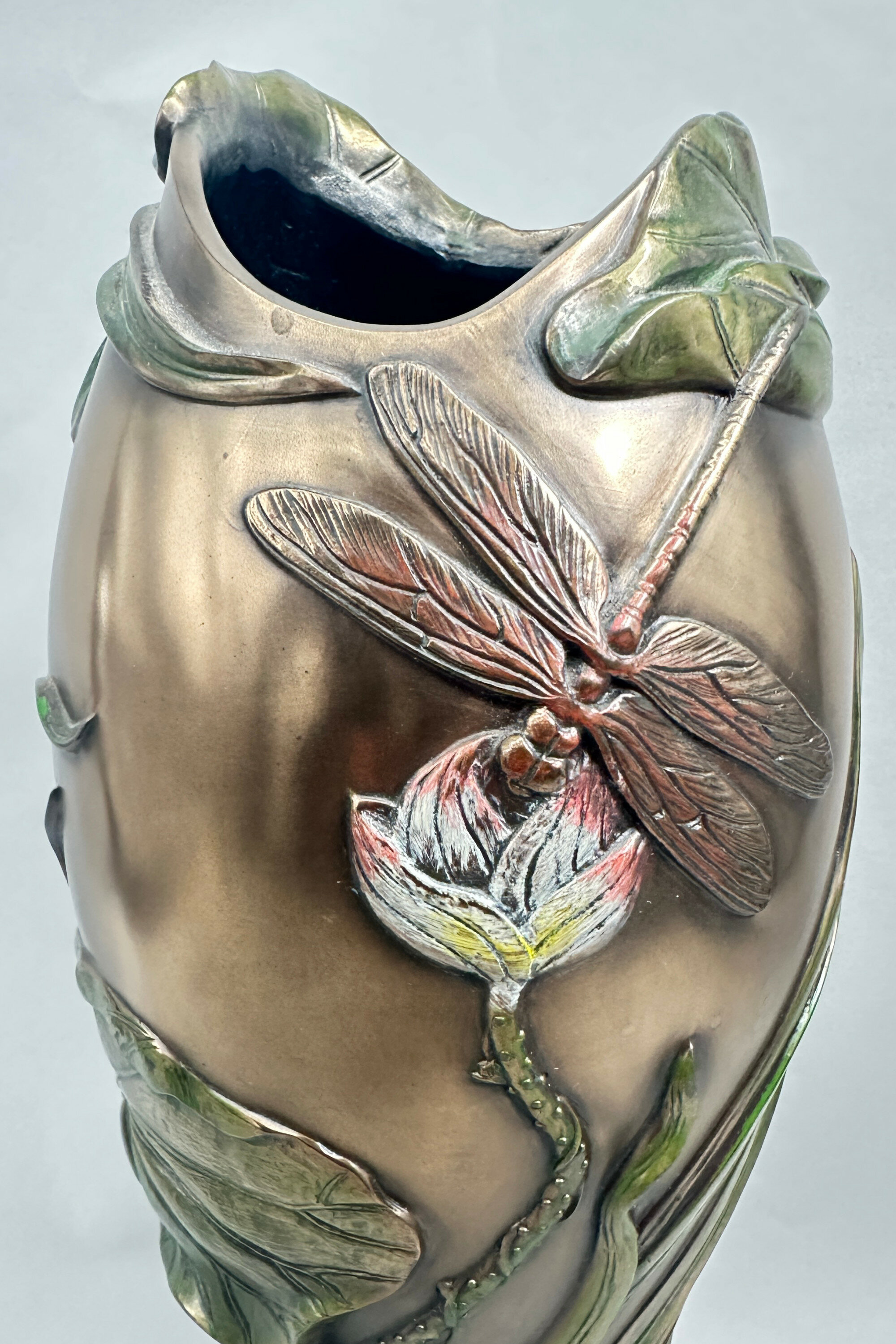
Past Times Art Nouveau Style Vase, Veronese Collection, 2004
Price: £45‘Past Times’ was founded in 1986 by John Beale, at first as a mail order company but then trading from physical stores and developing into a business which enjoyed enormous popularity with over one hundred shops in the early 2000s. The stock was focused on retro and vintage style items also including a wide range of licensed products, such as Harry Potter and Beatrix Potter merchandise. Badly impacted by the recession in 2008 it went into administration in 2012 and was bought by W.H.Smith a year later leading to the disappearance of its products from the marketplace.
This ‘Art Nouveau’ vase can be seen as an example of their range at its best. Manufactured with care it presents an appealing souvenir of the era it aims to recreate at a rather more affordable price than the authentic originals.
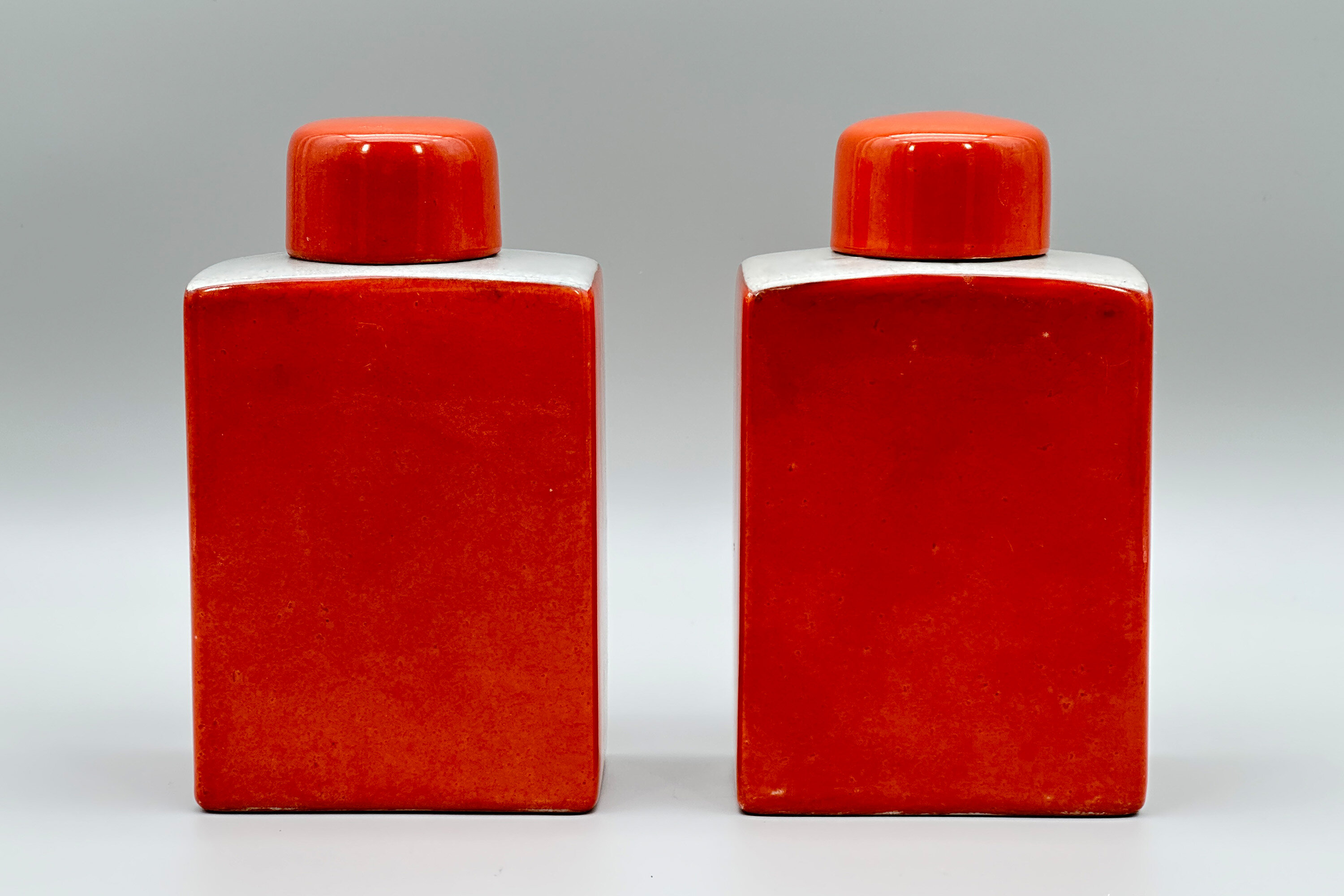
Pair of Orange Glazed Flasks and Covers, Fabienne Jouvin Paris, C20th
Estimate: £60 – 80